Chemistry and Chemists № 2 2024
Journal of Chemists-Enthusiasts
| Content | Chemistry experiments - video | Physics experiments - video | Home Page - Chemistry and Chemists |
|
Chemistry and Chemists № 2 2024 Journal of Chemists-Enthusiasts |
Plants as acid-base indicators - part 5, 6, 7 Volodymyr M. Viter |
|
Having noticed a mistake in the text, allocate it and press Ctrl-Enter
I repeated the experiment using a bright red tulip flower with a pink tint. They gave me a tulip at work. Since the journey to the house takes about an hour, I placed the flower in a jar, added tap water, and closed it tightly.
Two surprises awaited me at home. Firstly, the flower in the jar blossomed (opened) during the journey, increasing in diameter. The tulip had to be removed from the jar very carefully, so as not to damage the petals. Secondly, instead of clear and colourless water, there was... a dark violet liquid in the jar. It was reminiscent of the purple ink we were forced to write with in school many years ago (although ballpoint pens had become common long before that time). The colour of the tulip petals themselves has not changed noticeably. The fact that the flower opened inside a jar with water could have been foreseen. However, the dark violet colour of the tap water, coming into contact with the red flower, was a complete surprise to me. Tap water is slightly alkaline. Apparently, the water extracted the red pigment of the tulip, which turned purple in a slightly alkaline solution. I poured the violet water into a separate glass to conduct future experiments. As I write these lines, the experiments have already been completed, and their results were unexpected. But I should not get ahead of myself. First, I repeated the previous experiment with the flower itself. The goal was to get better-quality video, and this was partially achieved. The red tulip flower was placed in a glass, a concentrated ammonia solution was added, and the glass was covered with a Petri dish. The bright red flower gradually turned dark brown. I took the brown flower out of the glass, rinsed it with water and placed it in a clean glass. Then, I added glacial acetic acid. White smoke formed, and the dark brown flower turned bright red, restoring its original appearance. I noticed that the transition from brown to red began while the brown tulip was being washed with water. Acetic acid dramatically accelerated this process. This was the case in the previous experiment, but then I noticed this fact only during video editing. |

Red tulip, ammonia and acetic acid |
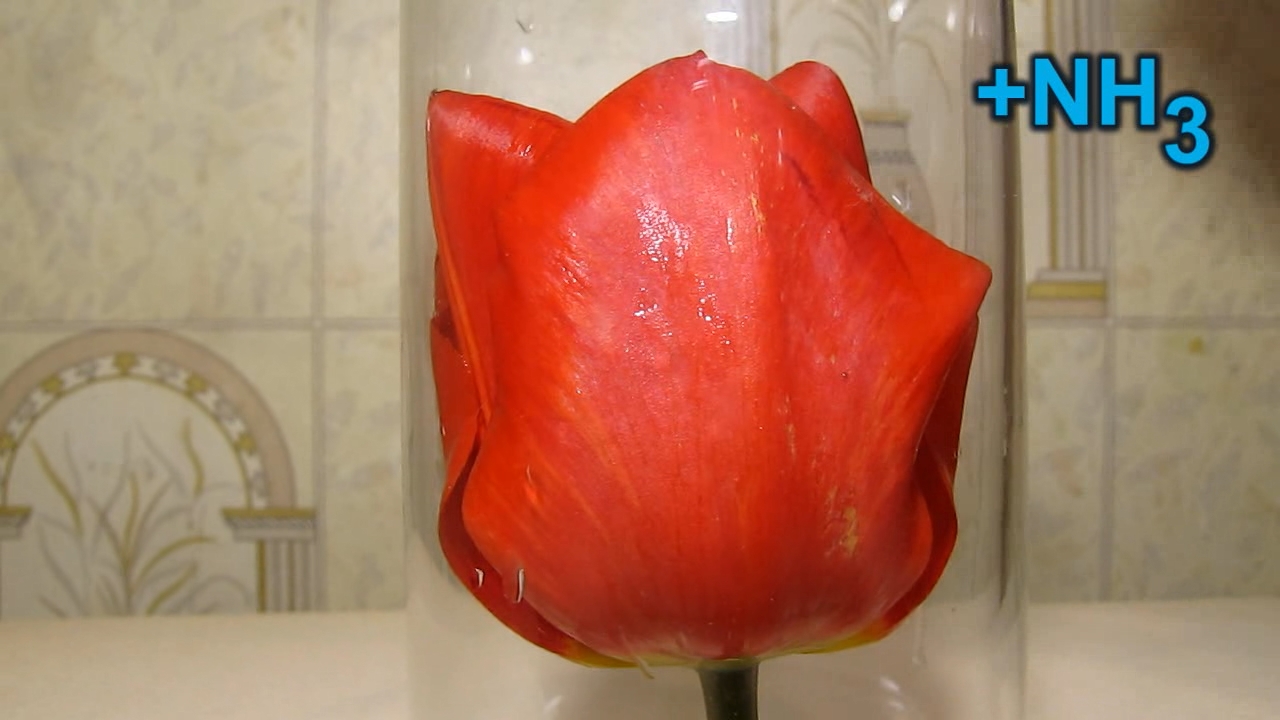
|

|
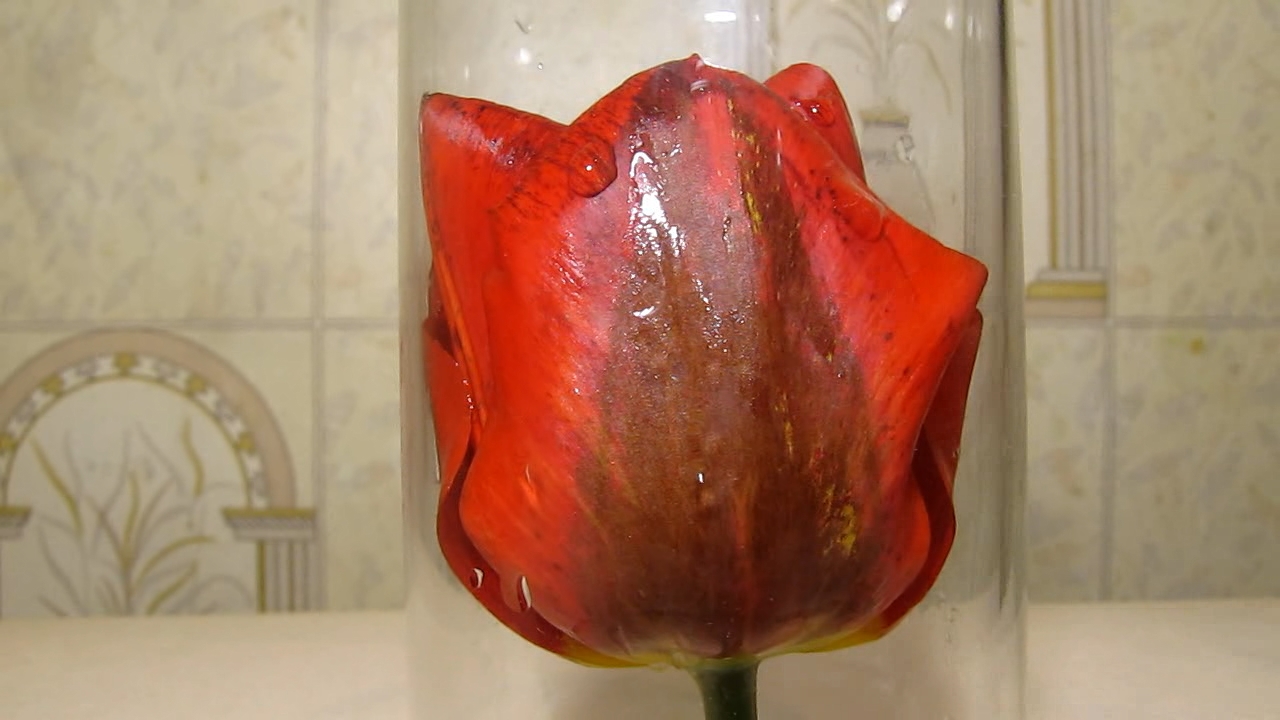
|
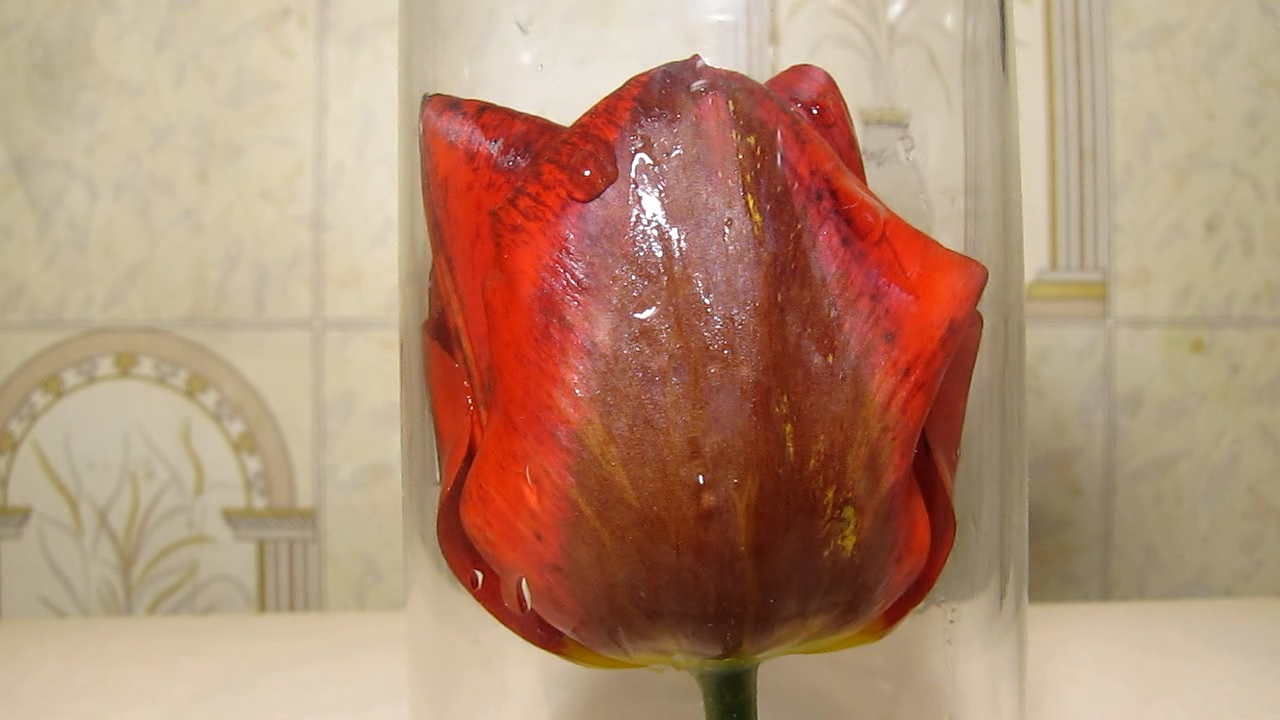
|

|
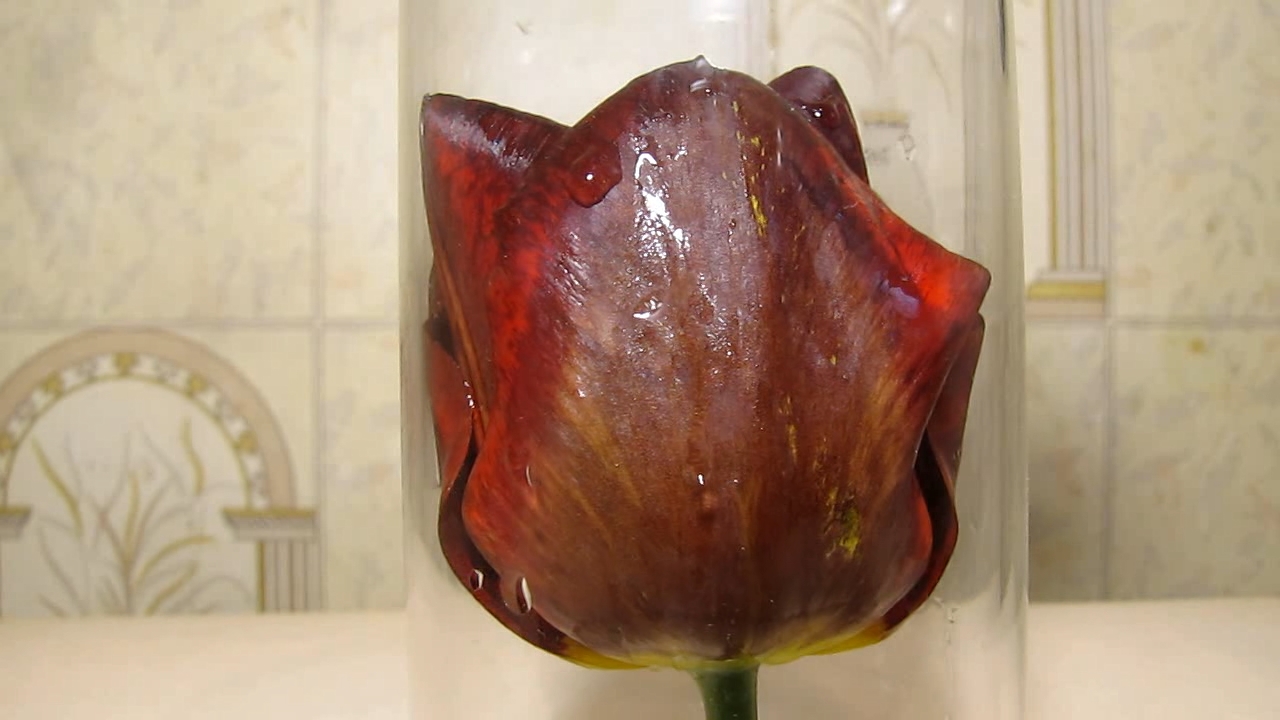
|

|

|
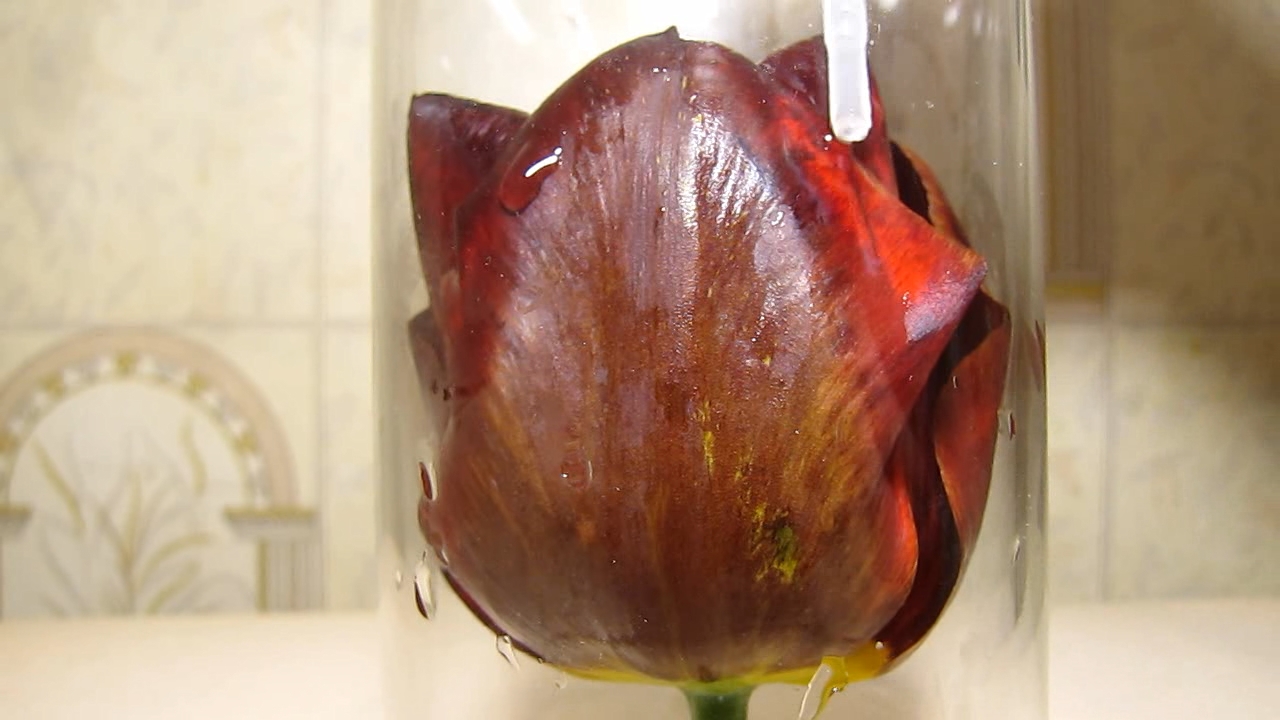
|

|
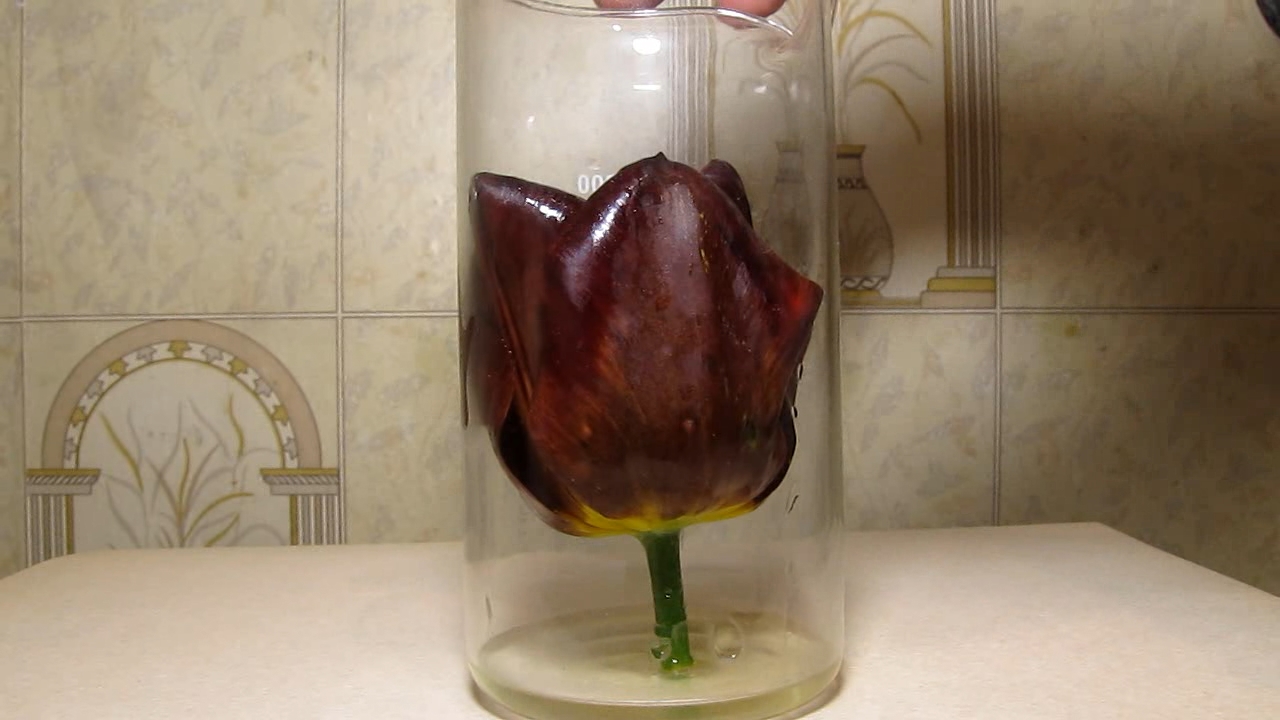
|
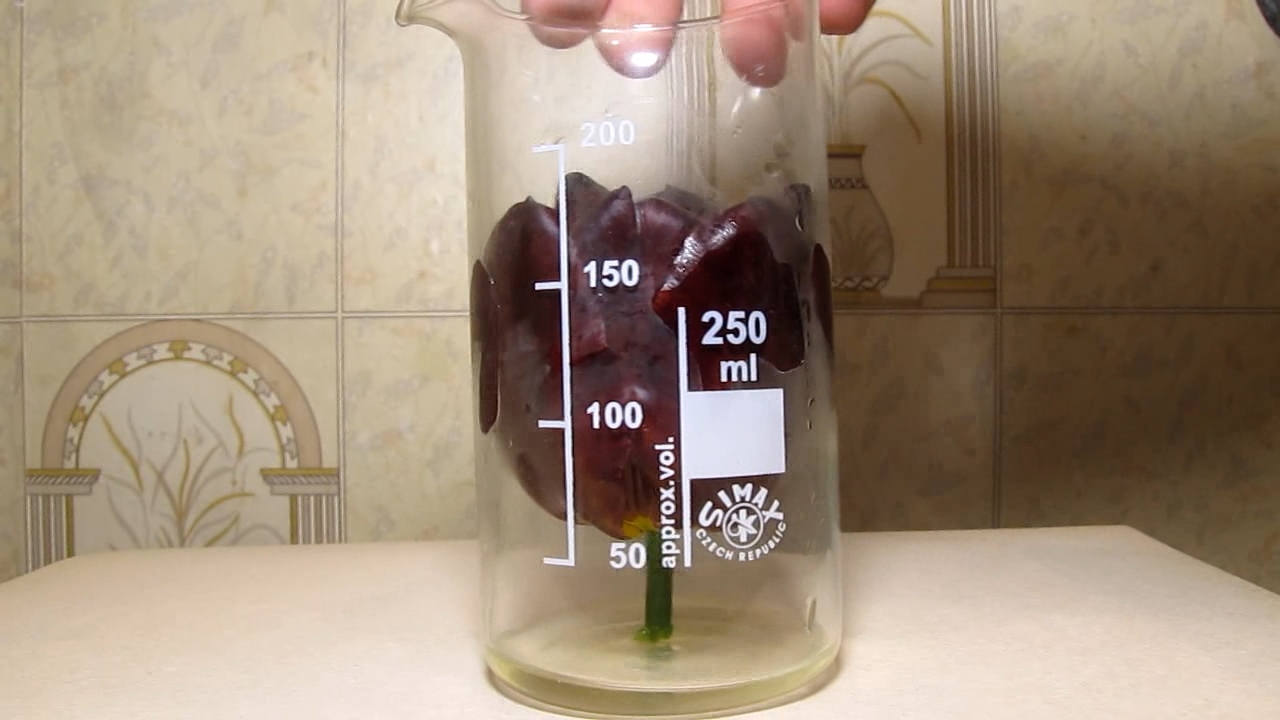
|
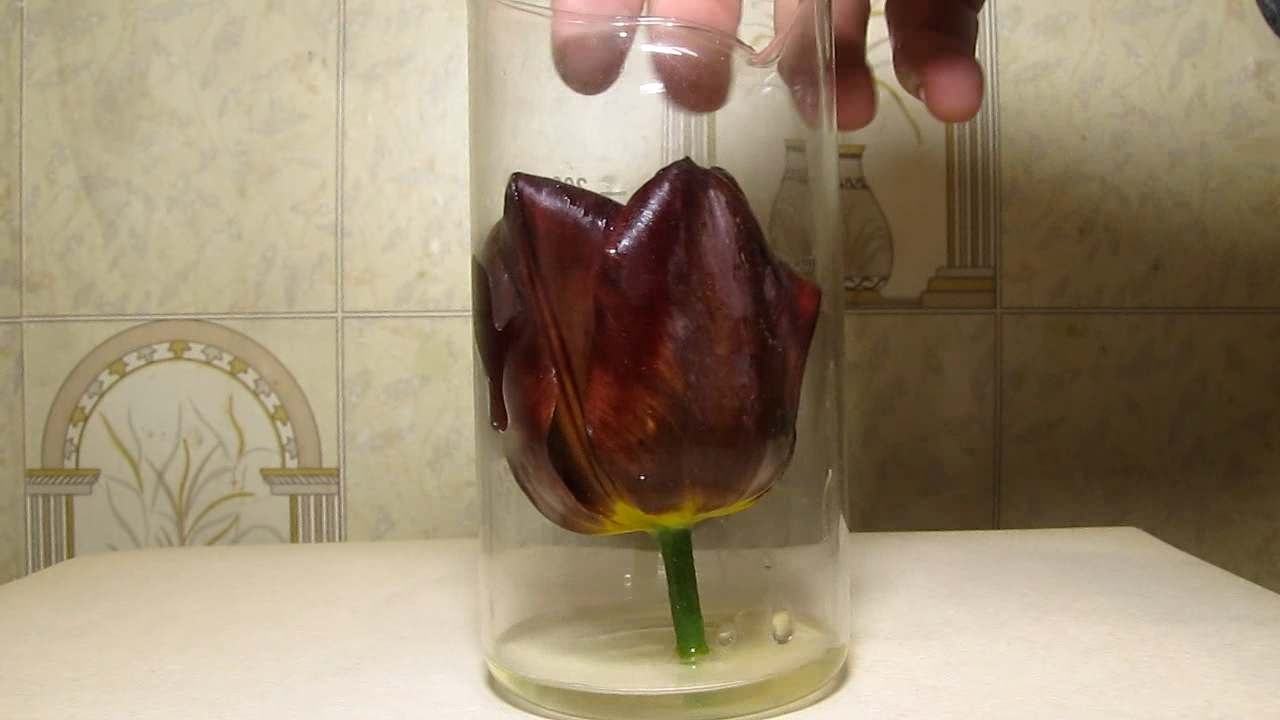
|

|
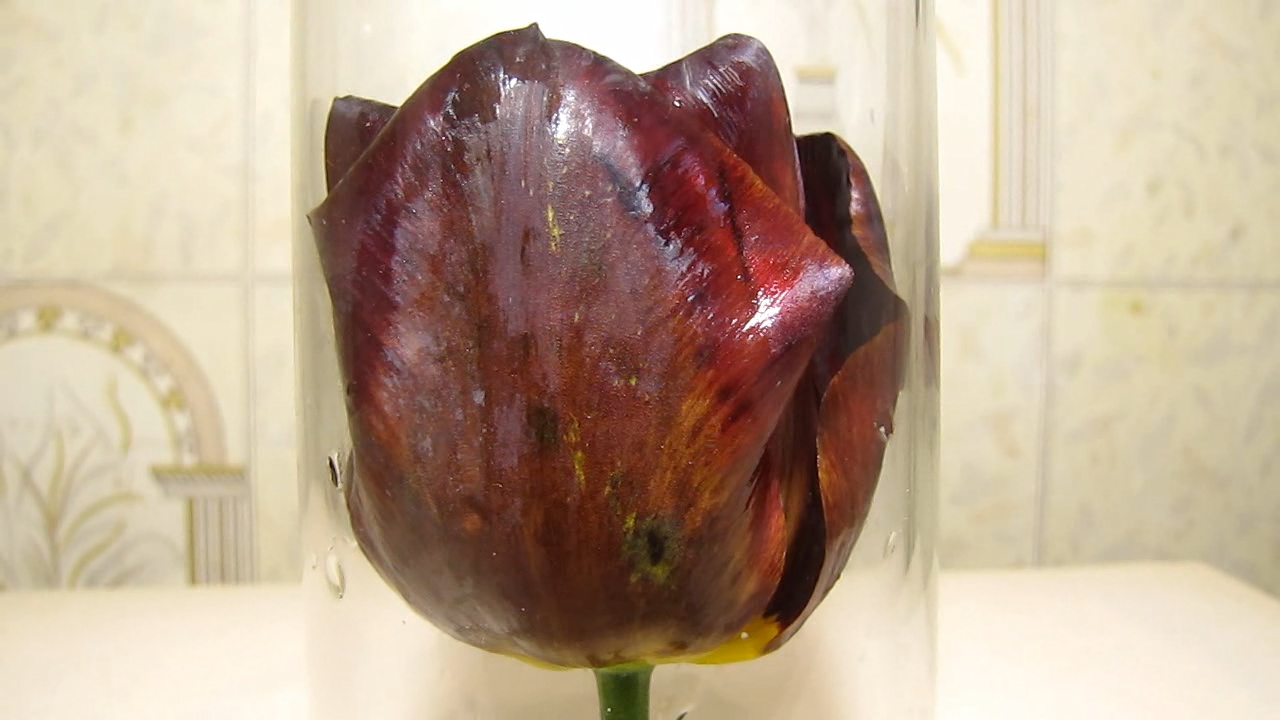
|

|
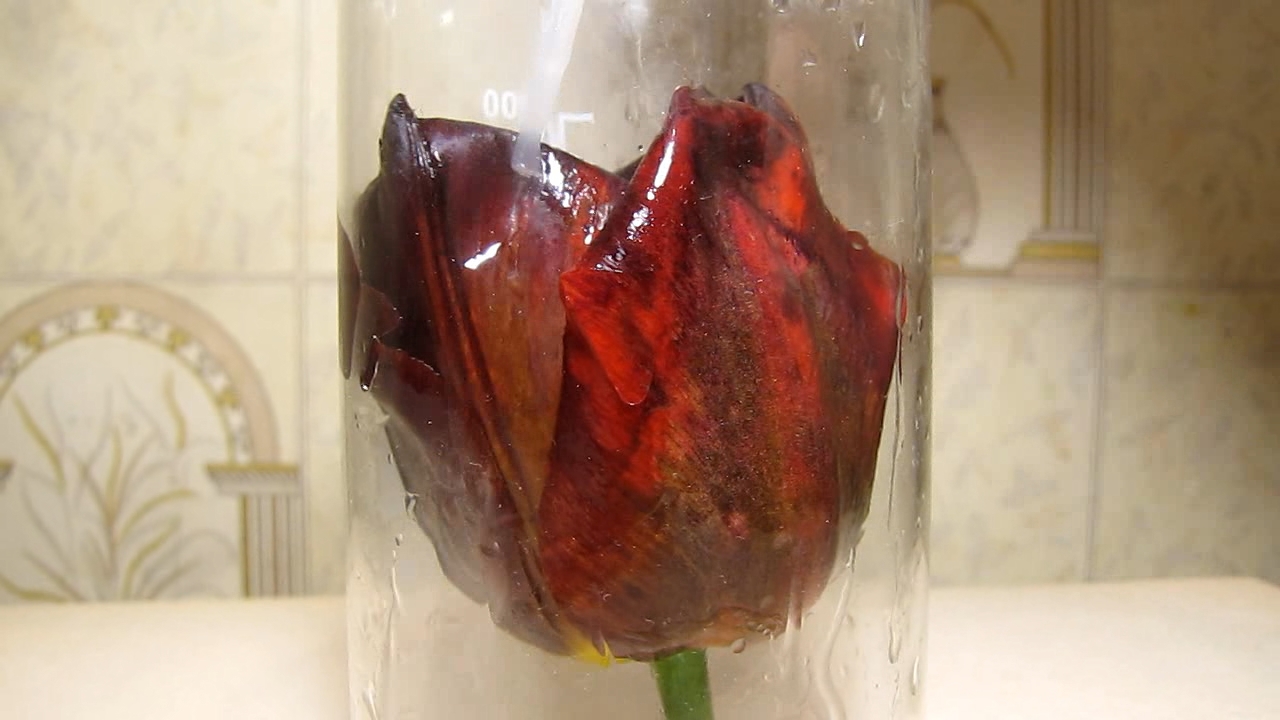
|

|
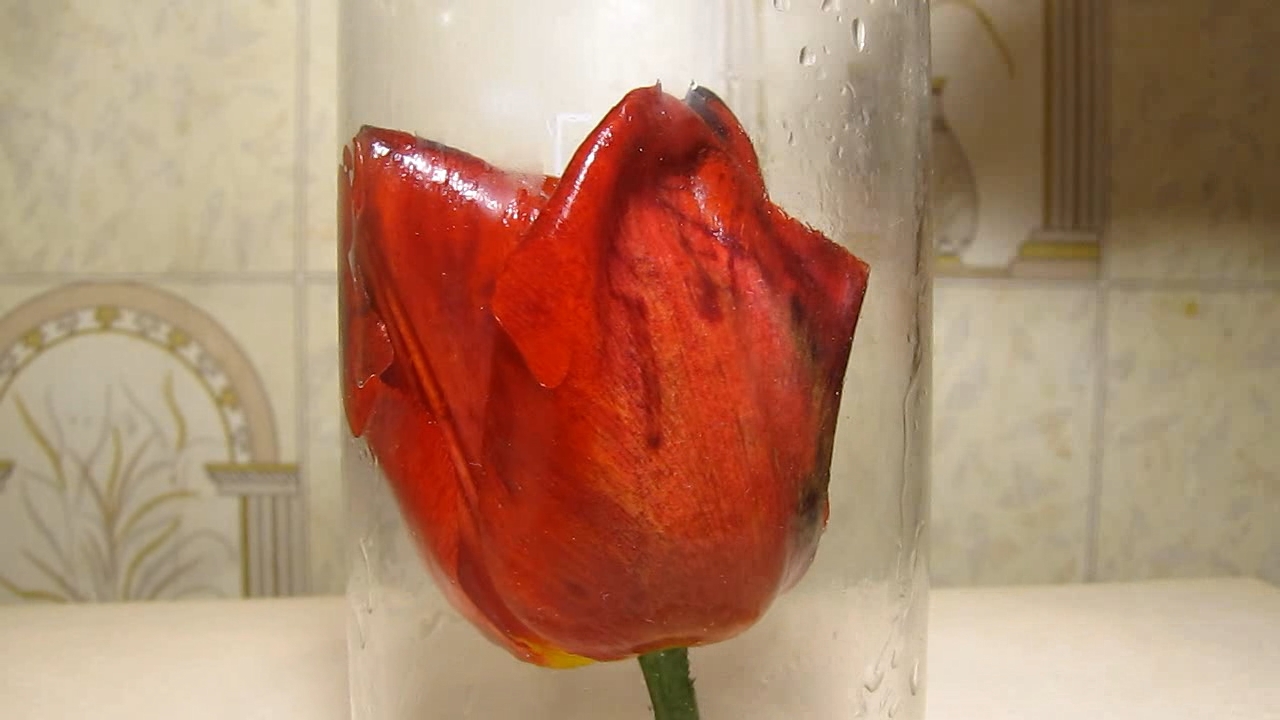
|
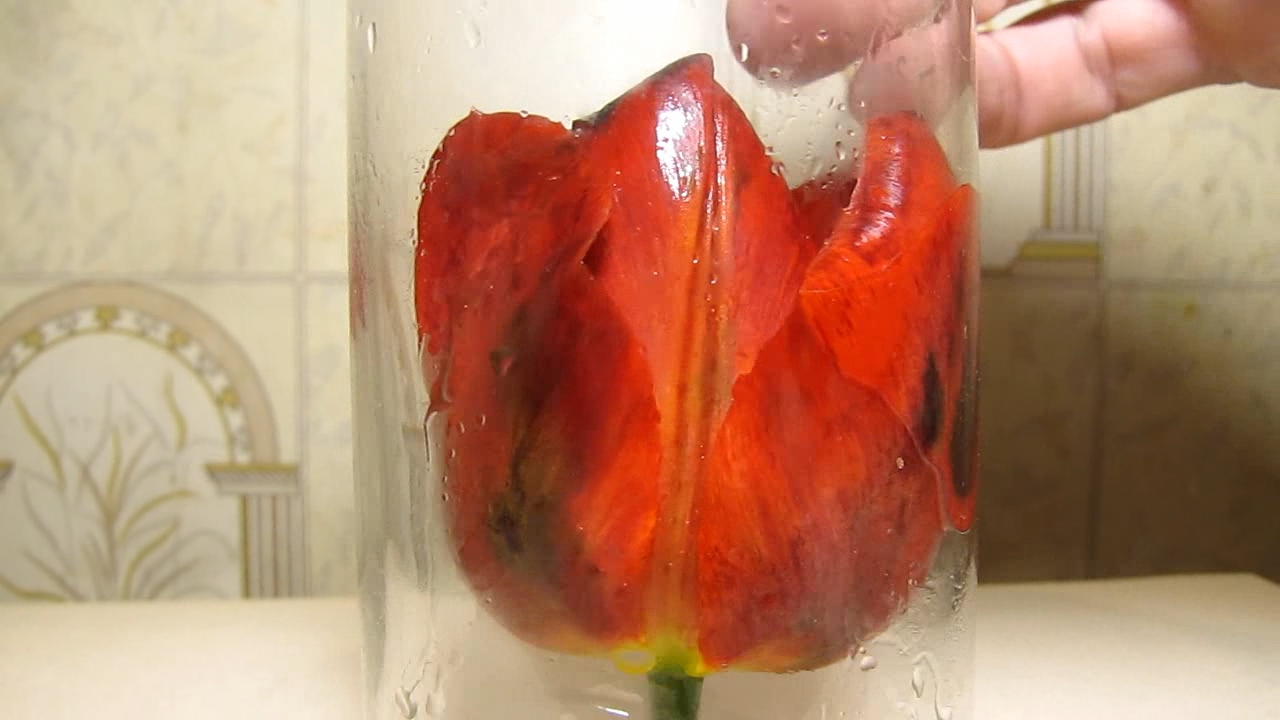
|
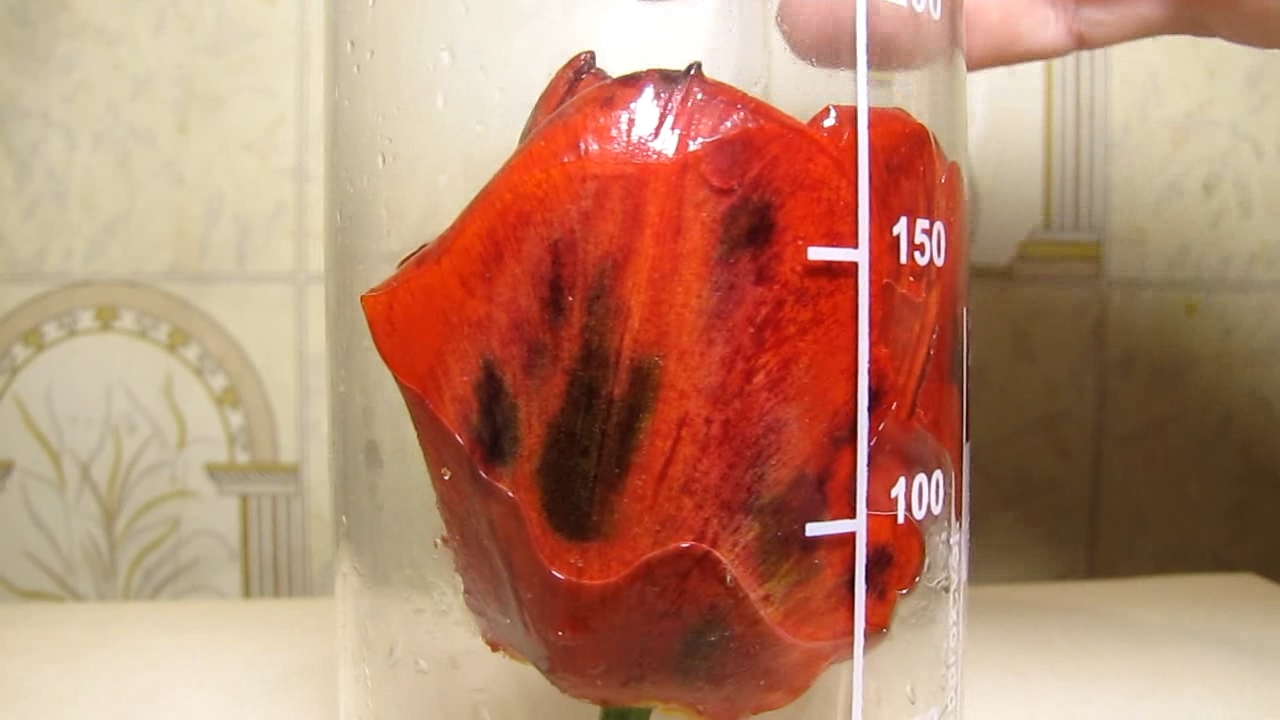
|
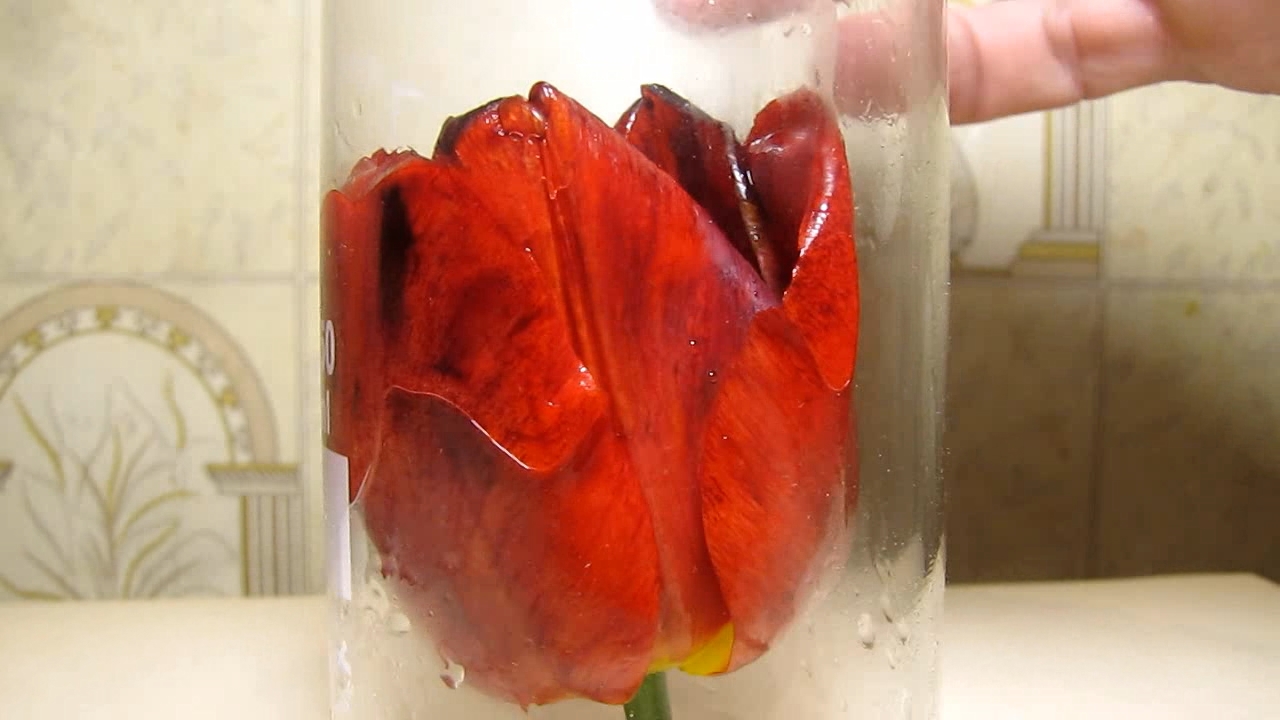
|

|
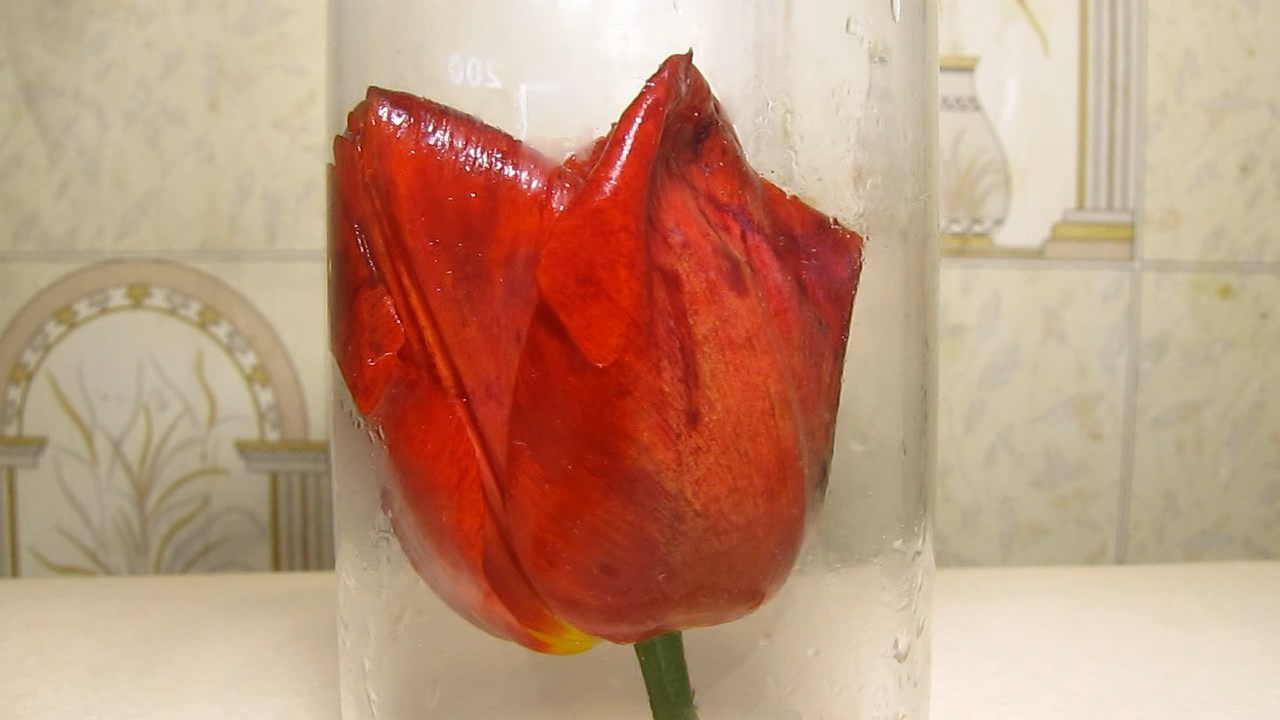
|
|
The photo below shows another tulip. I found it growing straight from a hole in a wooden post of fence (at a height of about a meter from ground level). Did a tulip bulb accidentally fall into a hole in the post, where a plant with a large, bright flower grew from it? This is quite possible. However, I noticed only one small leaf on the tulip stem, although the stem and flower were normal (typical) in size. Usually, a tulip has several leaves, and they are much larger. Conclusion: someone picked a flower and inserted the stem into a hole in the post.
|
|
На фото ниже показан другой тюльпан. Его я обнаружил растущим прямо из дырки в деревянном столбе забора (на высоте примерно метр от уровня земли). Неужели луковица тюльпана случайно упала в отверстие в столбе, где из нее выросло растение с большим ярким цветком? Такое вполне возможно. Однако, я обратил внимание, что на стебле тюльпана присутствовал только один маленький лист, хотя стебель и цветок были нормальными (типичными) по размеру. Обычно листов у тюльпана несколько, и они гораздо большего размера. Вывод: кто-то сорвал цветок и вставил стебель в дырку в столбе.
|

|
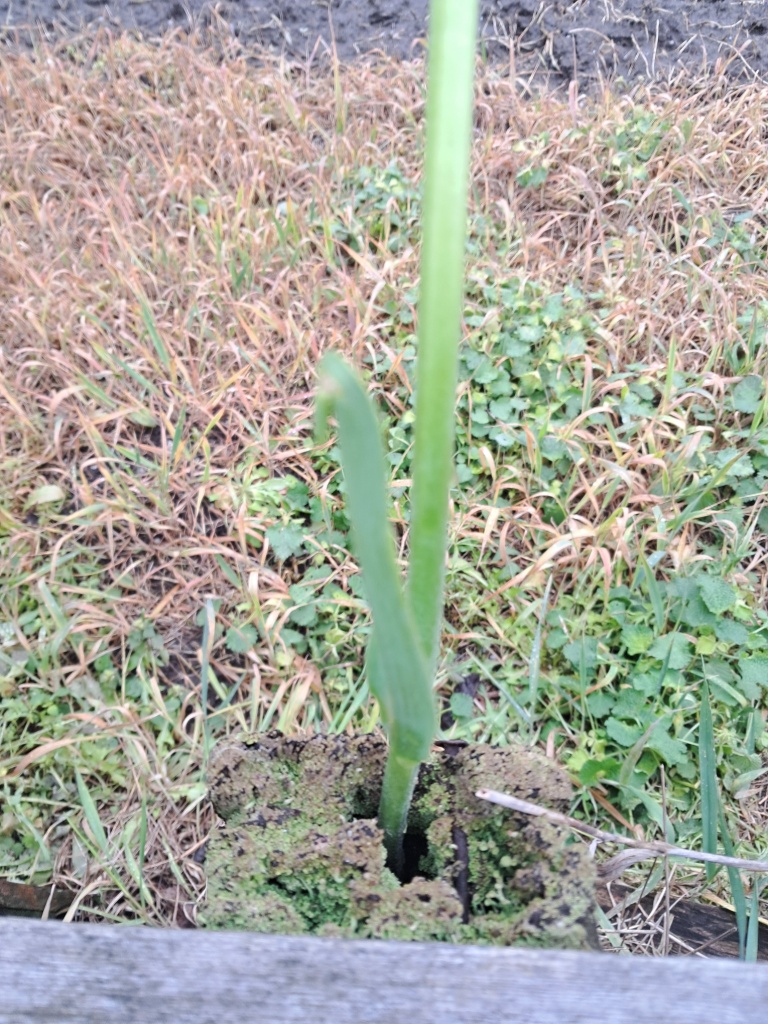
|
|
Why did I think the tulip grew by taking root inside a wooden post? In the past, I had more than once seen bushes and even trees growing not from the ground, but directly from the walls or the roofs of buildings. The roots of these plants were located directly in the wall (or in the upper ceiling of the building). Bricks and concrete played the role of soil for them. Some specimens of such trees reached a height of several meters. Of course, the roots of these plants gradually break the building, but that is another story.
|
|
Почему я решил, что тюльпан вырос, пустив корни внутри деревянного столба? В прошлом, я не раз видел кусты и даже деревья, растущие не из грунта, а прямо из стен или из крыши зданий. Корни этих растений находились непосредственно в стене (или в верхнем перекрытии здания). Роль грунта для них выполняли кирпичи и бетон. Отдельные экземпляры таких деревьев достигали высоты в несколько метров. Разумеется, корни этих растений постепенно разрушают здание, но это уже другая история.
|
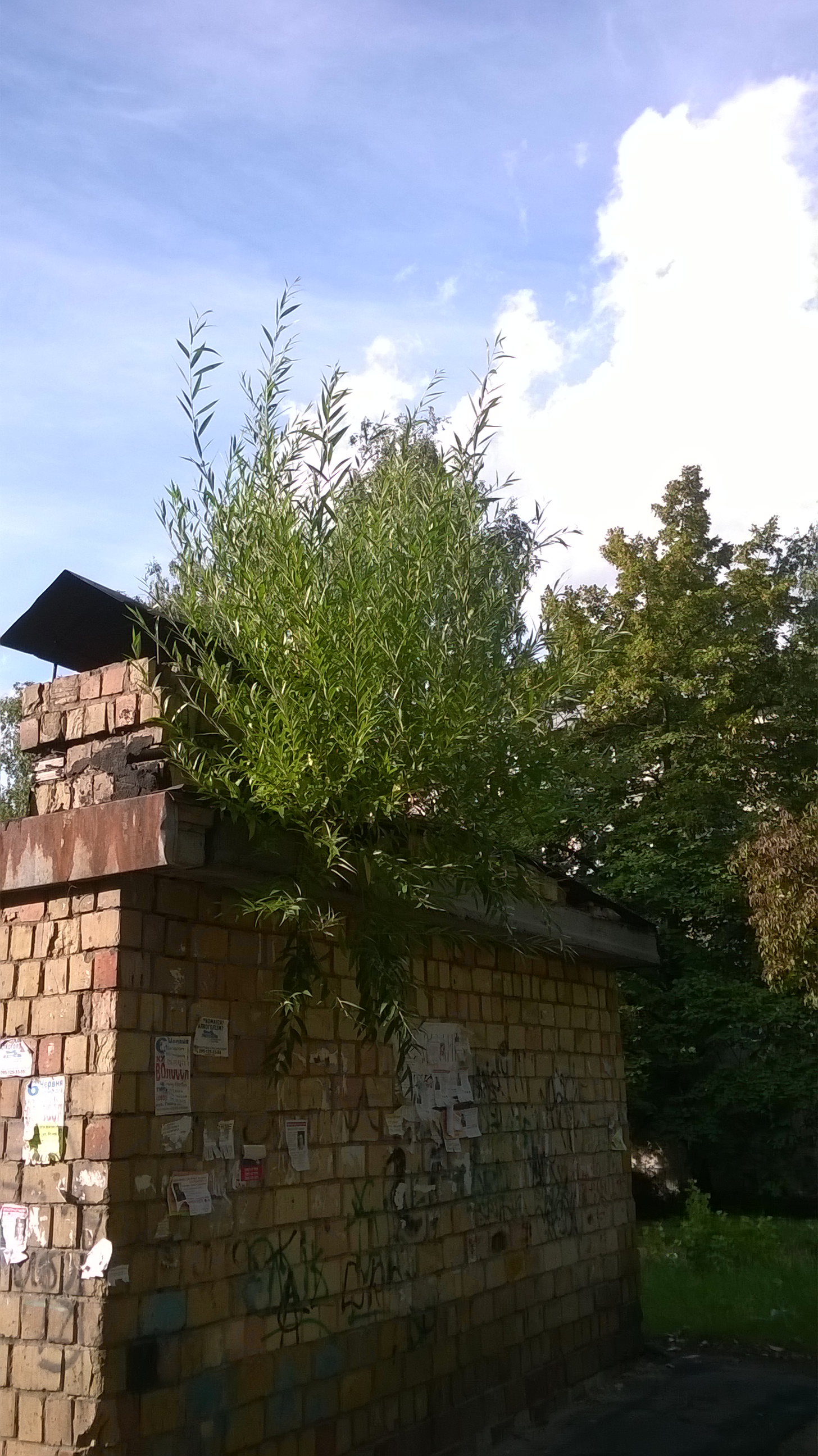
Plants grow from the wall |
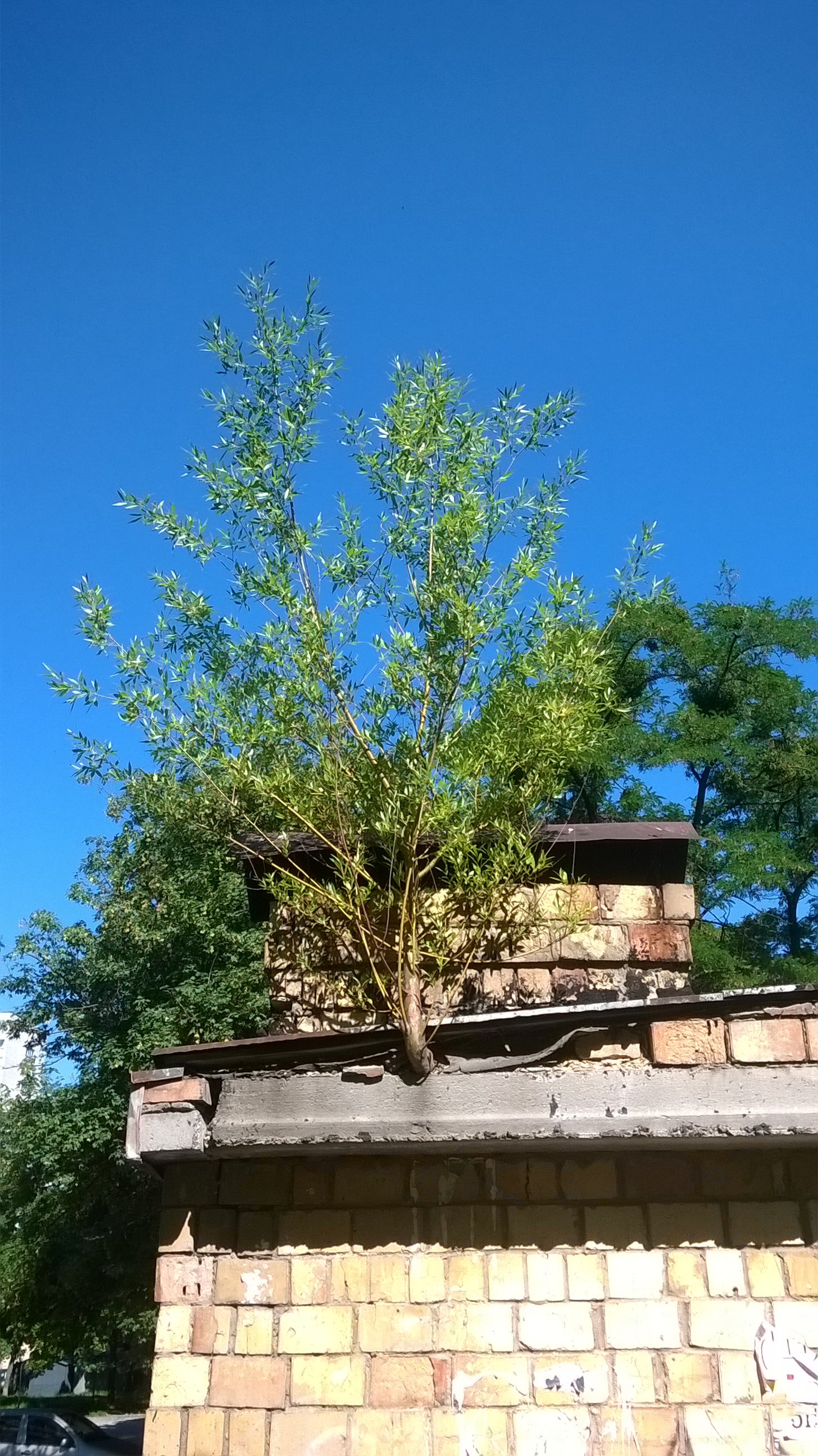
|
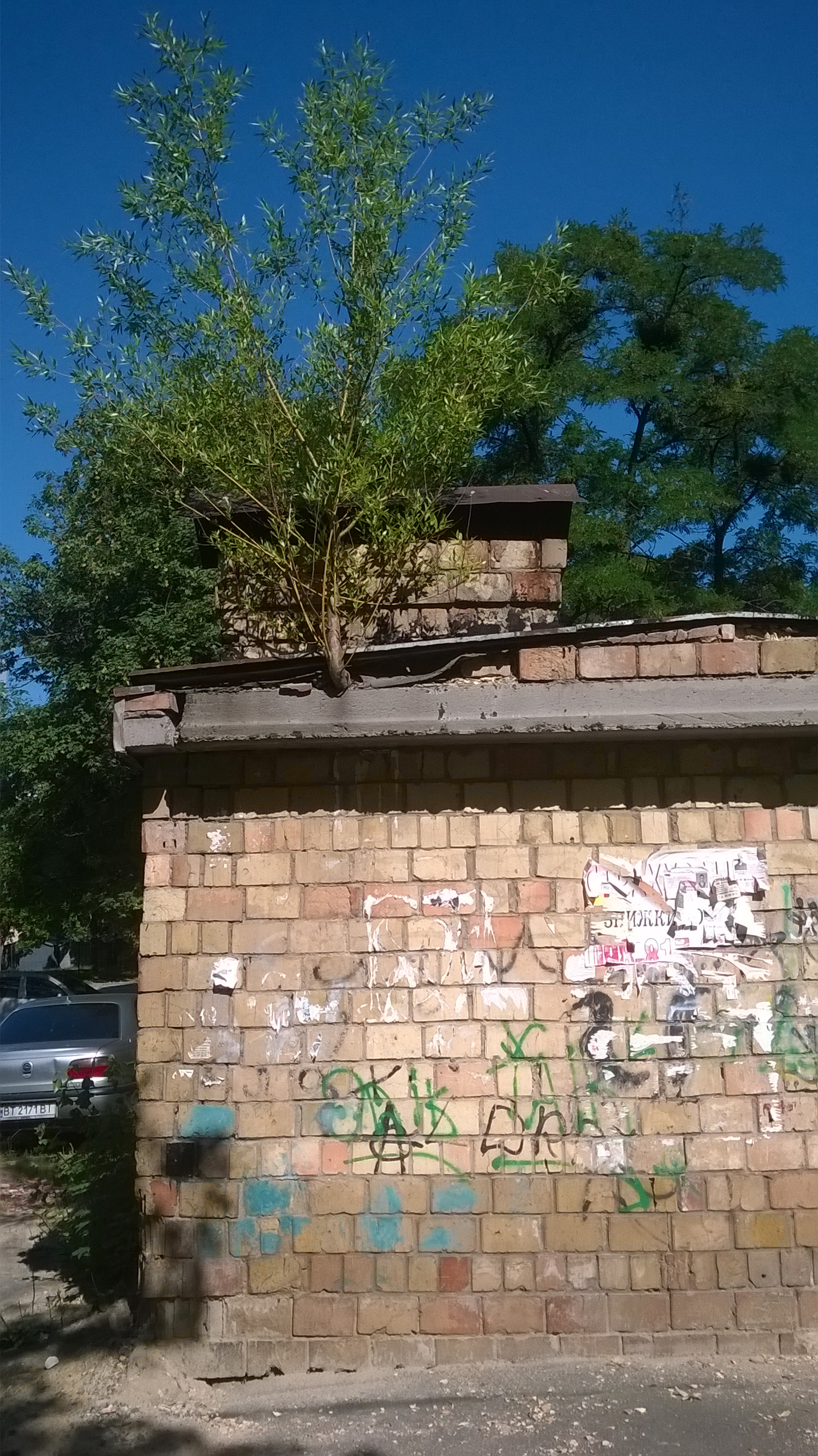
|
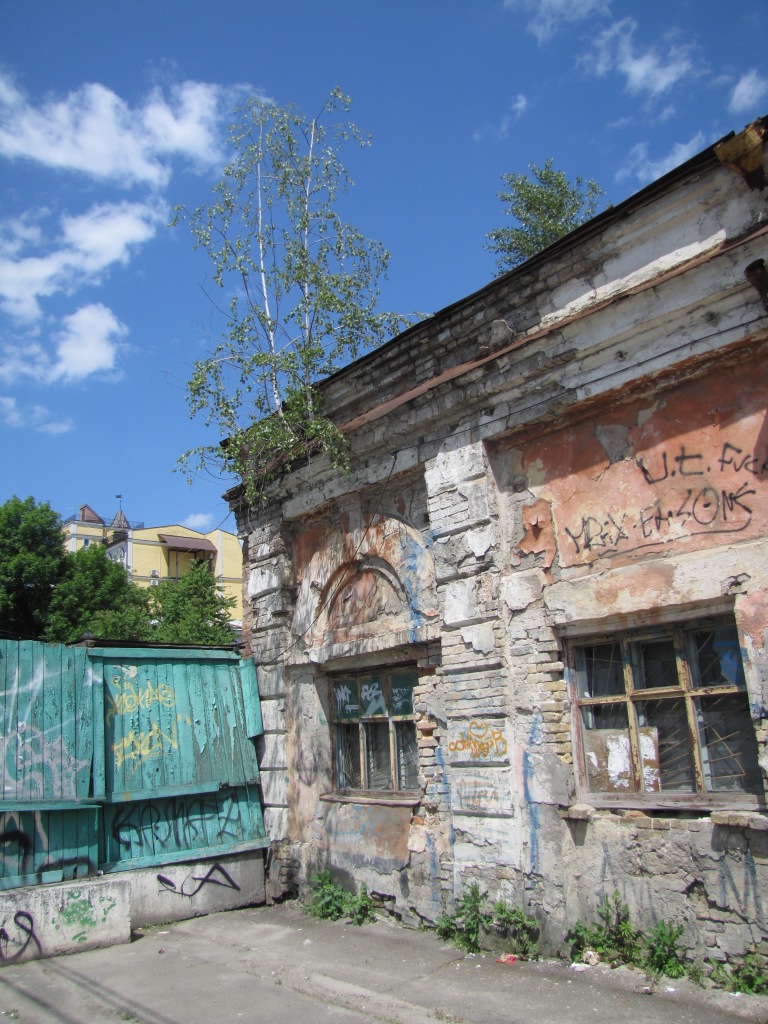
|
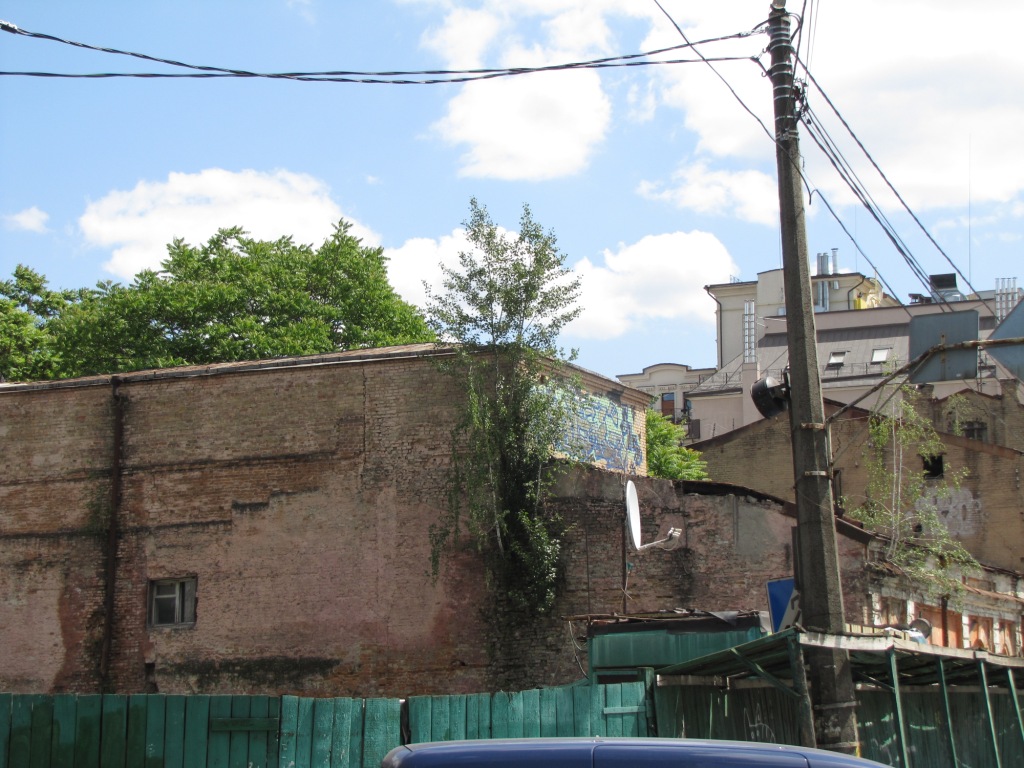
|
|
Having noticed a mistake in the text, allocate it and press Ctrl-Enter
Red tulip, tap water, ammonia and hydrochloric acid - part 6
So, tap water that contacted a red tulip flower acquired a dark purple colour, while the tulip petals themselves did not visually change. Tap water is slightly alkaline (pH slightly above 7). I assumed that the red pigment of the tulip dissolved in water and changed colour from red to purple due to the slightly alkaline medium.
Красный тюльпан, водопроводная вода, аммиак и соляная кислота - часть 6 To test this assumption, I added two drops of concentrated hydrochloric acid to the water - the solution turned red at the bottom of the glass. Then, I stirred the liquid. The entire solution became red (the colour of the tulip petals). Next, I began to add a concentrated ammonia solution drop by drop to the red solution. The liquid on top immediately became dark. I stirred the solution. All the liquid in the glass turned dark. In a thin layer, it was clear that the colour was dark green, but the solution's colour was not easy to distinguish in the video. To make the colour of the solution more visible, I brought the lamp closer to the glass from above, but this did not help. Then, I decided to dilute the solution with distilled water. I poured water into another glass, planning to add the dark solution to the water. While I was doing this, I suddenly discovered that the initial dark liquid had lightened. The solution's colour was gradually changing from dark green to light brown. The dark green pigment was likely being oxidized by atmospheric oxygen in an alkaline solution, causing the colour transition. At the stage when the solution turned greenish-brown, I added hydrochloric acid to make the solution acidic again. Then, I stirred the liquid. A lot of white smoke was produced (ammonium chloride is a product of the reaction of hydrogen chloride and ammonia), and the solution turned orange (not red). In other words, due to adding ammonia, irreversible changes occurred, so after adding the excess of hydrochloric acid, the solution no longer turned red. The original pigment of the tulip petals has been destroyed (in whole or in part). I added excess ammonia again and stirred. The solution turned greenish-brown. Thus, the experiment was successful and gave an unexpected result. However, not all of its stages were captured on video, so the experiment must be repeated. |
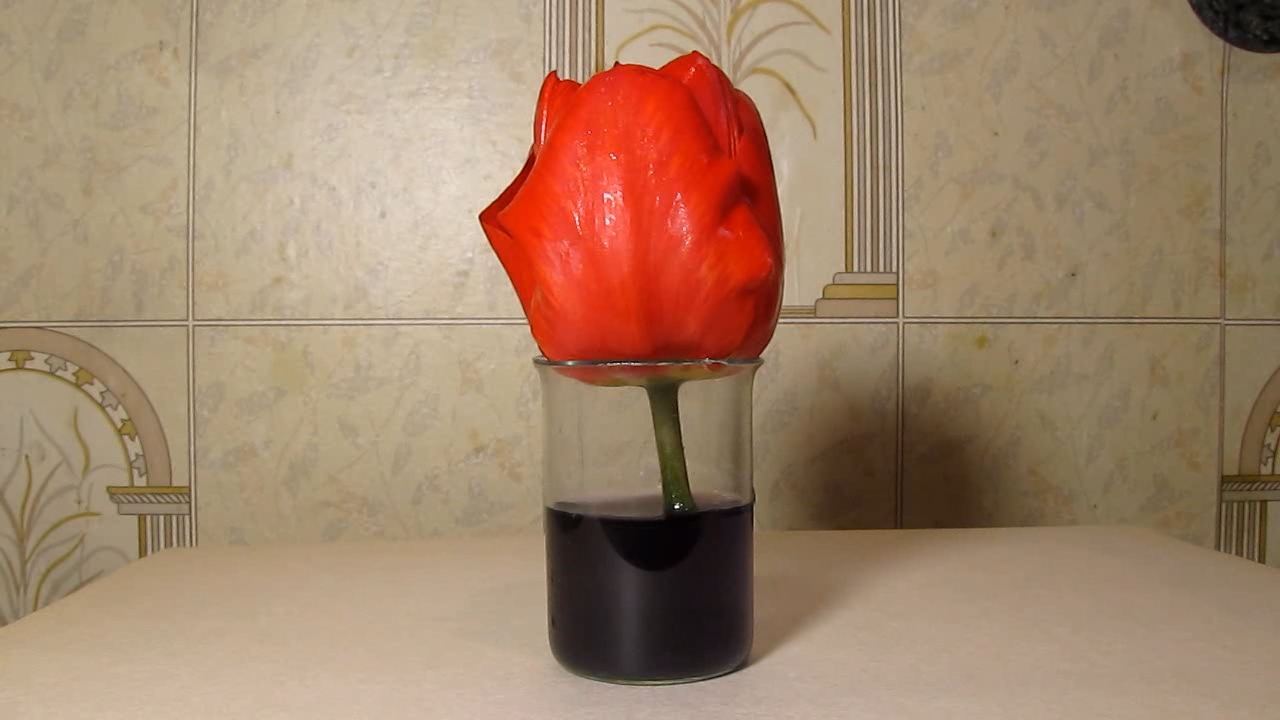
Red tulip, tap water, ammonia and hydrochloric acid |
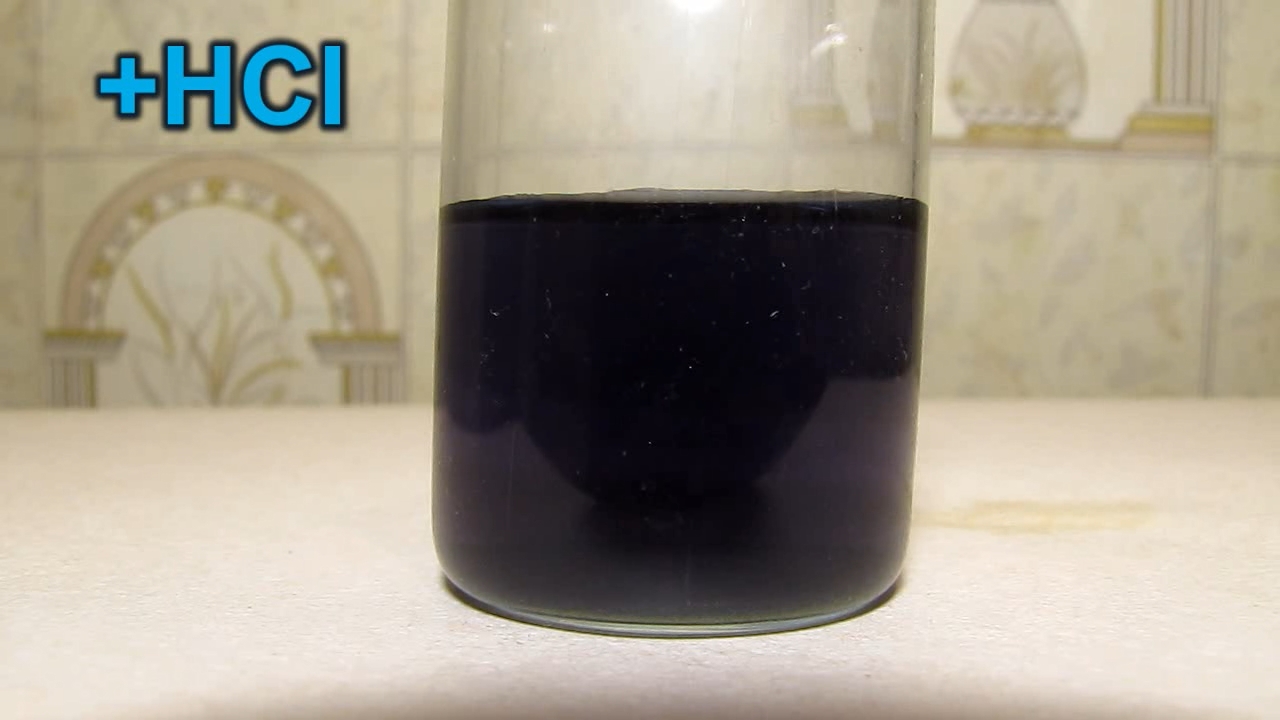
|
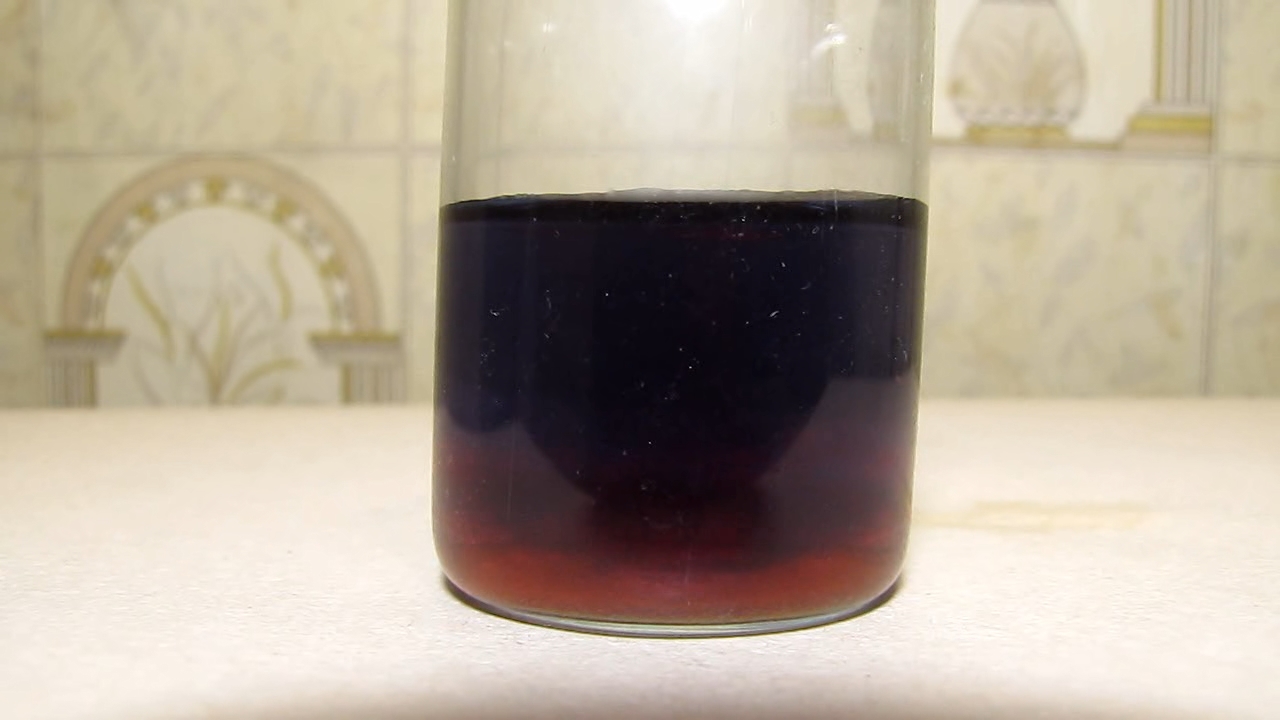
|

|
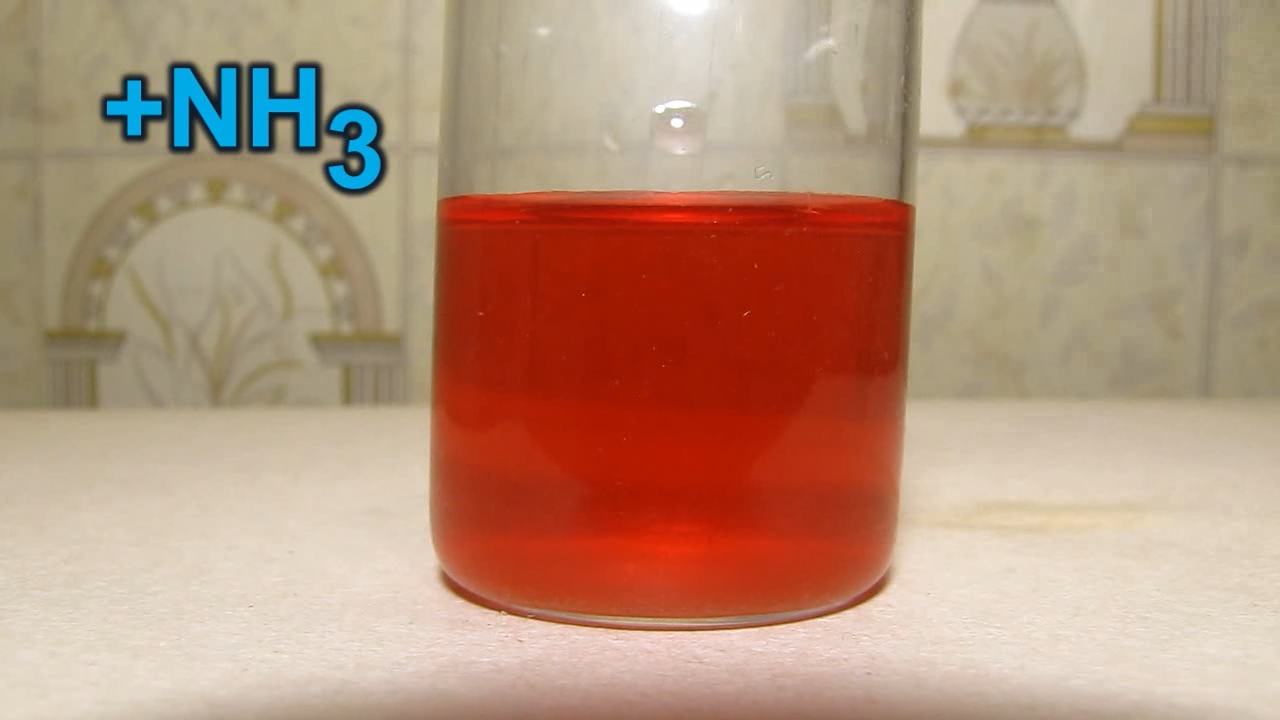
|

|
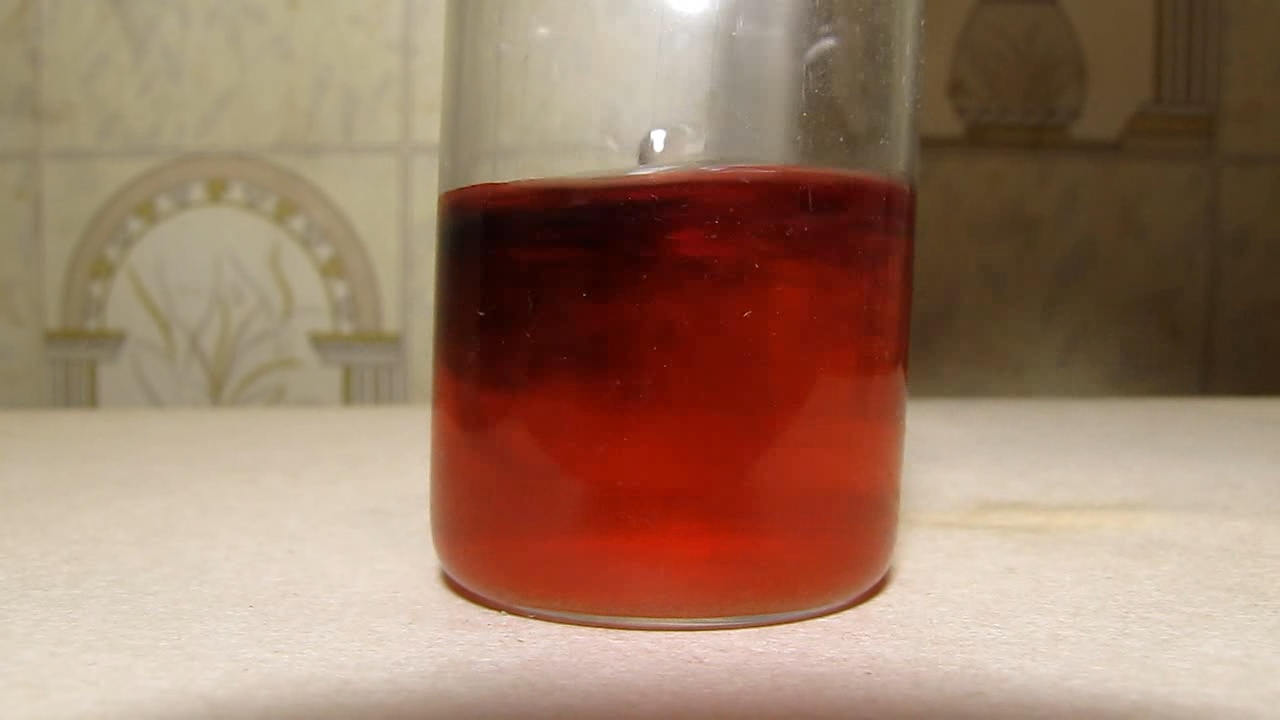
|
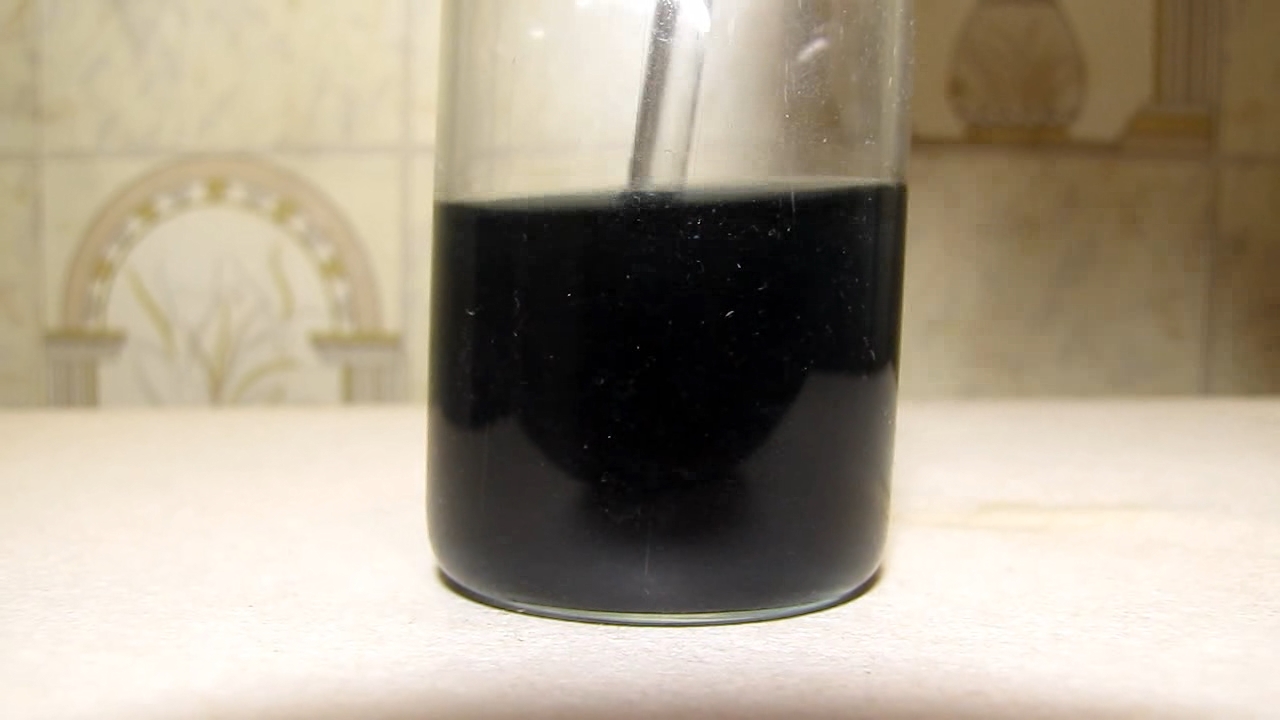
|
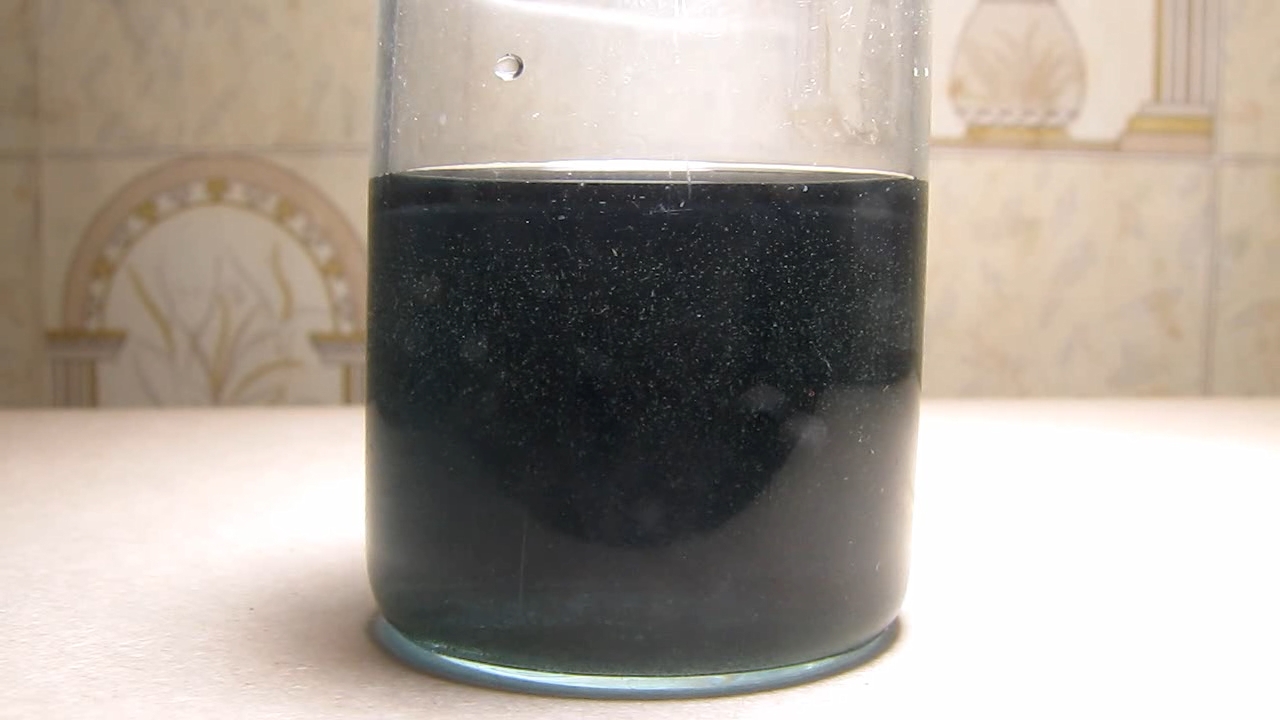
|
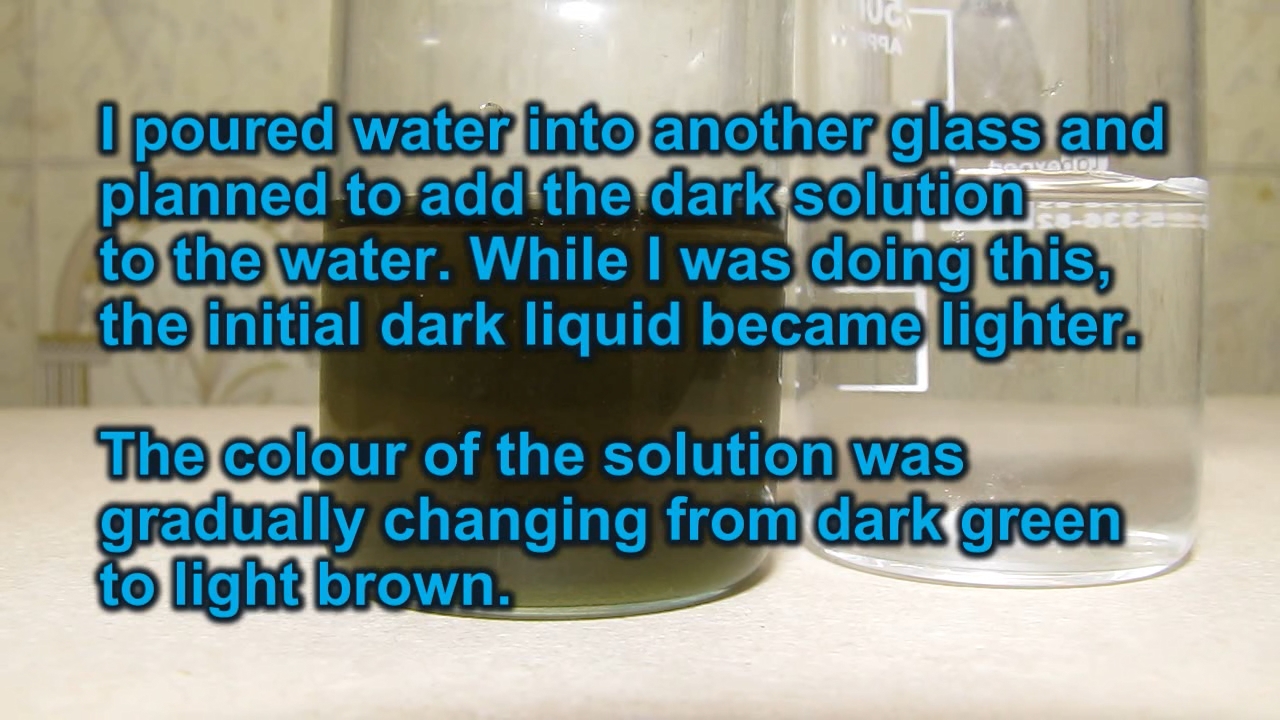
|
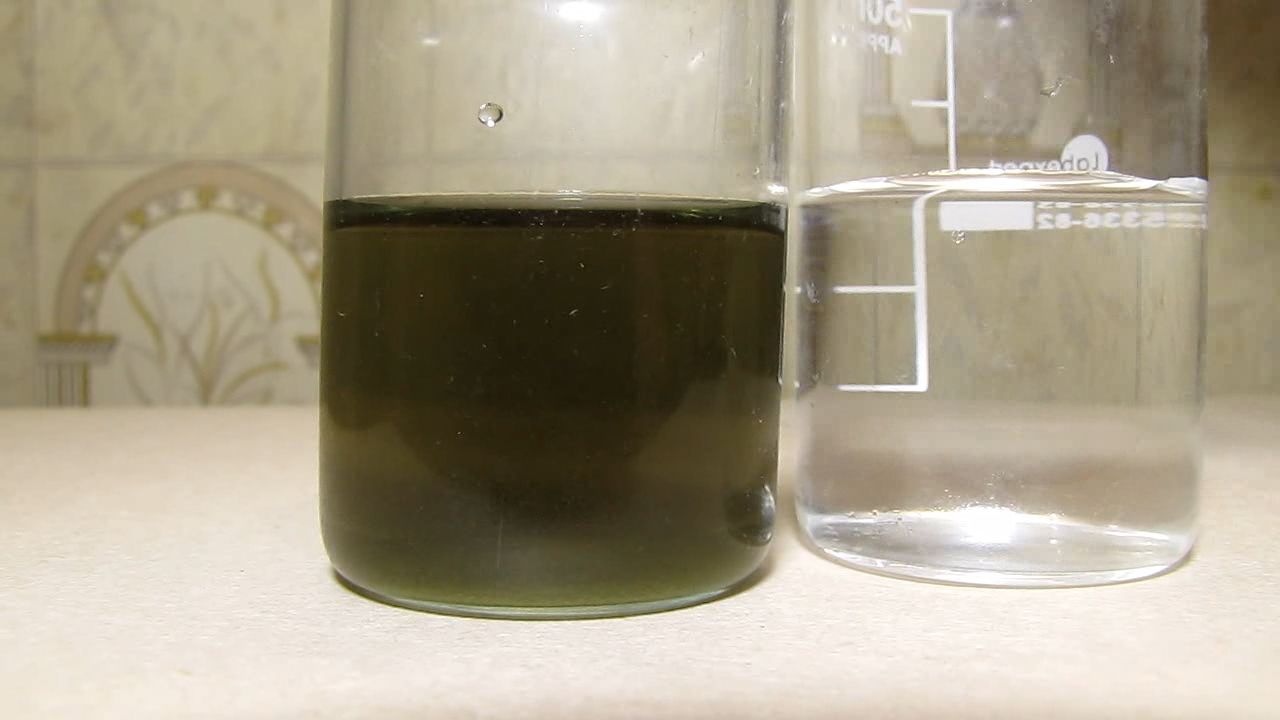
|
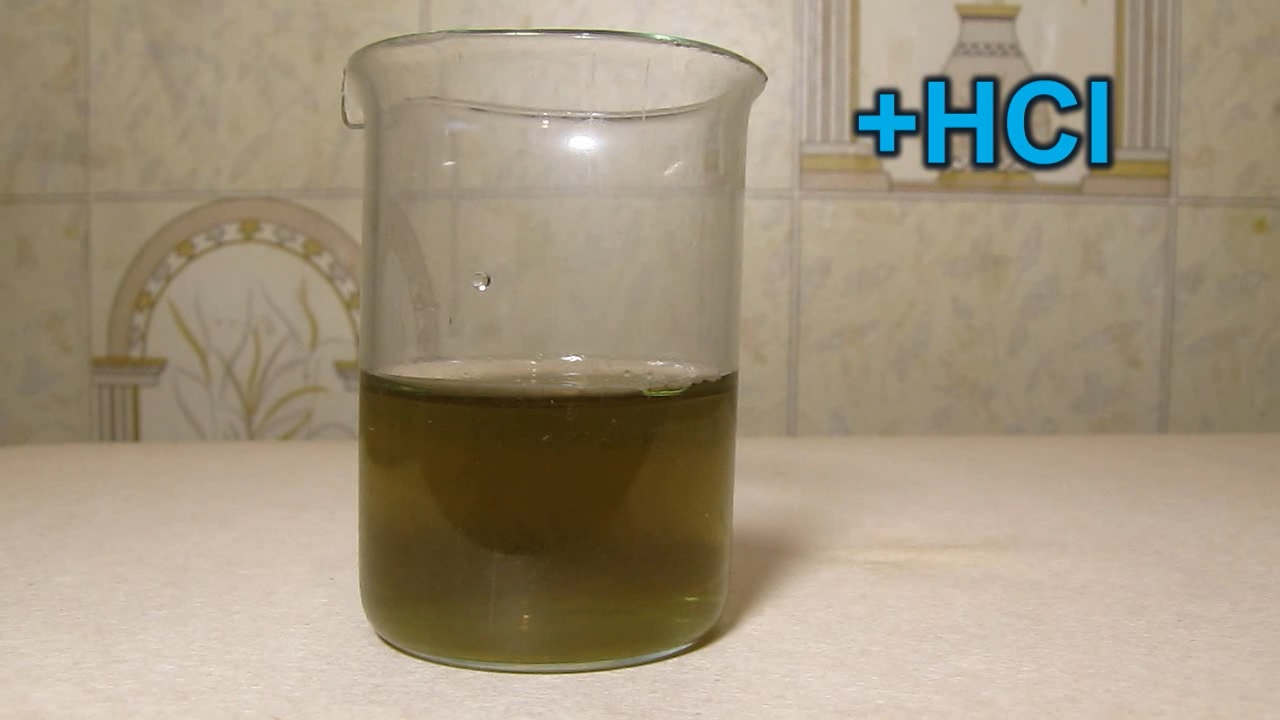
|
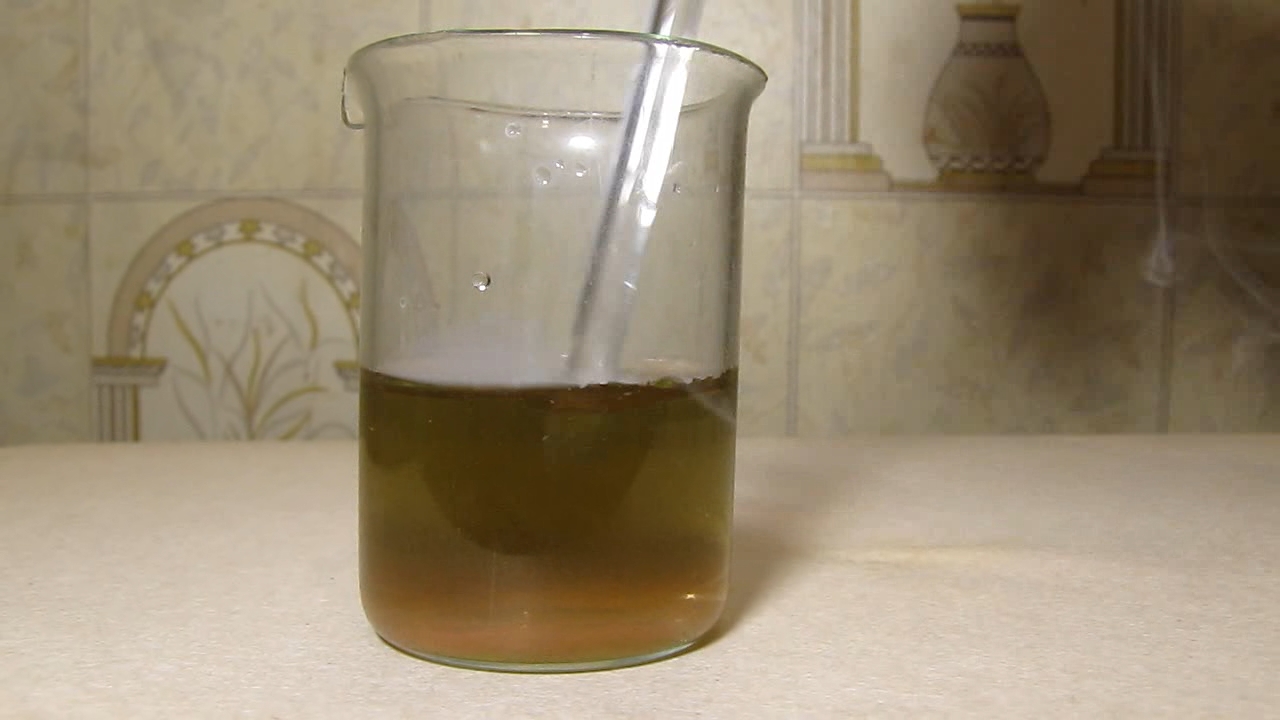
|

|
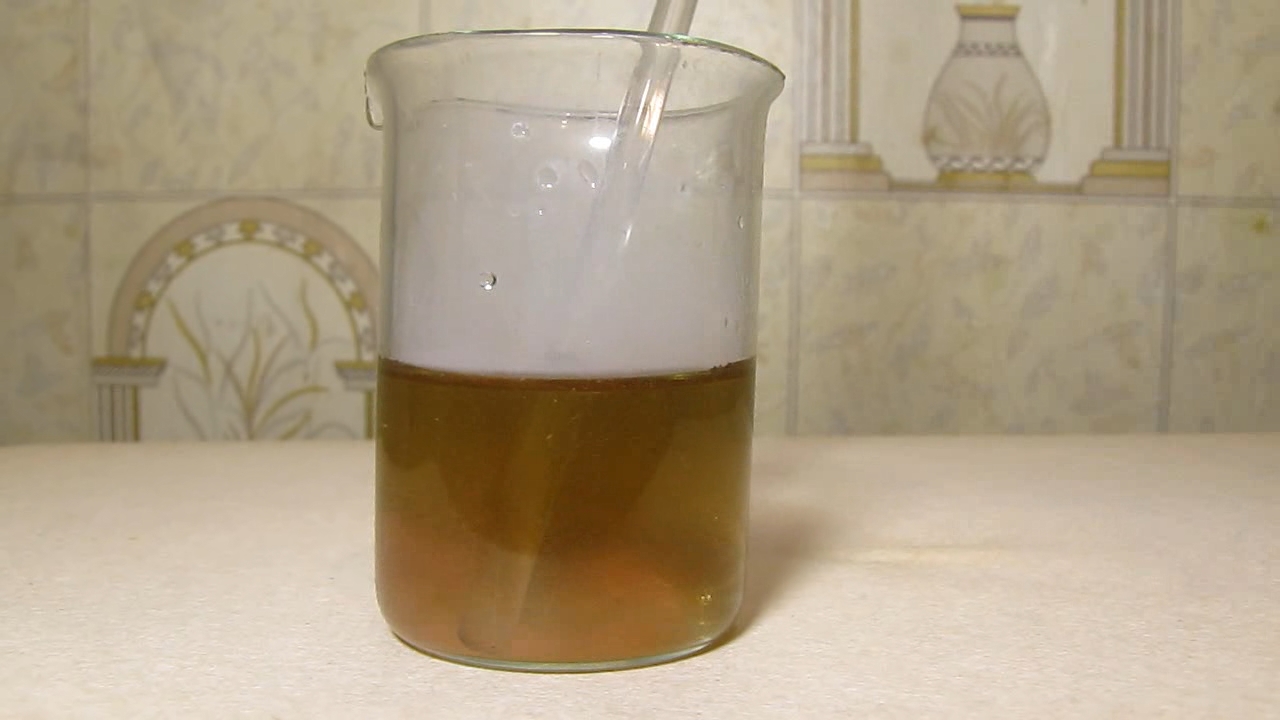
|
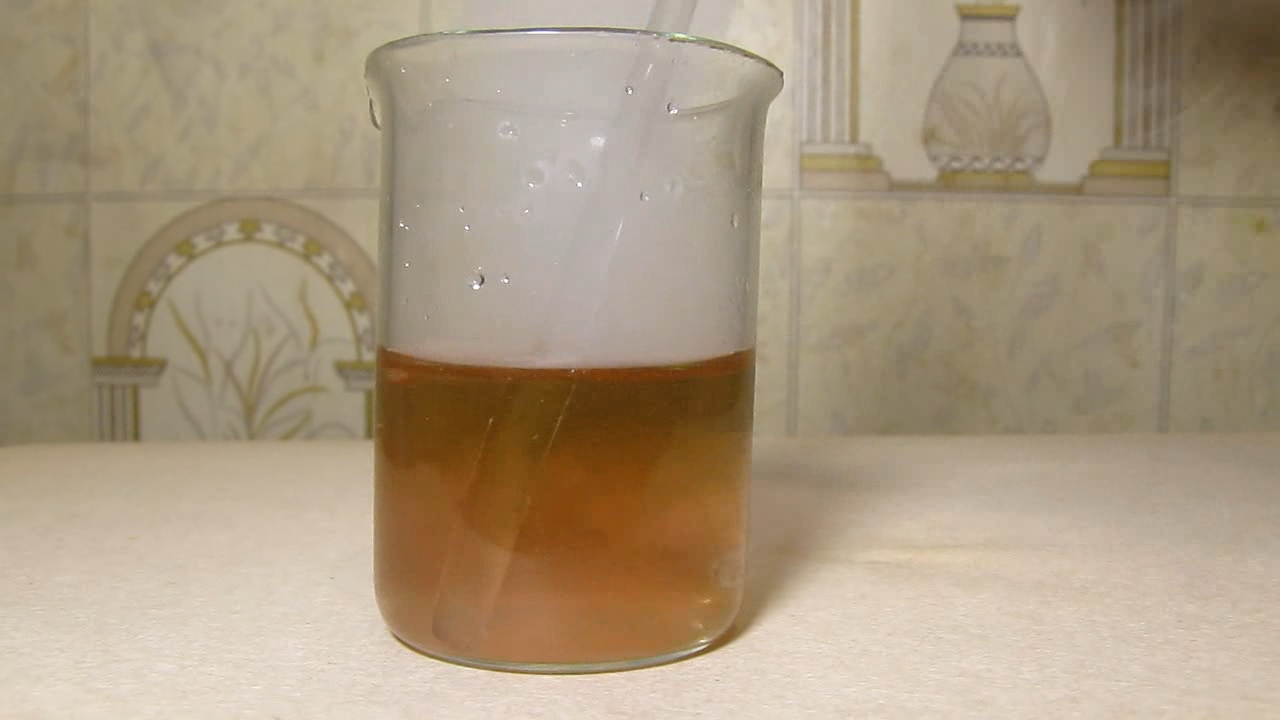
|

|

|
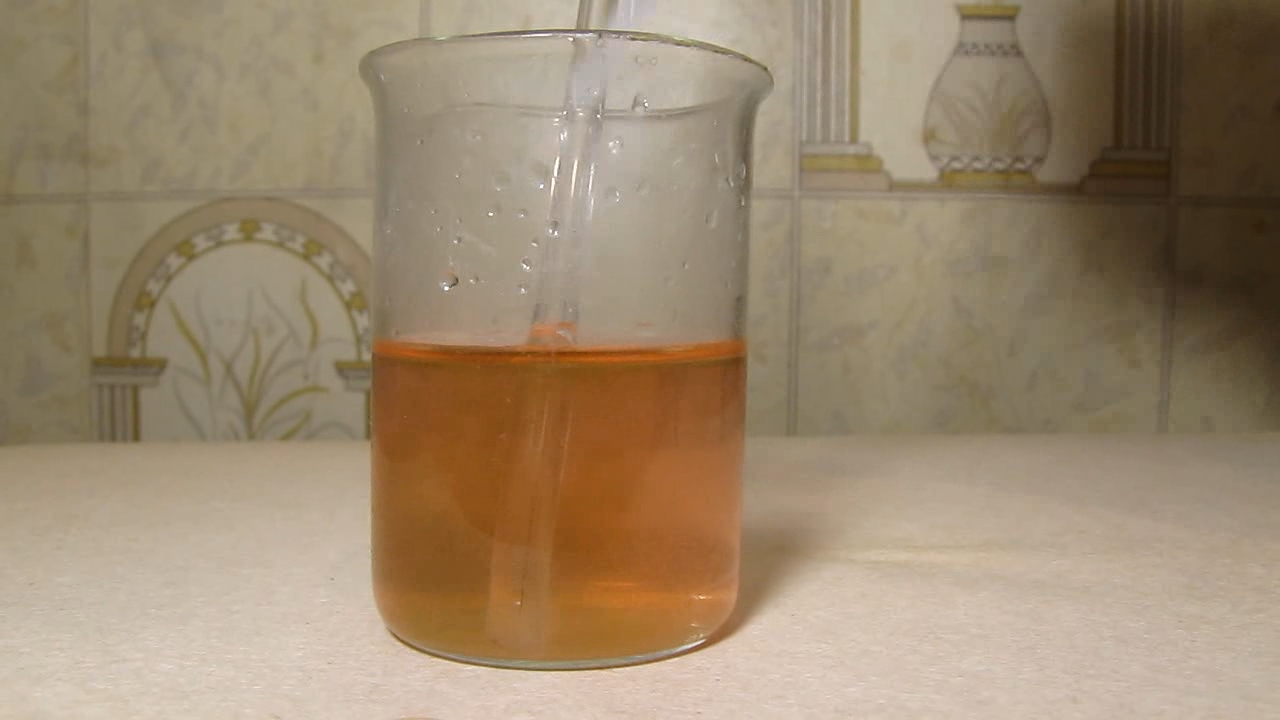
|

|
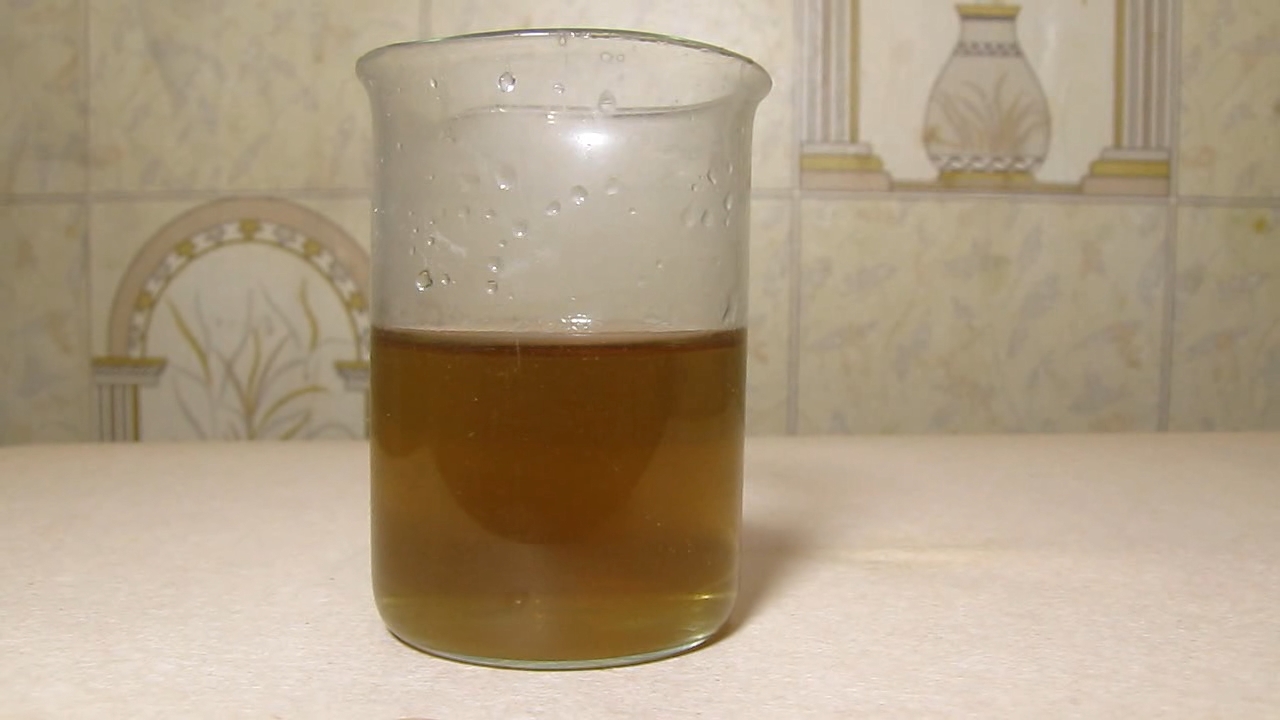
|
|
Having noticed a mistake in the text, allocate it and press Ctrl-Enter
Red tulip, tap water, ammonia and hydrochloric acid - part 7
I used a red tulip flower with a yellow tint to repeat the experiment. It was necessary to film a video of those stages of the experiment that could not be captured on video last time.
Красный тюльпан, водопроводная вода, аммиак и соляная кислота - часть 7 I placed the flower in a glass and added 100 ml of tap water. The initial water was clear and colourless. In the previous experiment, the amount of water was about 3 times less (then I added water to the jar so that the flower would not wilt, not thinking that the colour of the water would change). After just 5 minutes it became noticeable that the water had turned violet. Over time, the intensity of the colour increased, but the colour was much weaker than last time. After 3 hours, I poured the water into another glass and used it for experiments. I added 1 drop of concentrated hydrochloric acid to 30 ml of violet water and mixed the liquid. The solution turned pink with a violet tint. Then, I added another drop of the acid and stirred. The violet tint disappeared and the solution became pure pink. I began to add concentrated ammonia solution drop by drop and stirred. The liquid first turned blue, then green. All that remains is to observe the gradual oxidation process of the green dye with air. The green solution slowly turned yellow. To intensify the oxidation reaction, I stirred the liquid and bubbled air through it using a pipette, which resulted in a faster colour transition. Next, I added concentrated hydrochloric acid drop by drop to the yellow solution. The solution turned orange (or rather beige). I checked it using universal indicator paper - the solution was strongly acidic. After this, I repeated the above experiment with the rest of the violet solution. The pigment concentration was the same as in the previous case (since the solution was the same), but I poured the liquid into a wider beaker, so the colours became darker. |

Red tulip, tap water, ammonia and hydrochloric acid (experiment 1) |

|
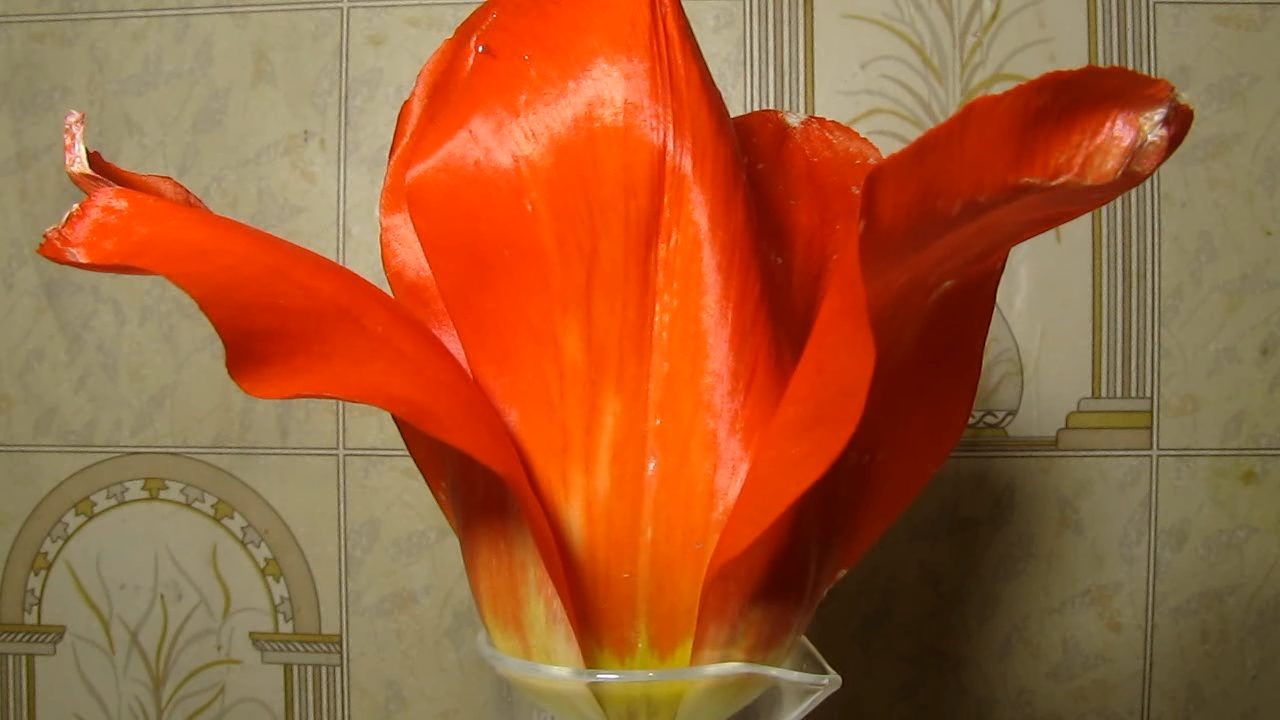
|

|
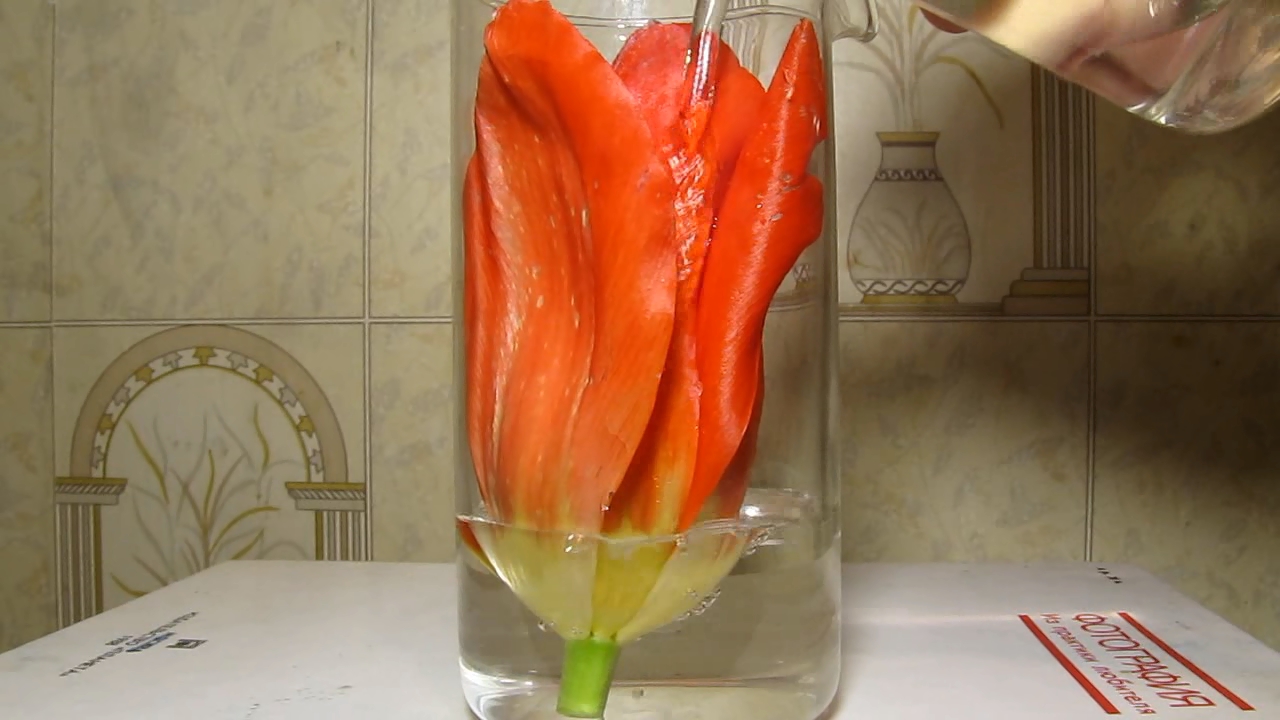
|
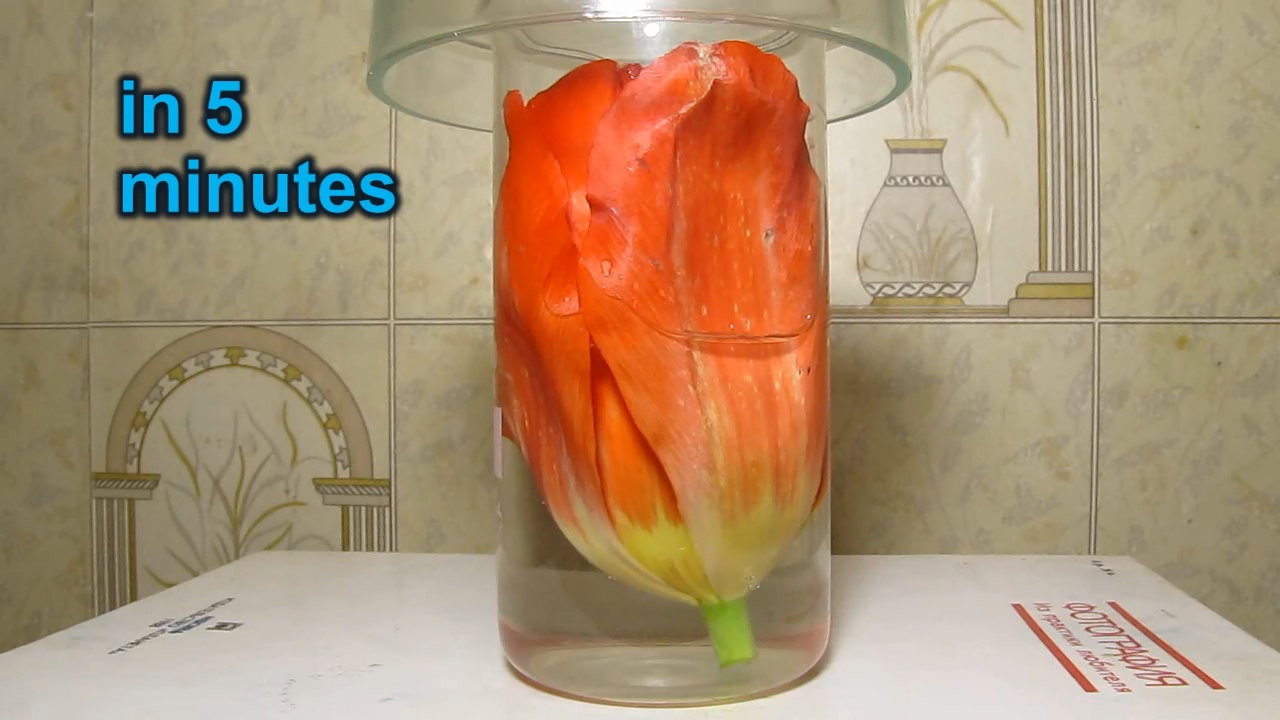
|
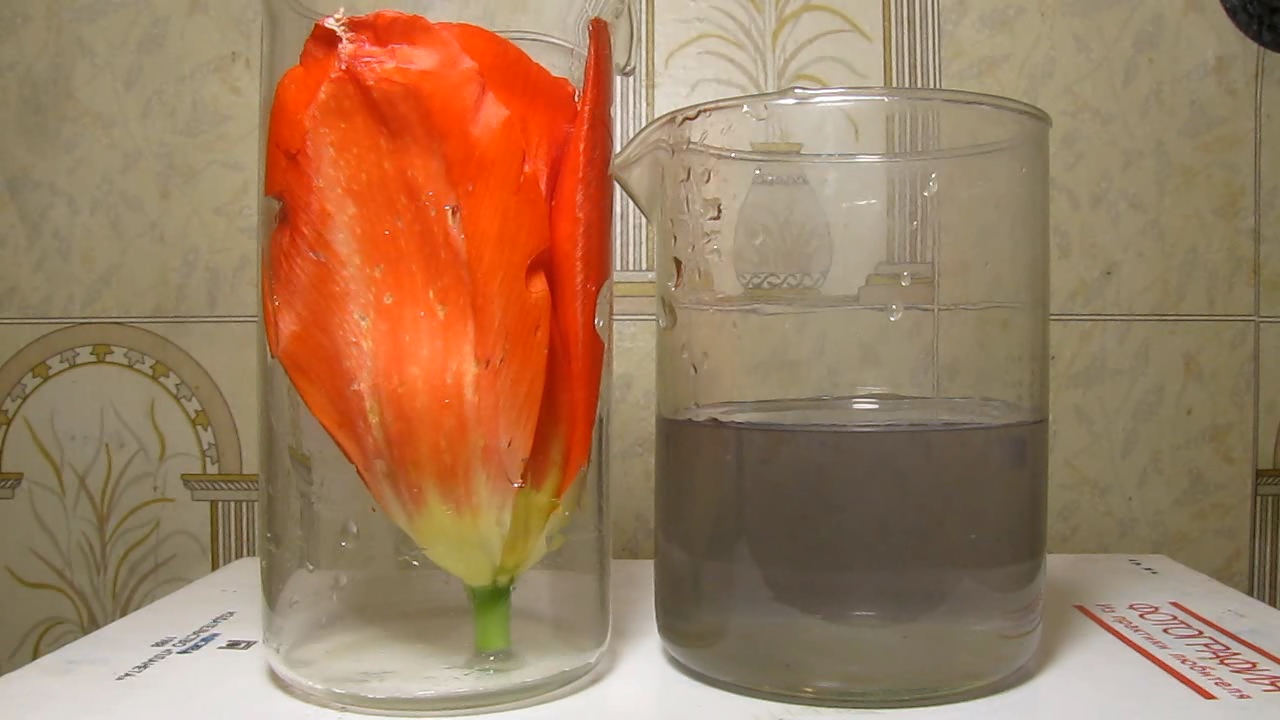
|
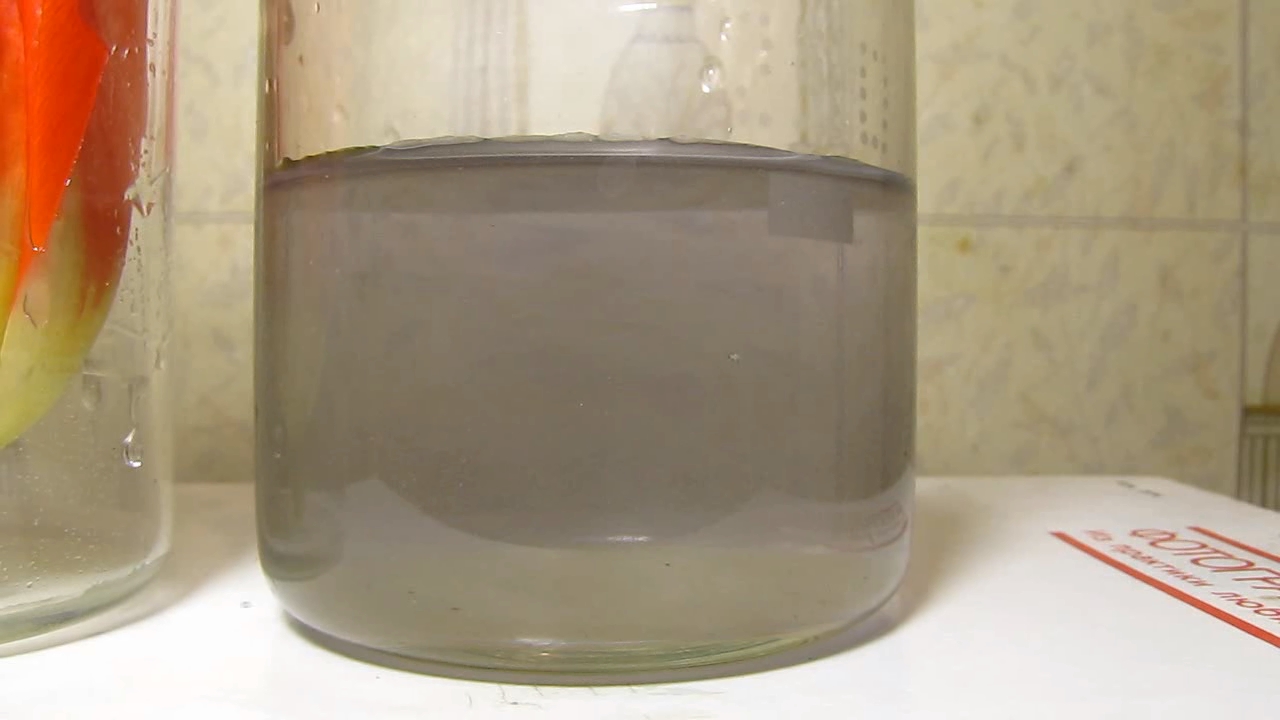
|
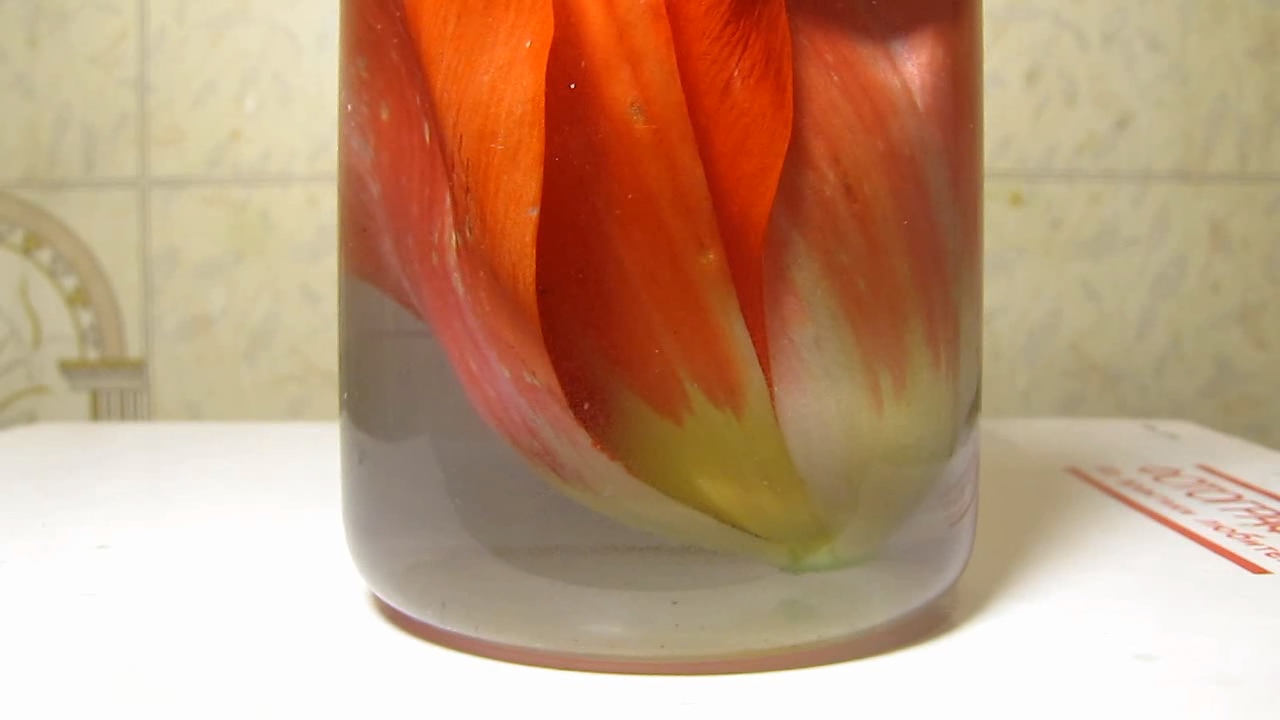
|
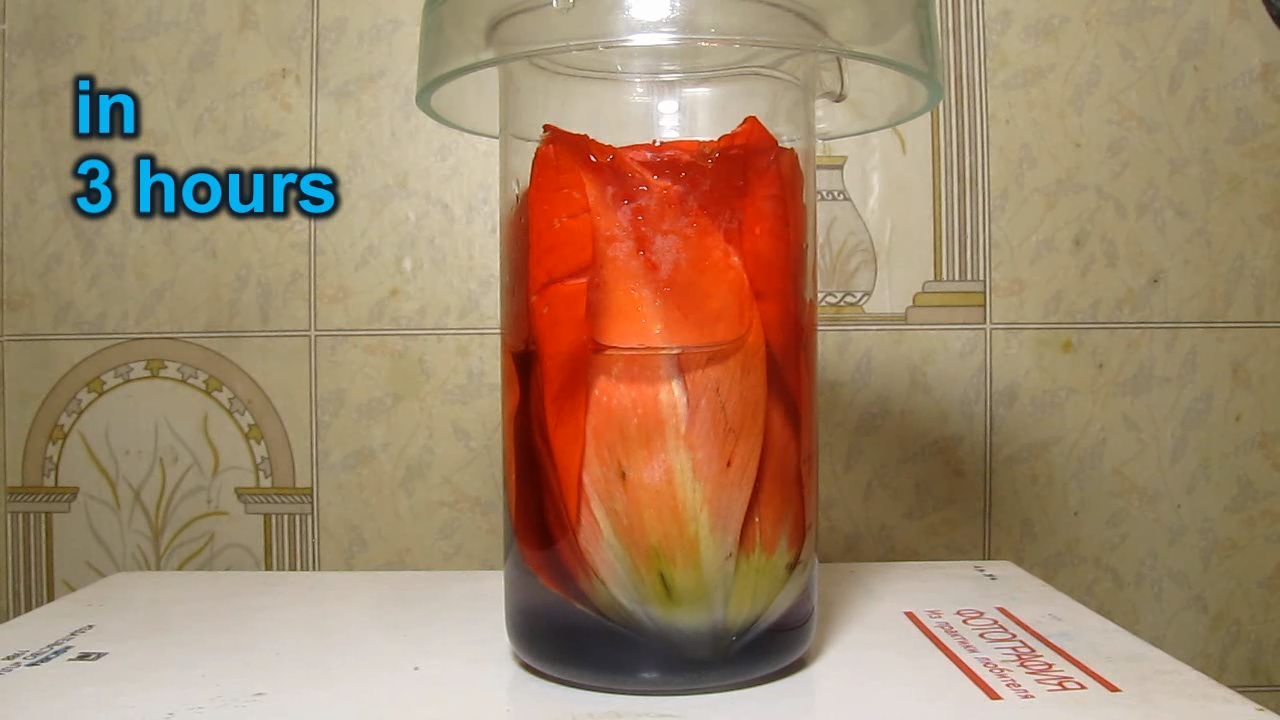
|
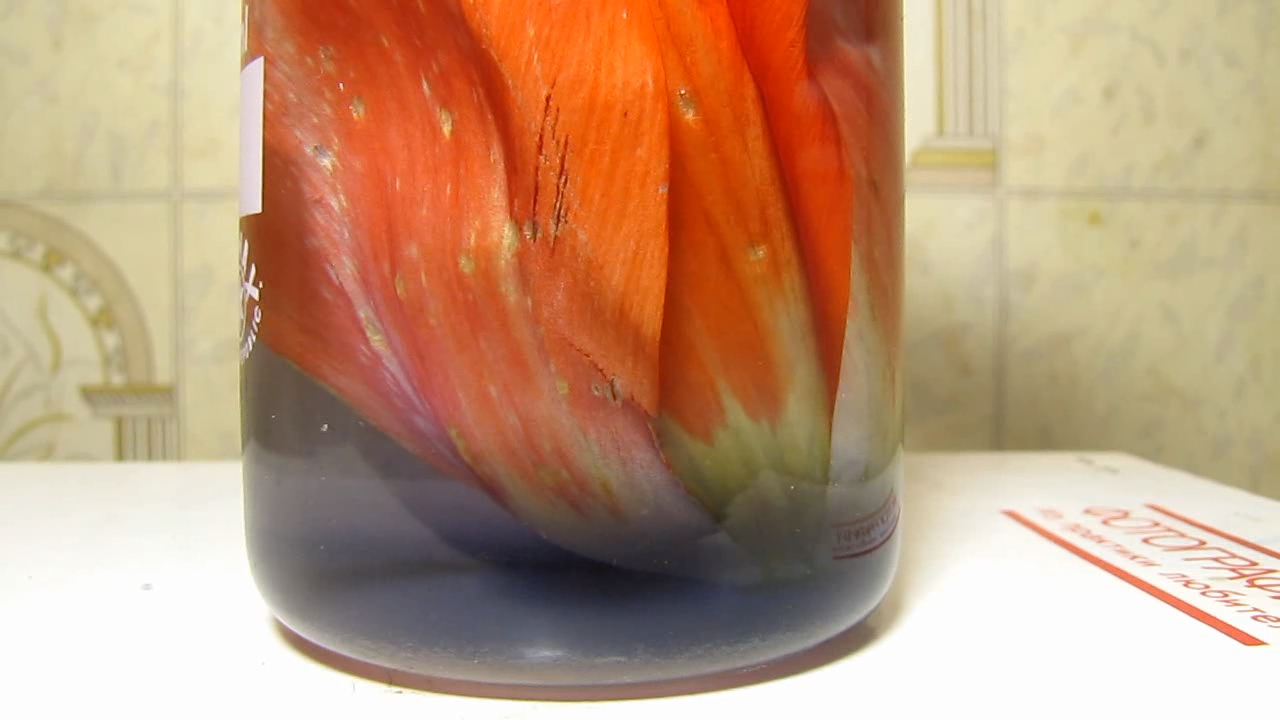
|
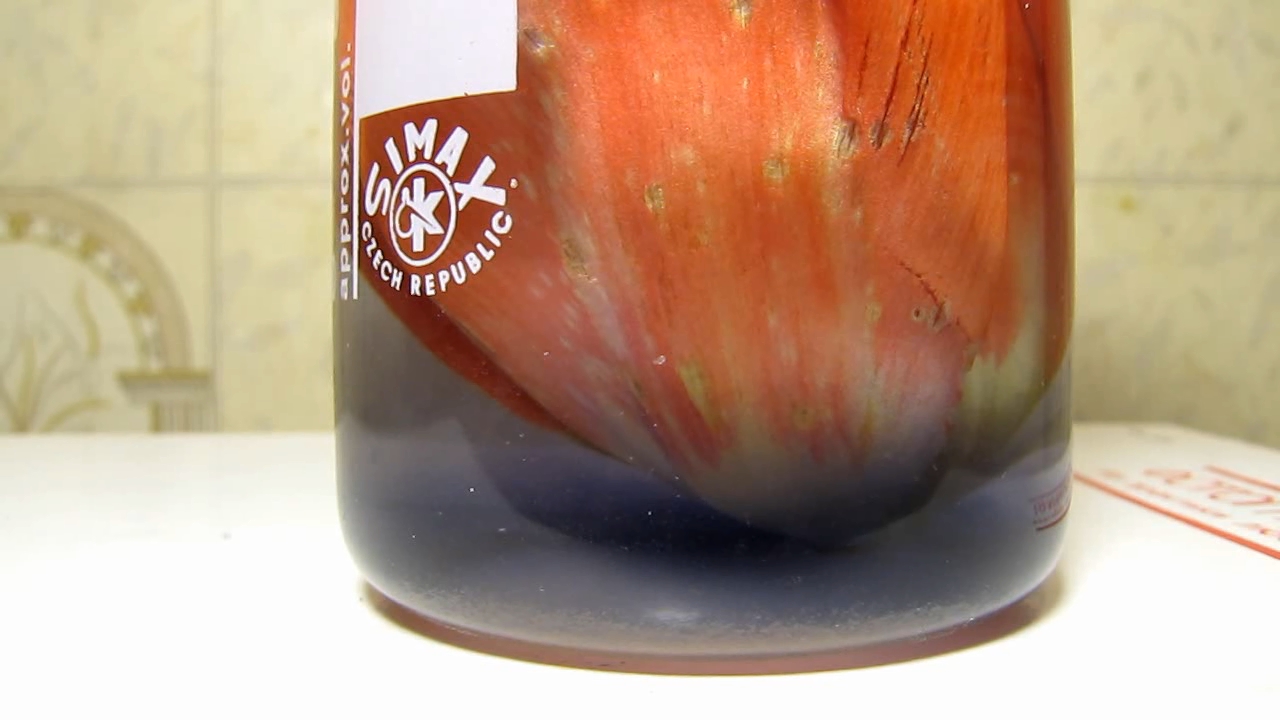
|
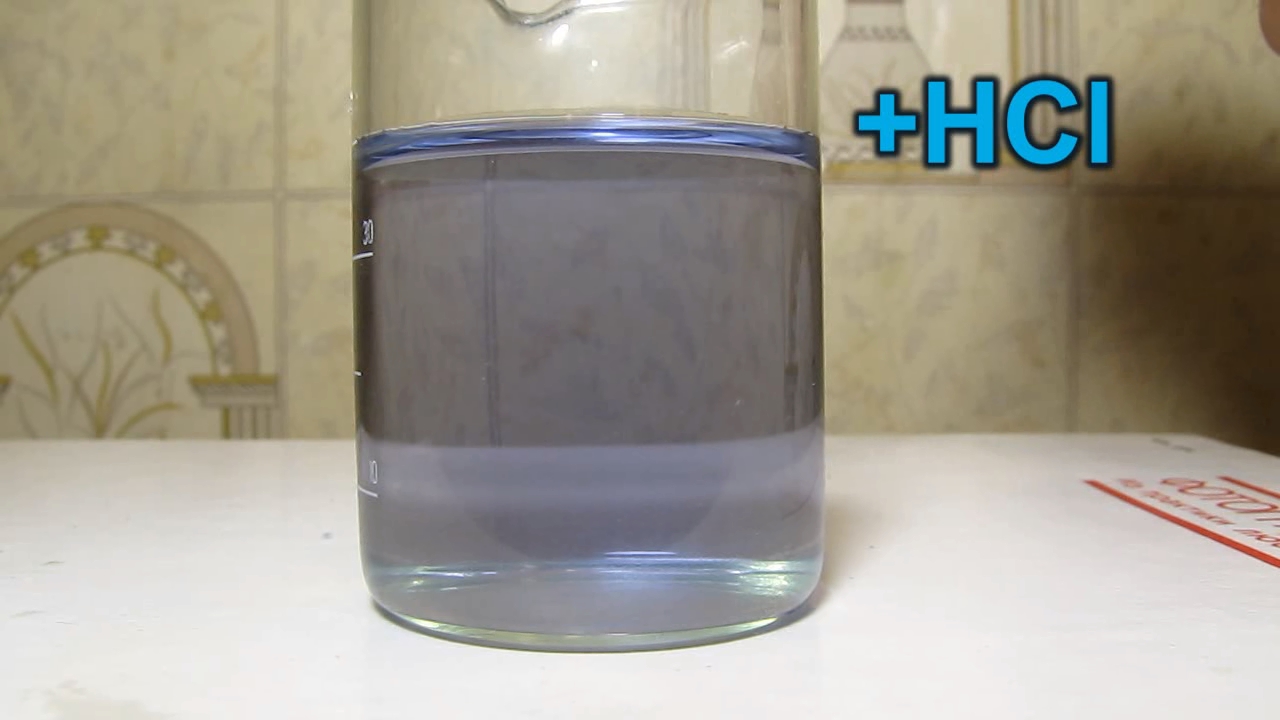
|
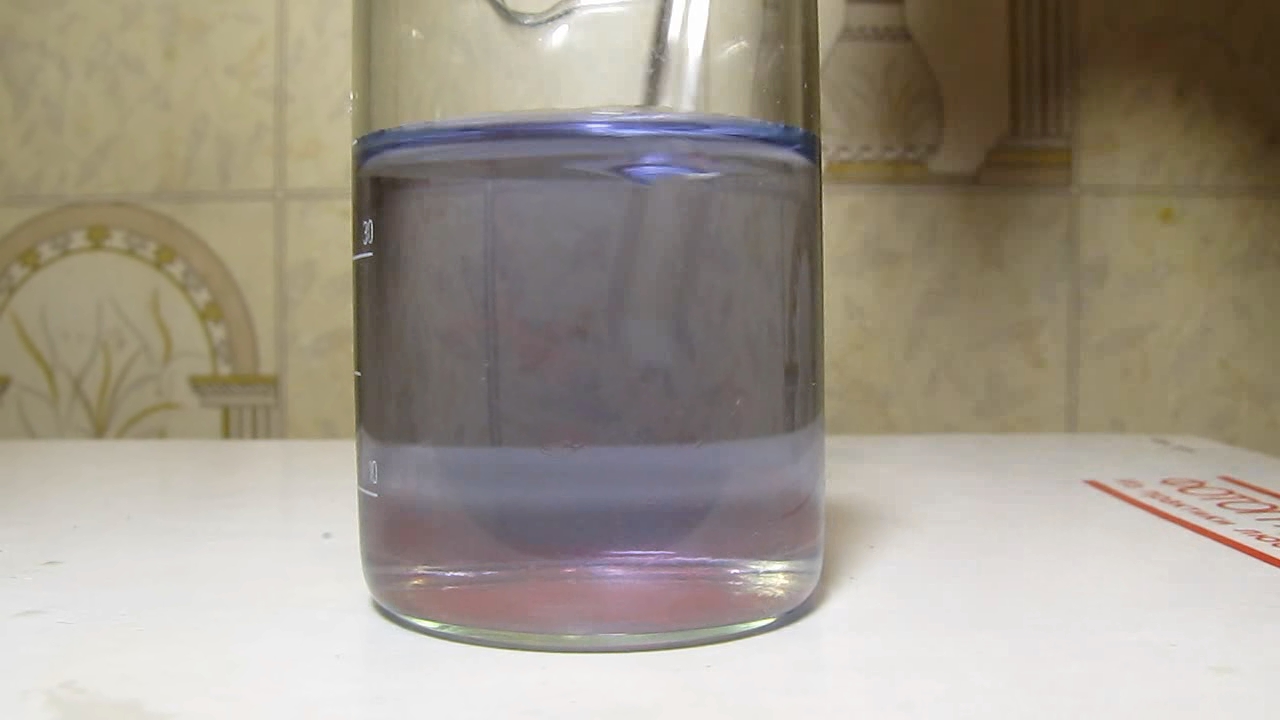
|
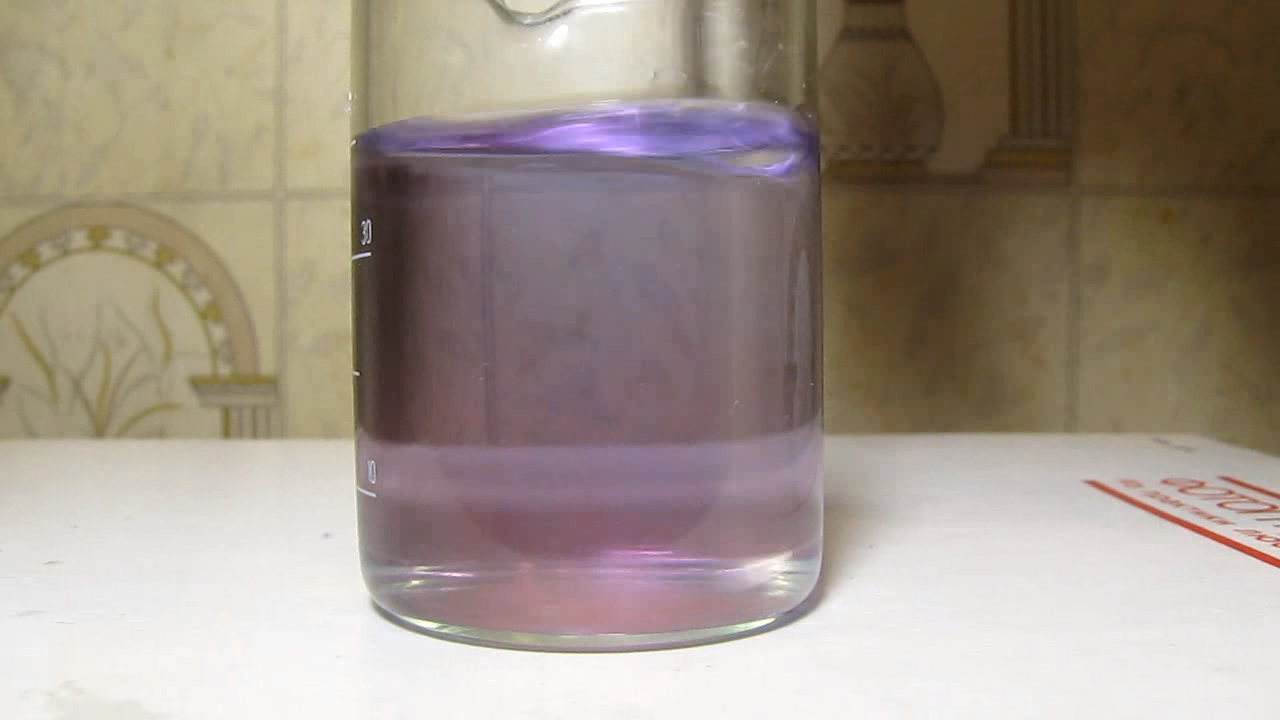
|
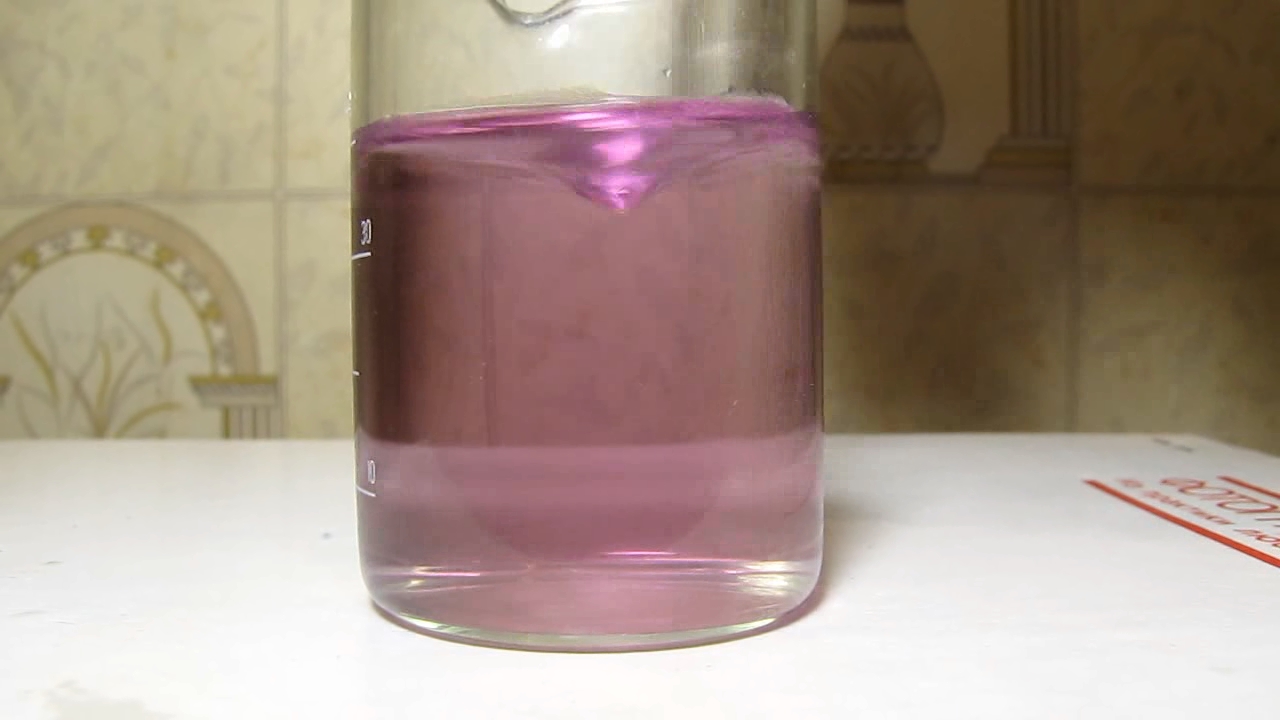
|

|
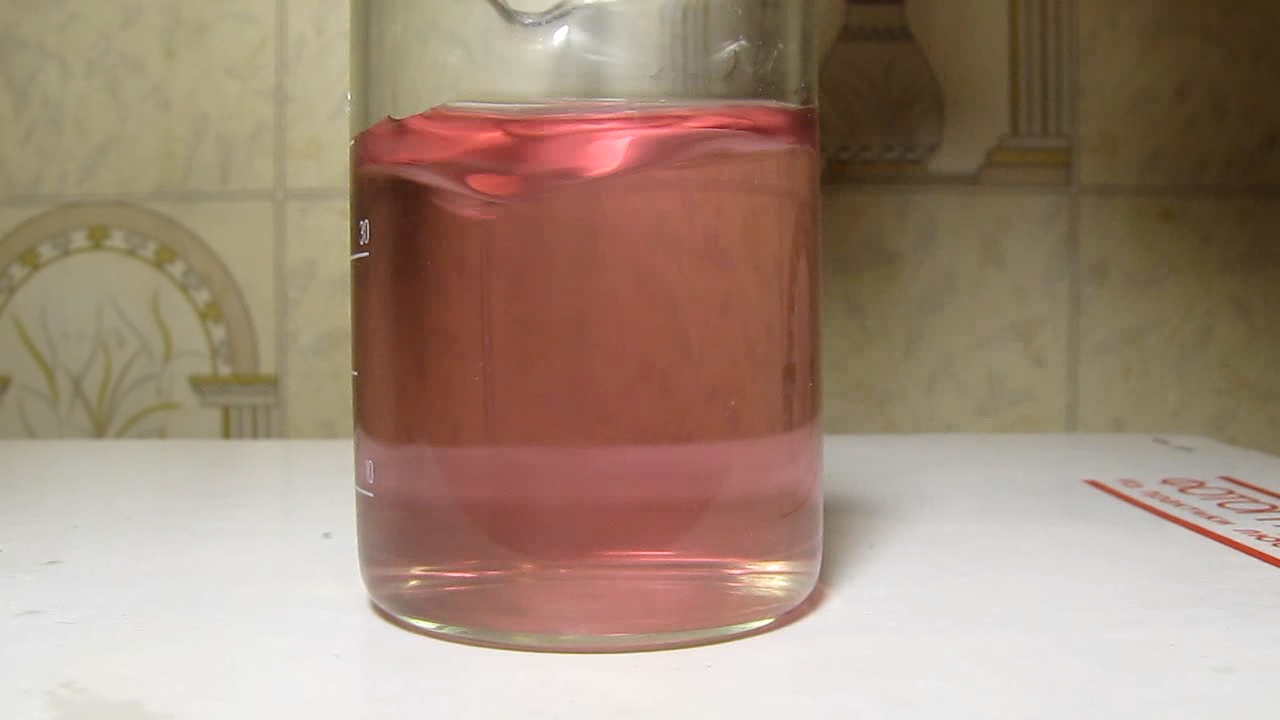
|
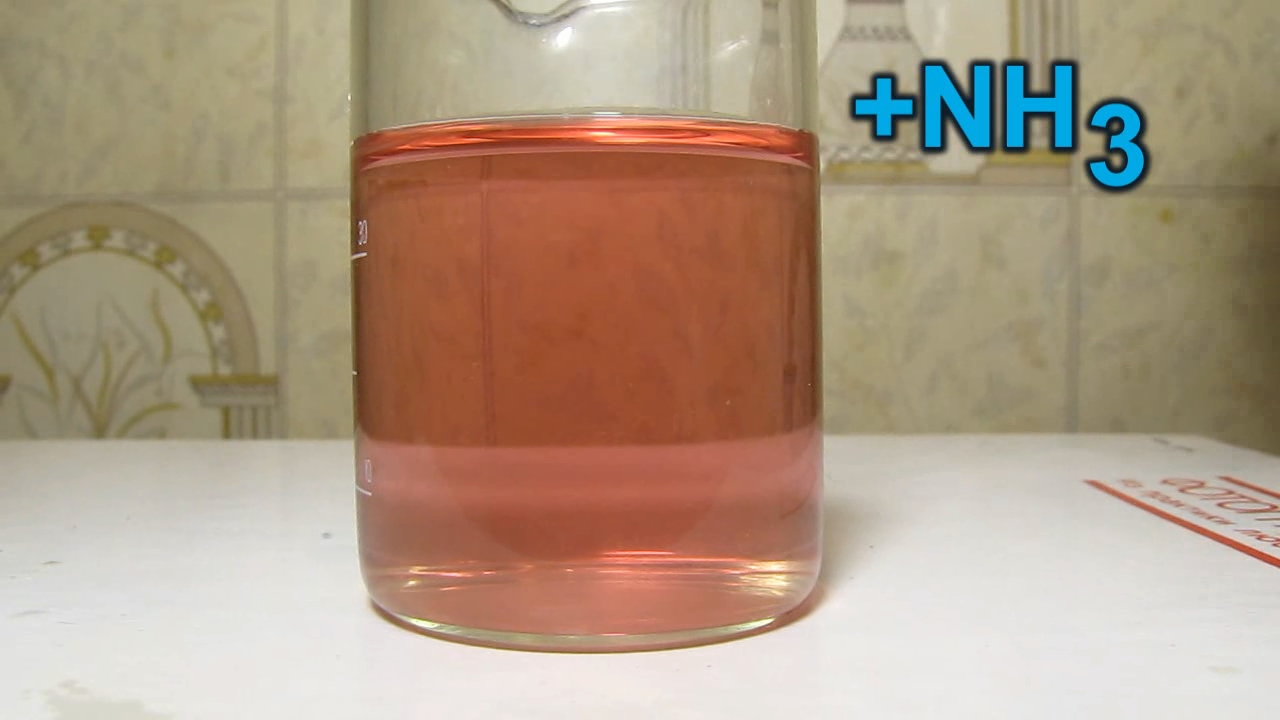
|

|

|
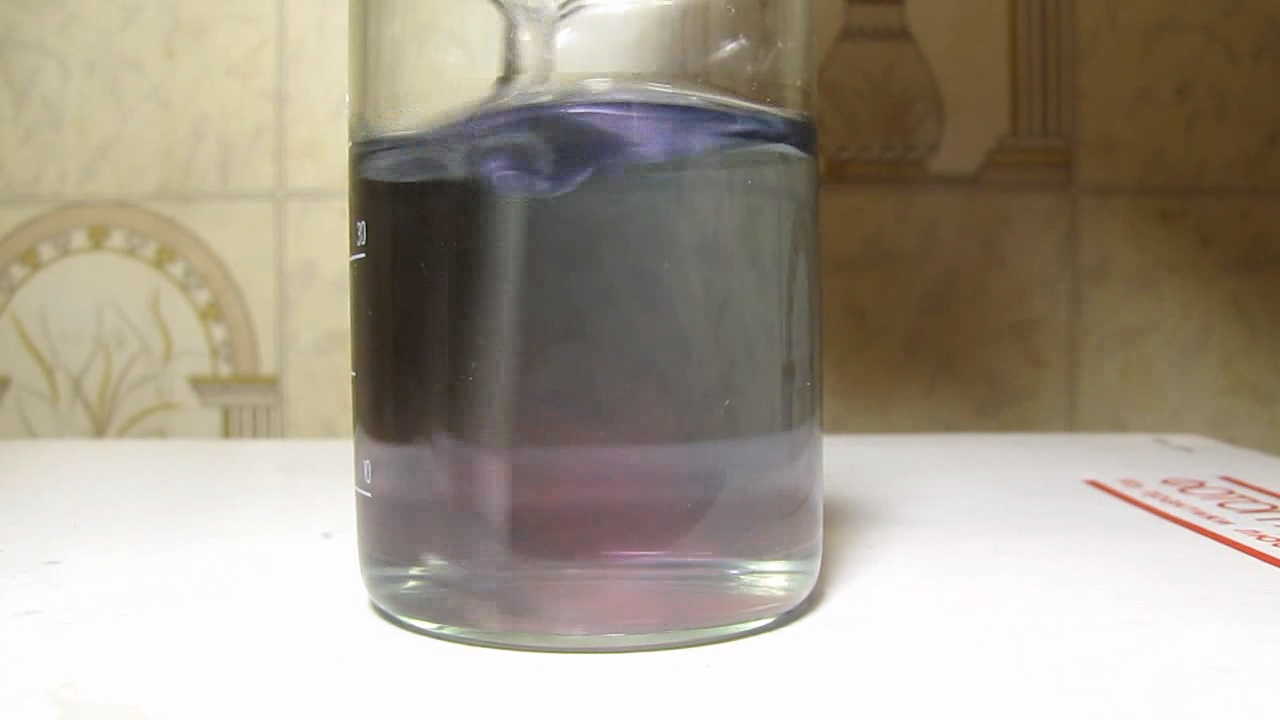
|
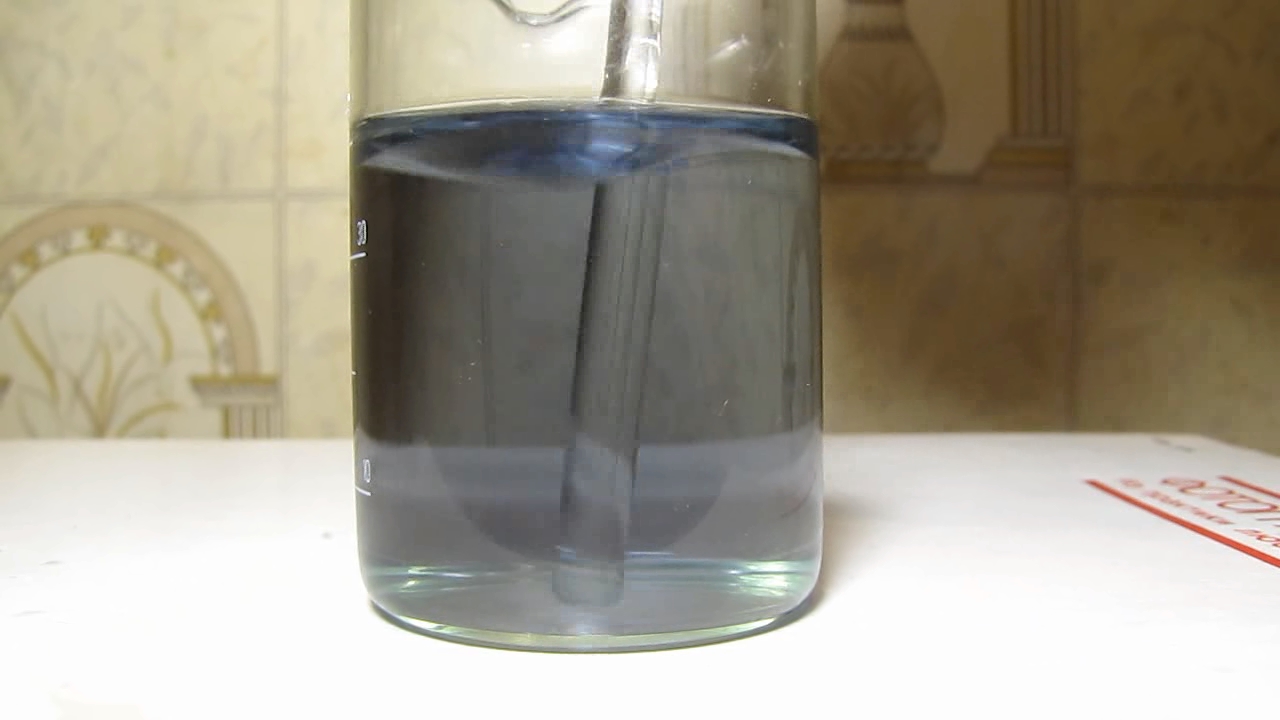
|

|

|

|
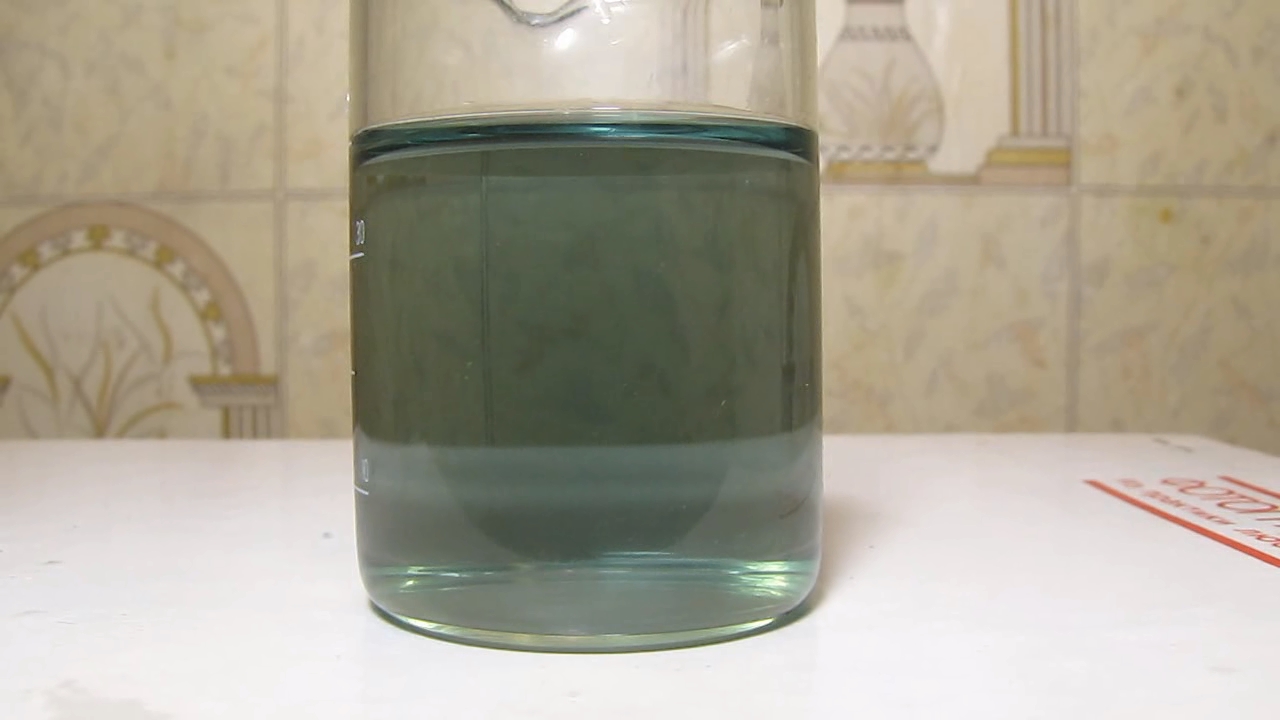
|
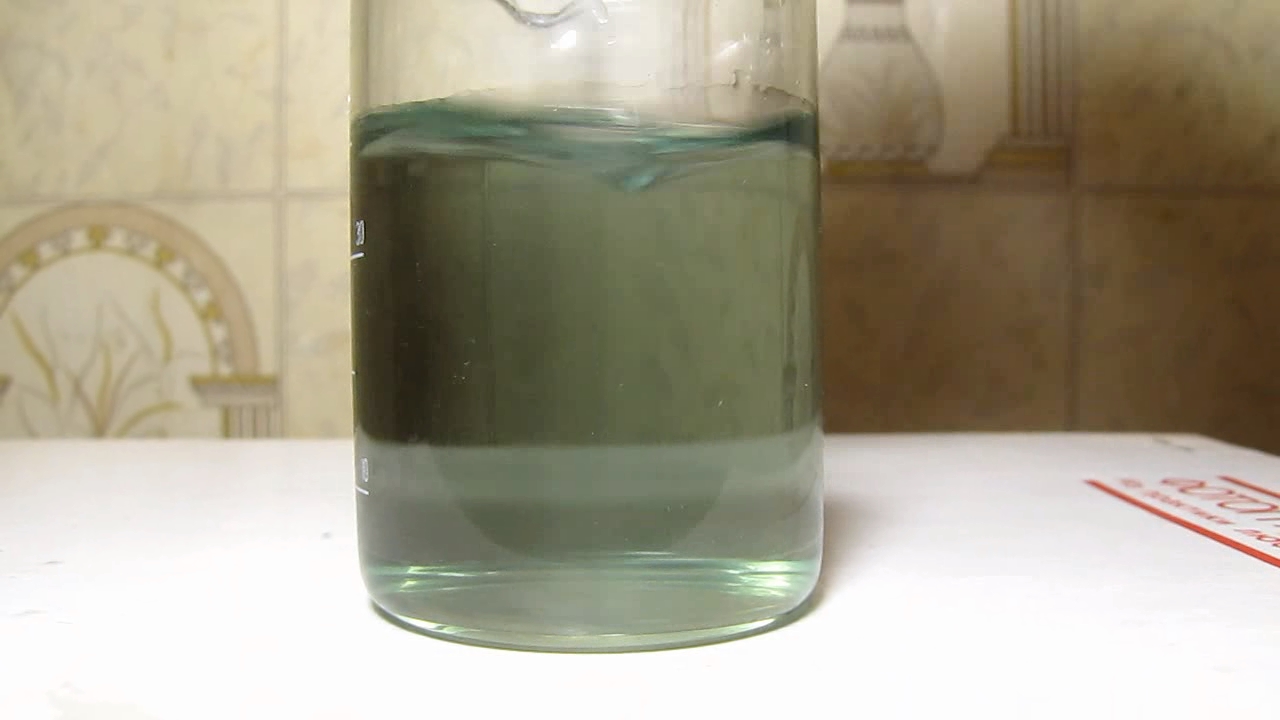
|
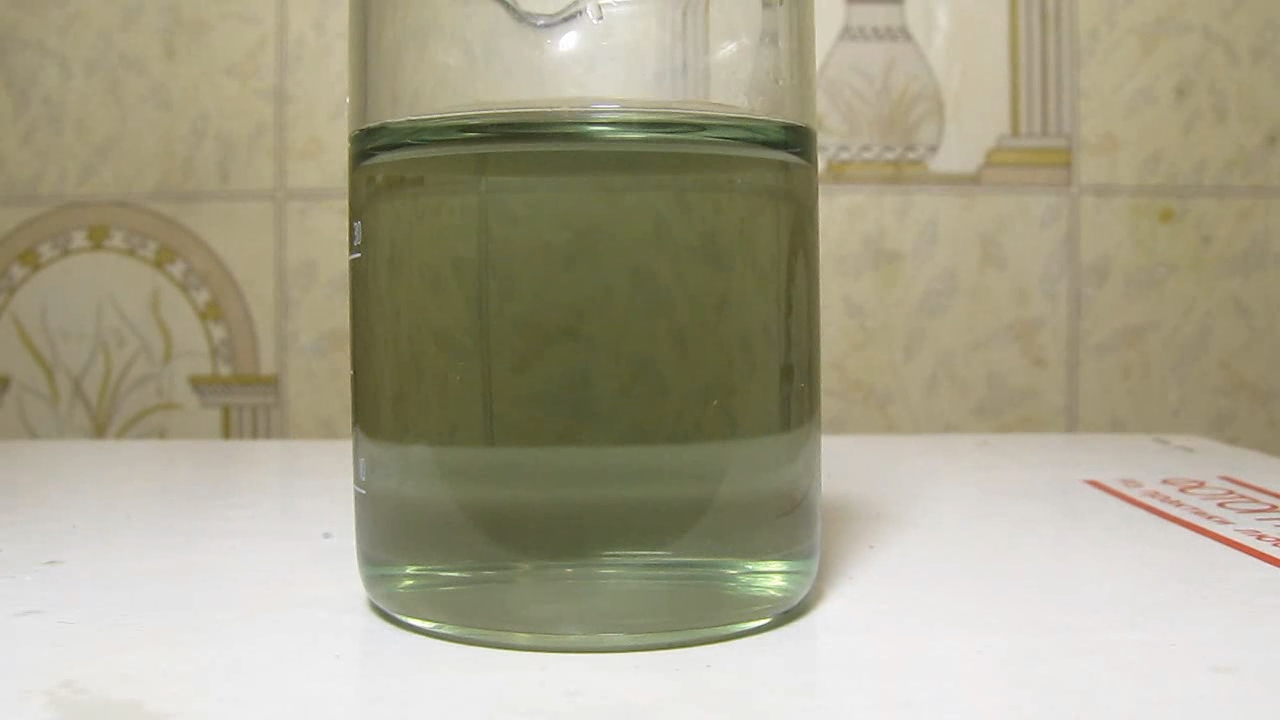
|
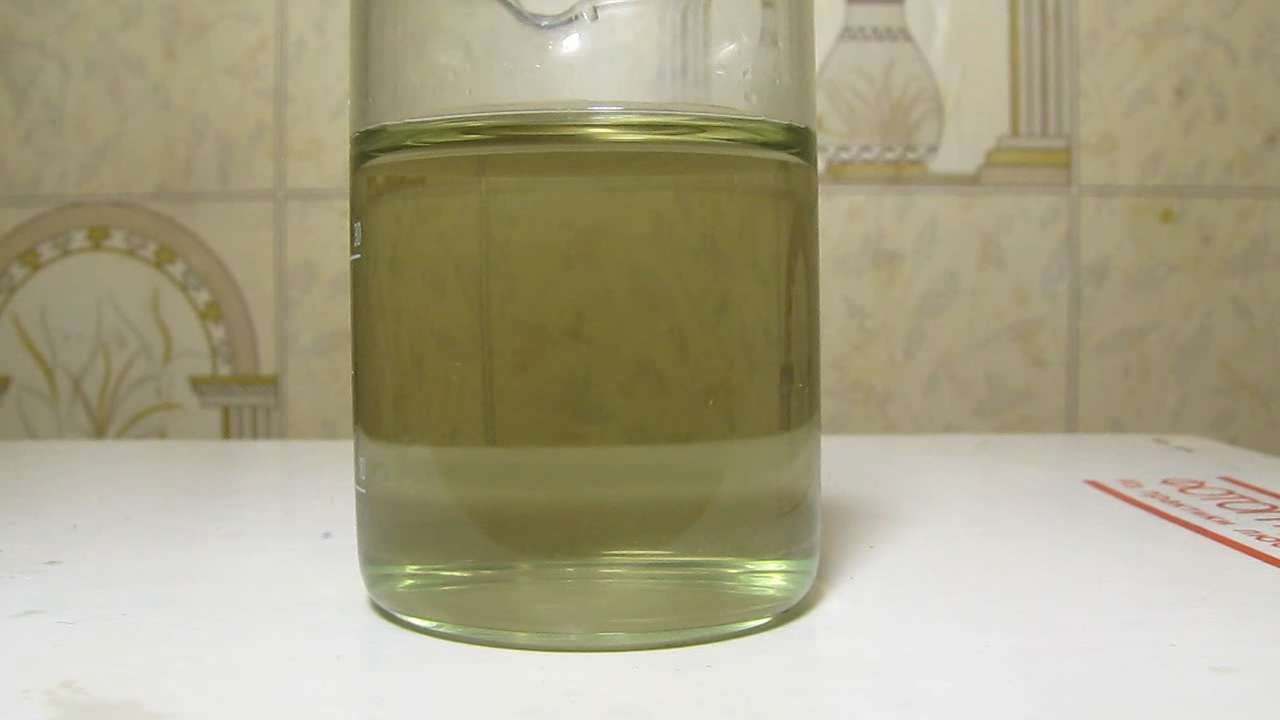
|
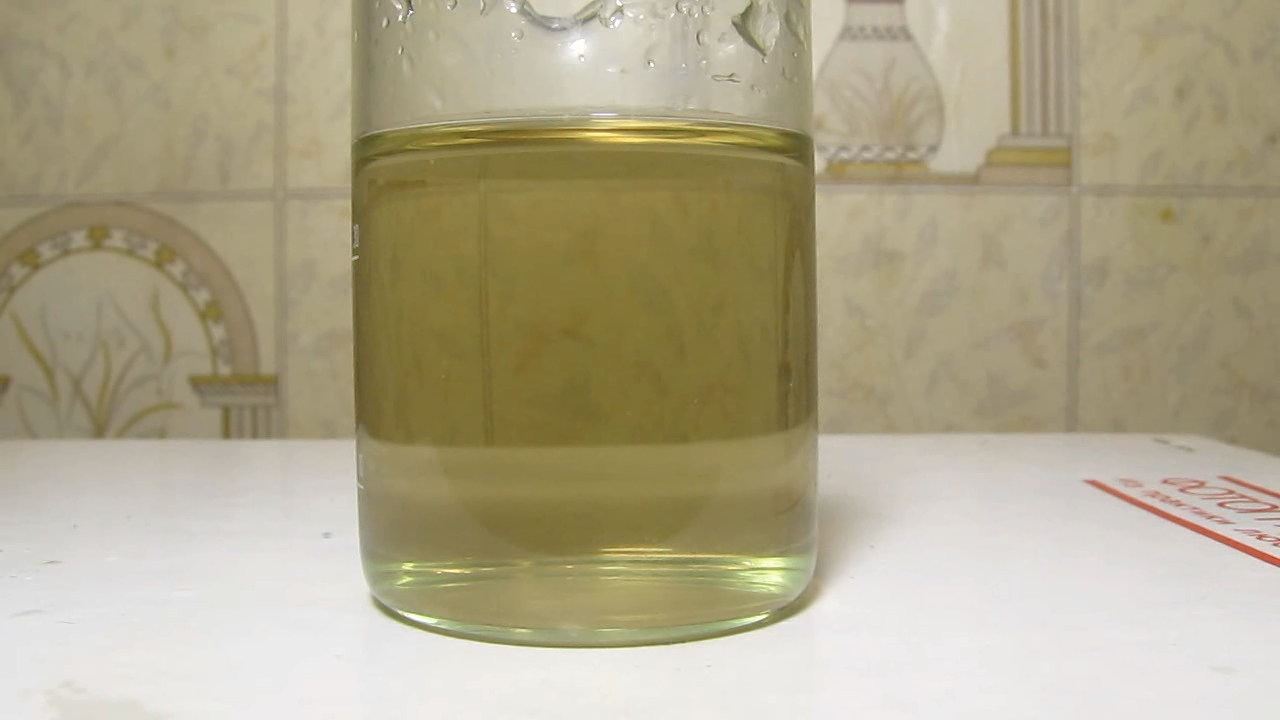
|
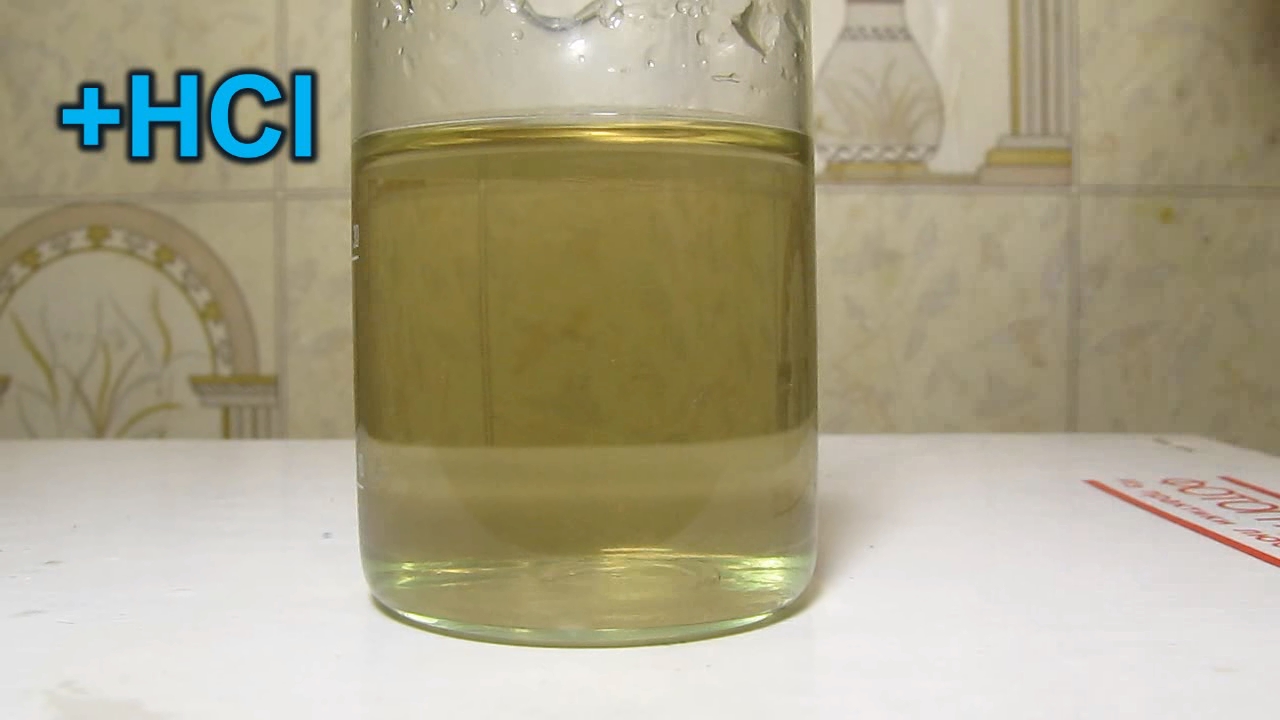
|
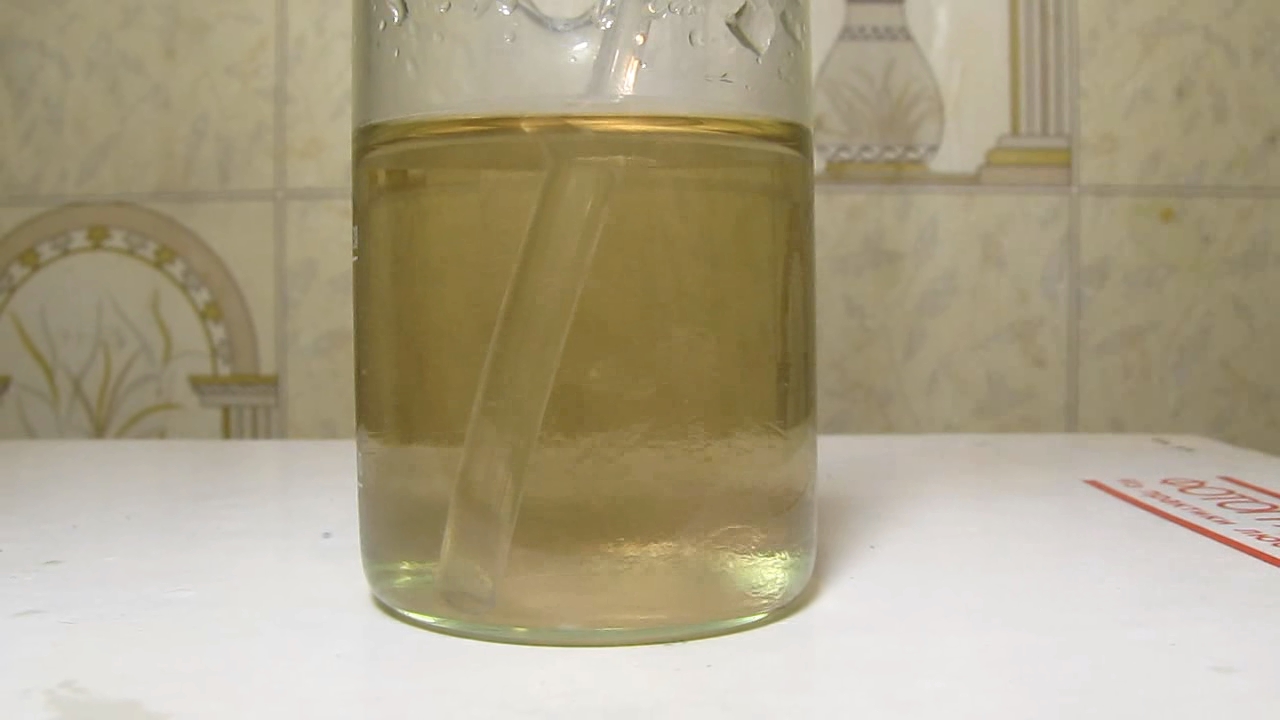
|

|
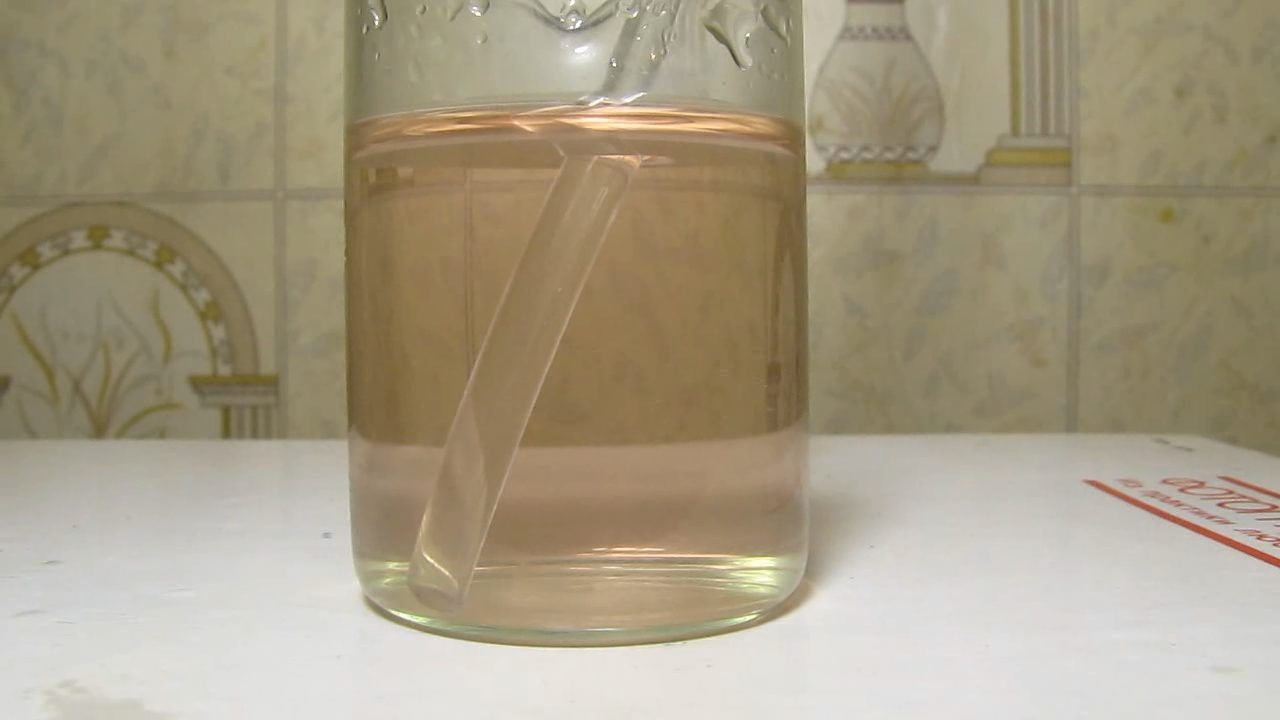
|
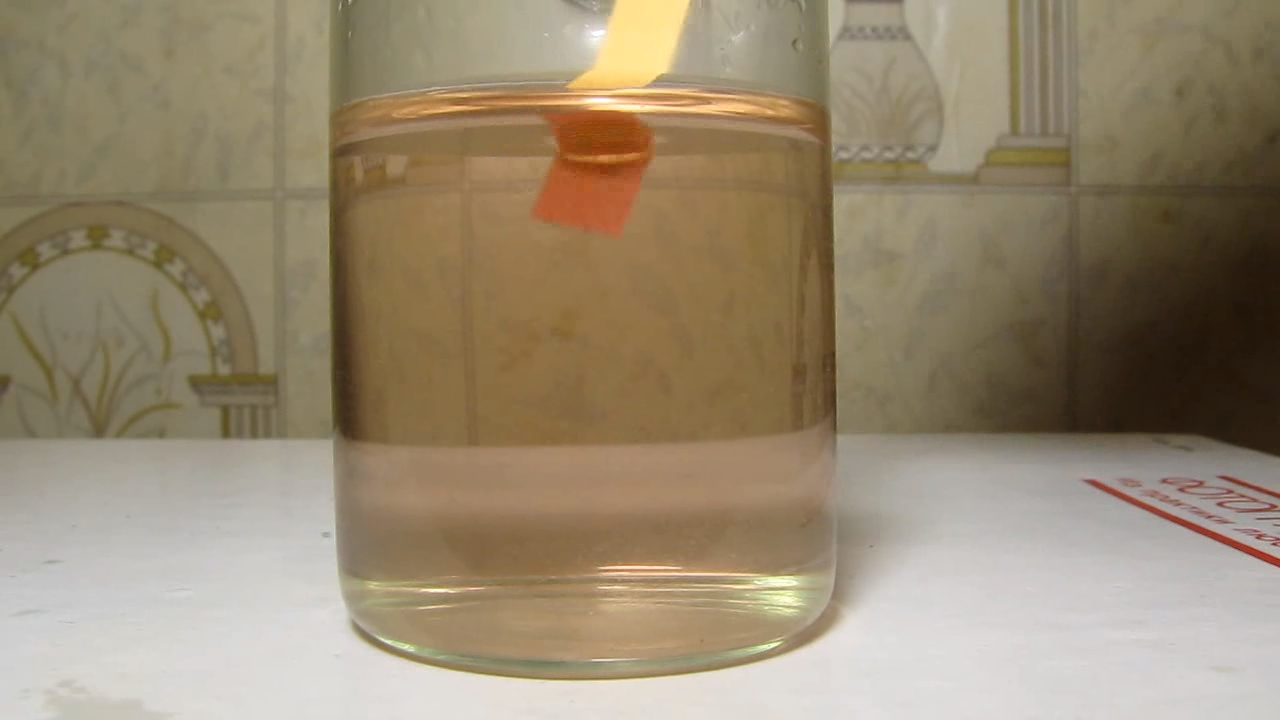
|

|
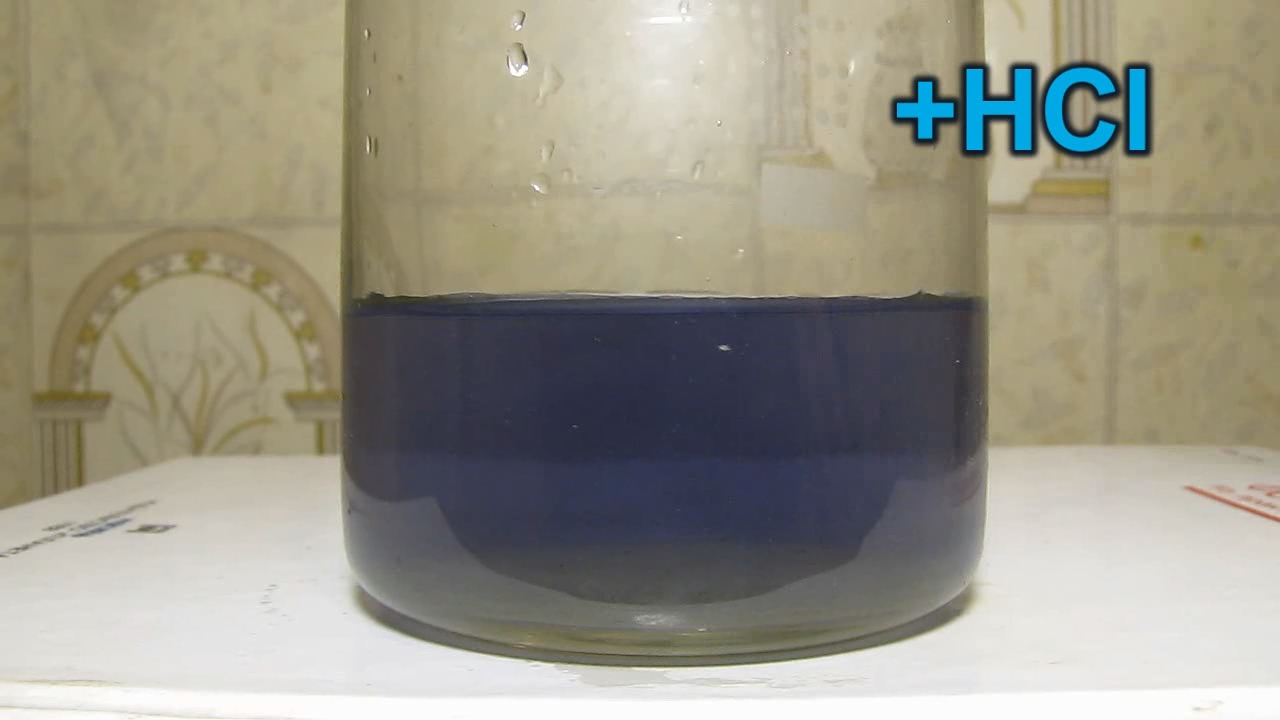
Red tulip, tap water, ammonia and hydrochloric acid (experiment 2) |
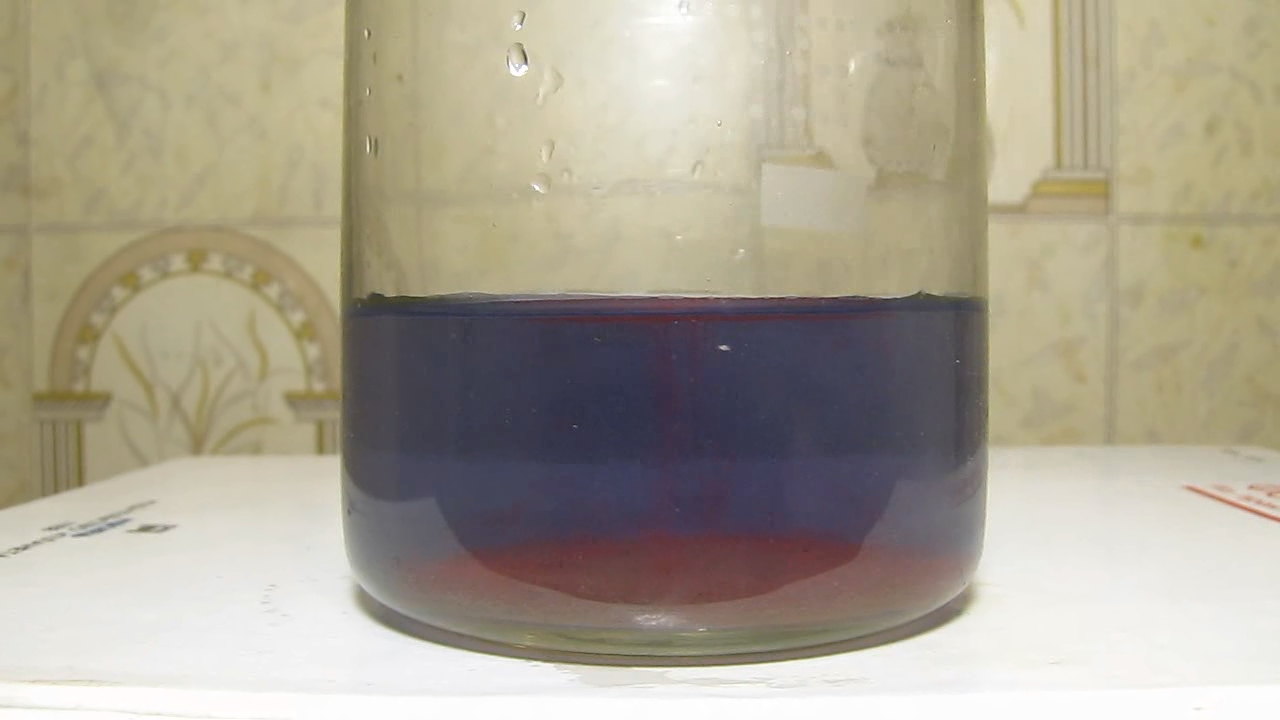
|
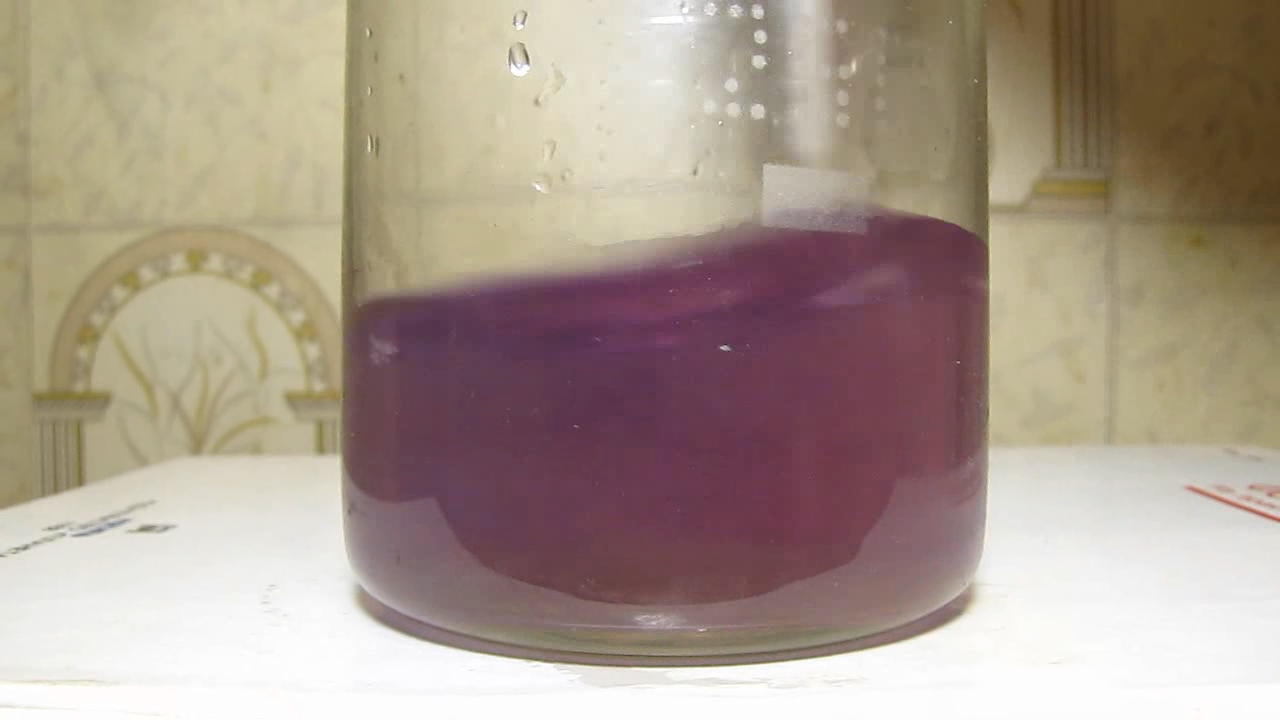
|
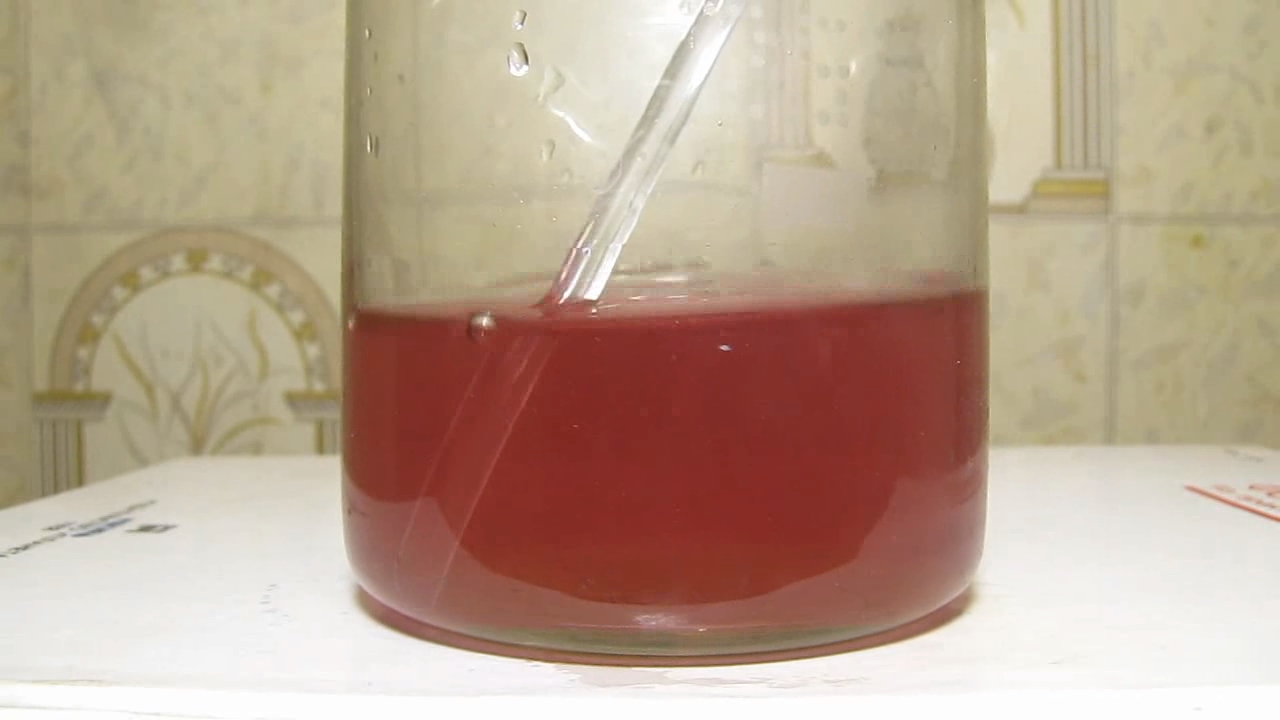
|

|

|
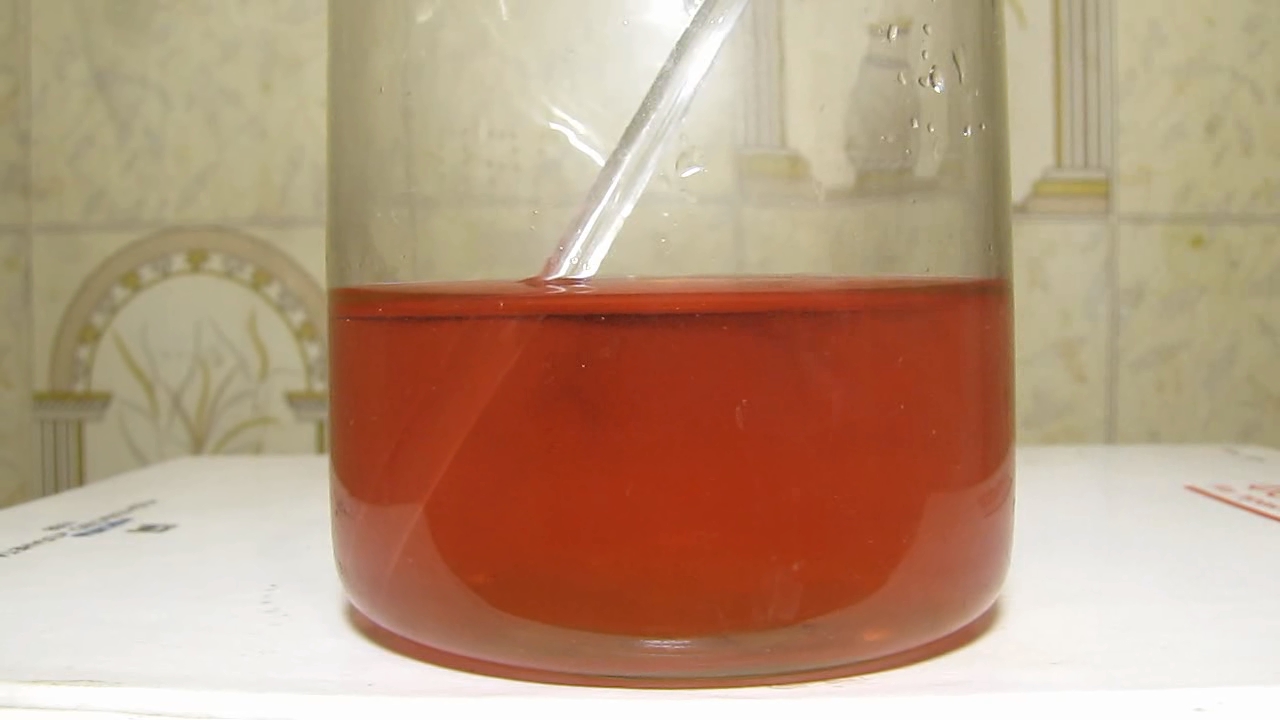
|
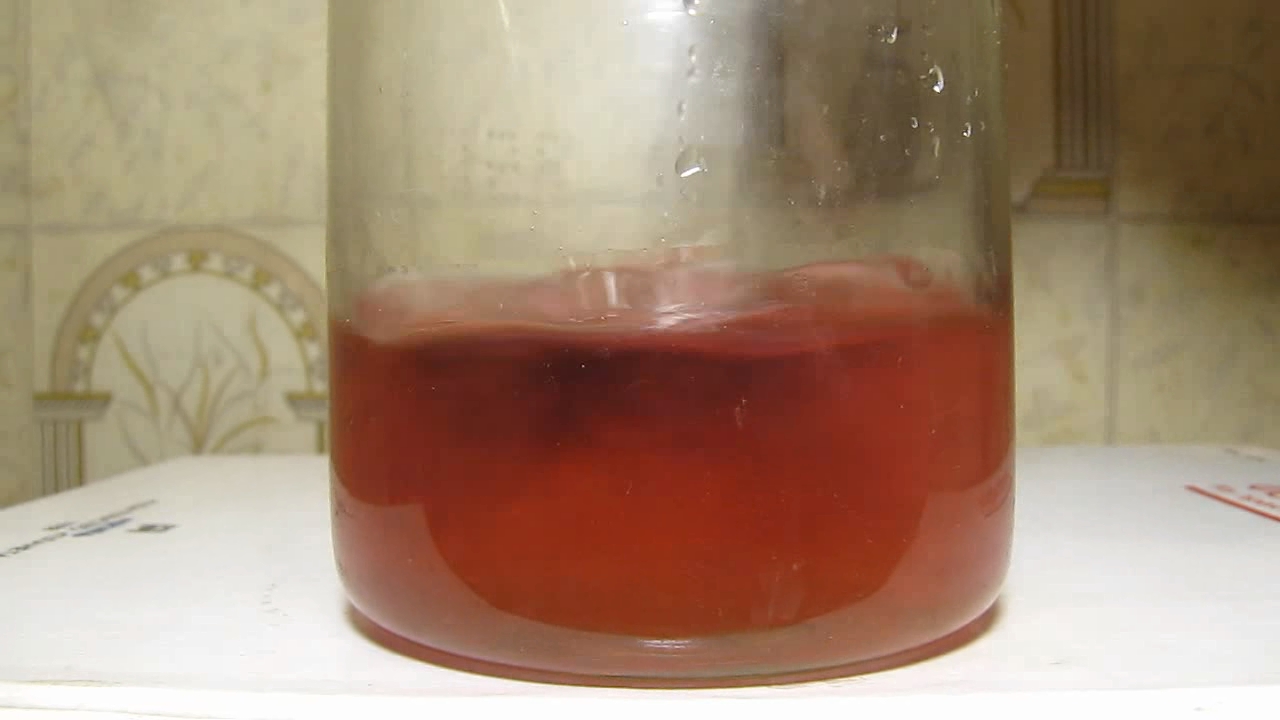
|

|
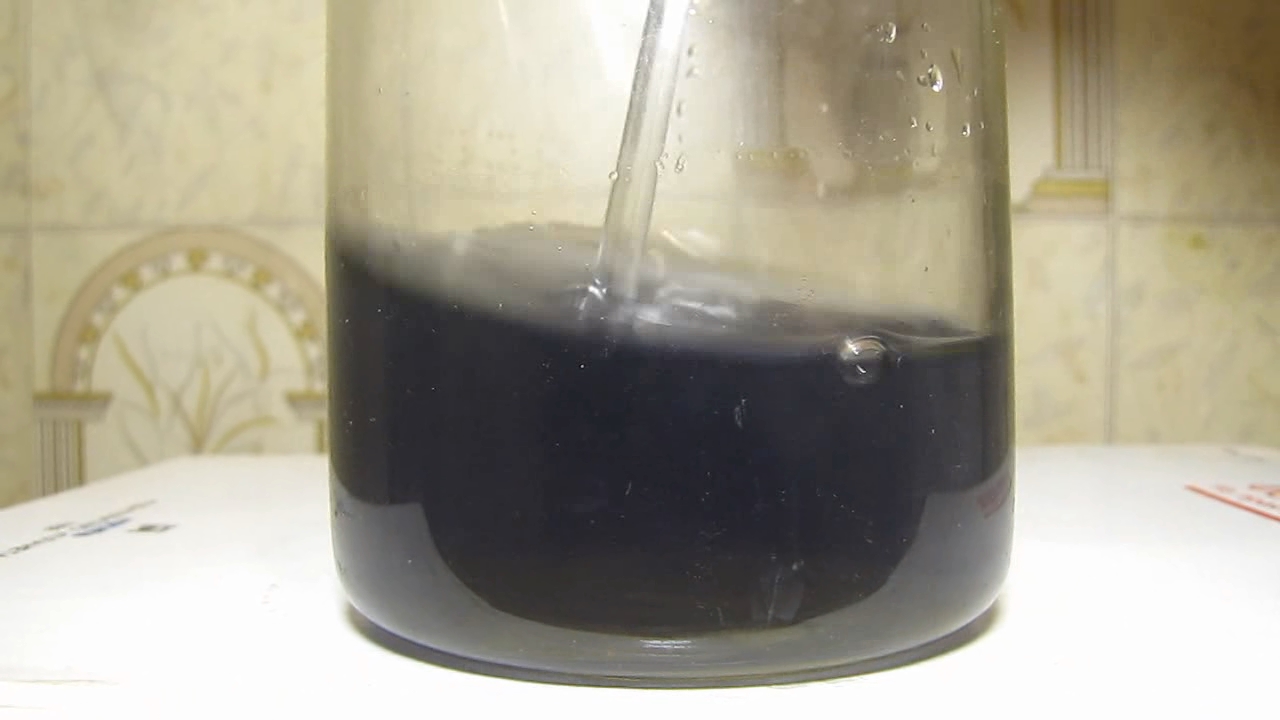
|
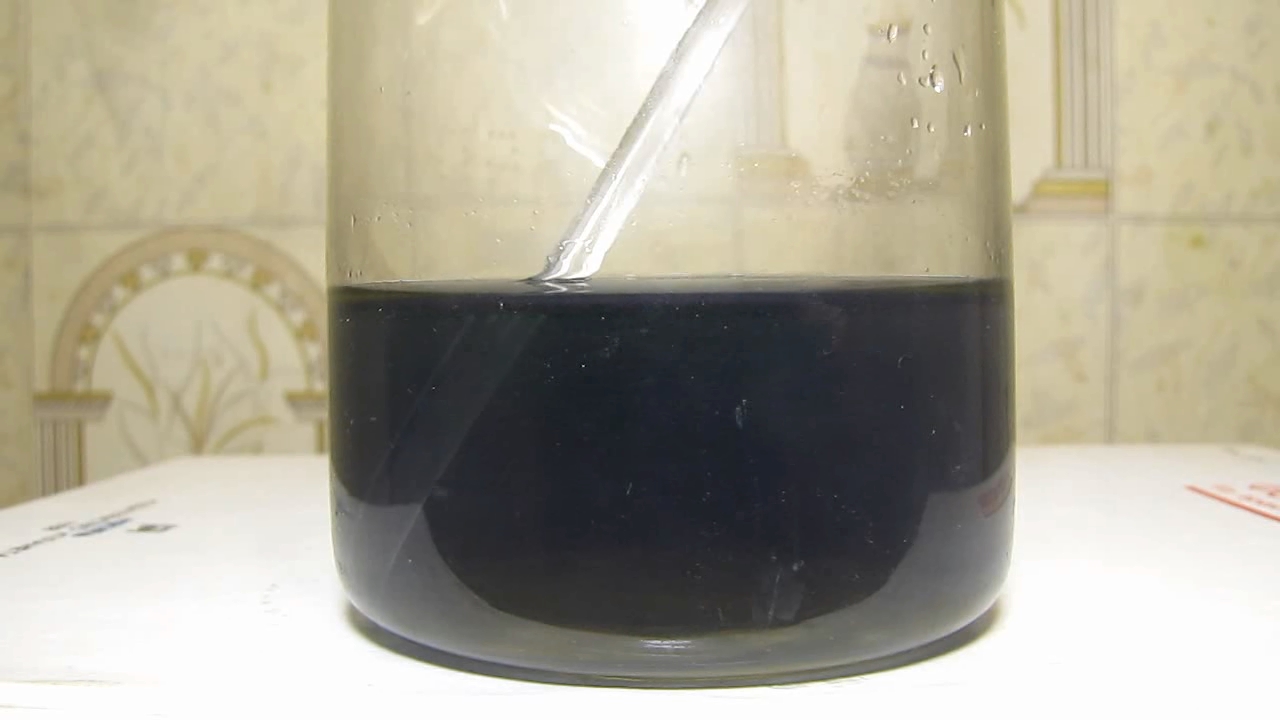
|
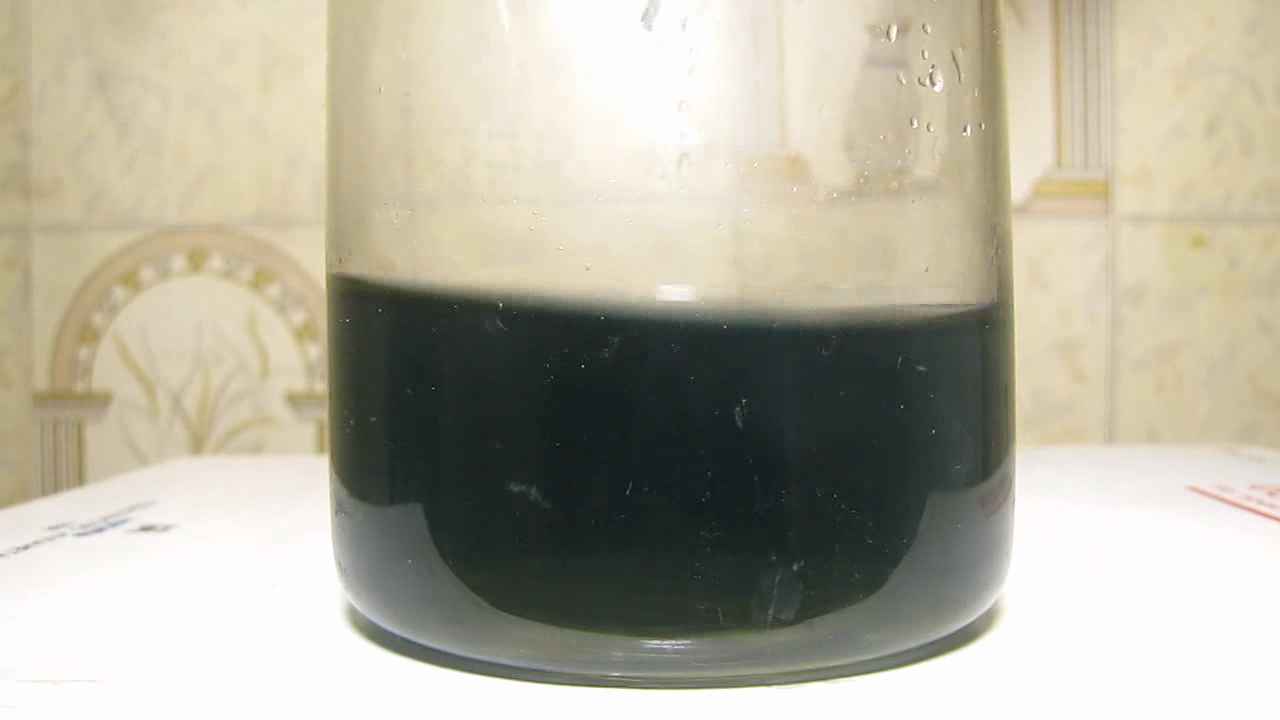
|
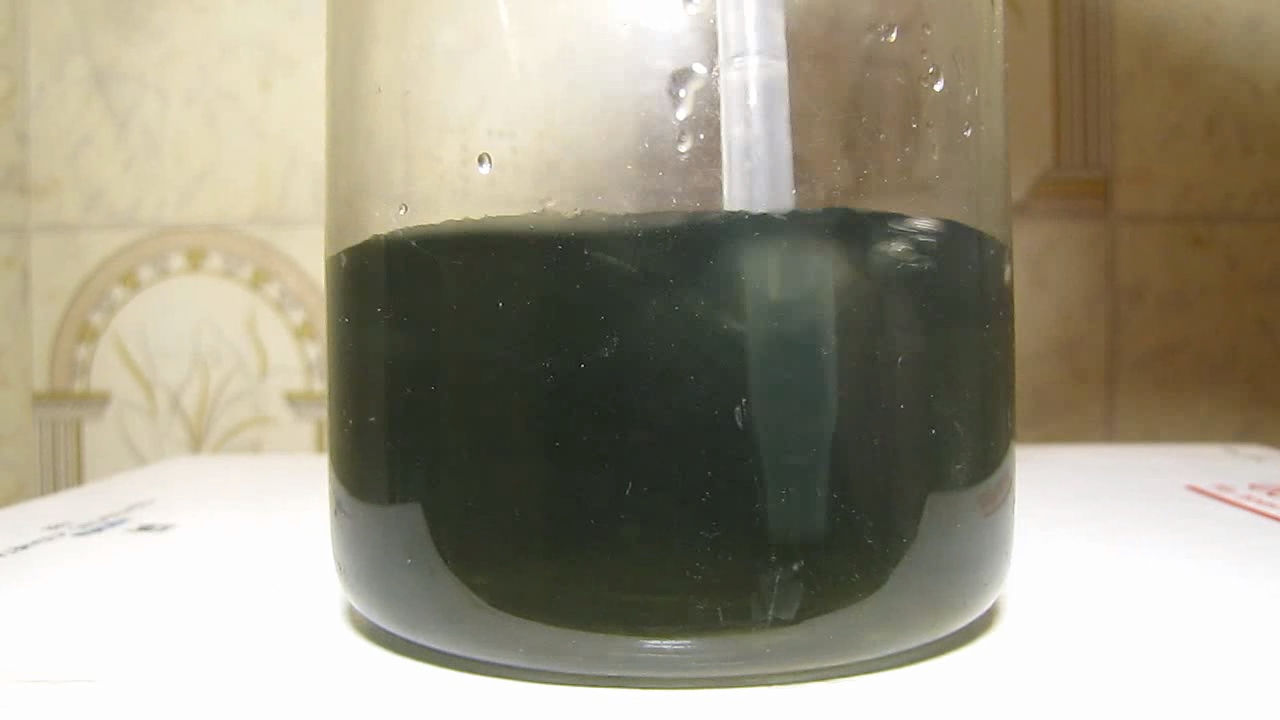
|

|

|
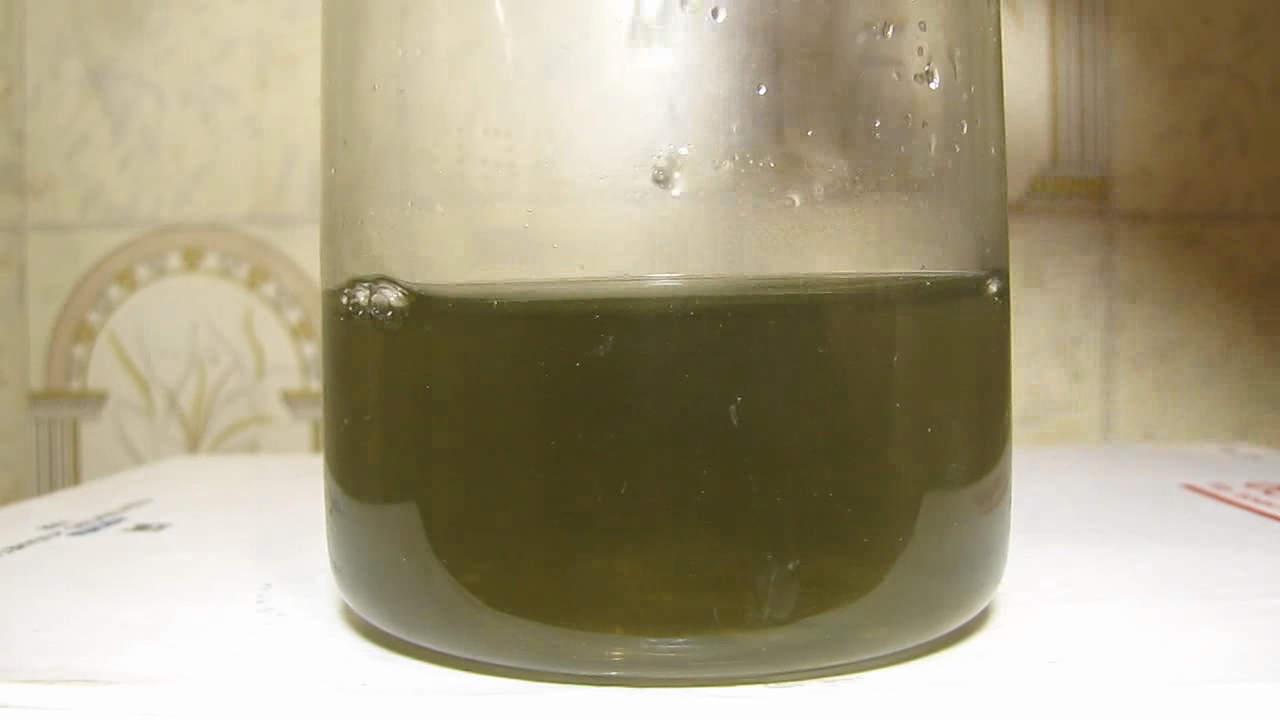
|

|
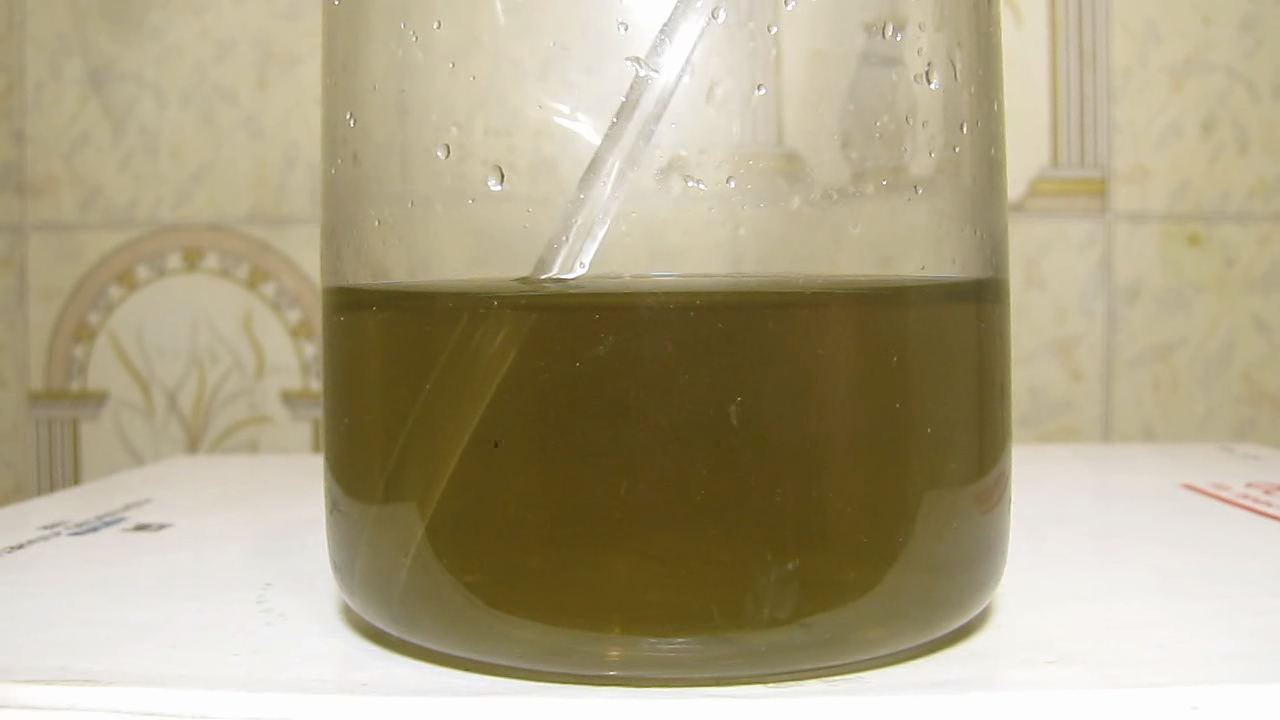
|
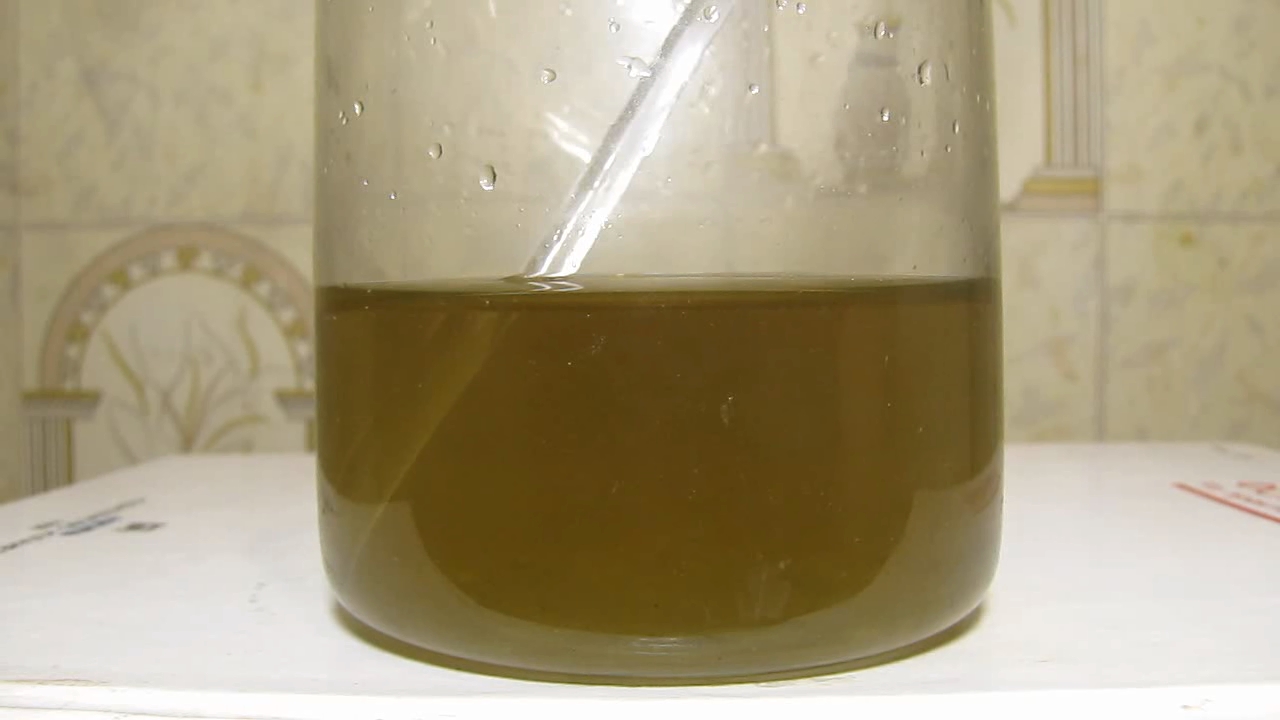
|
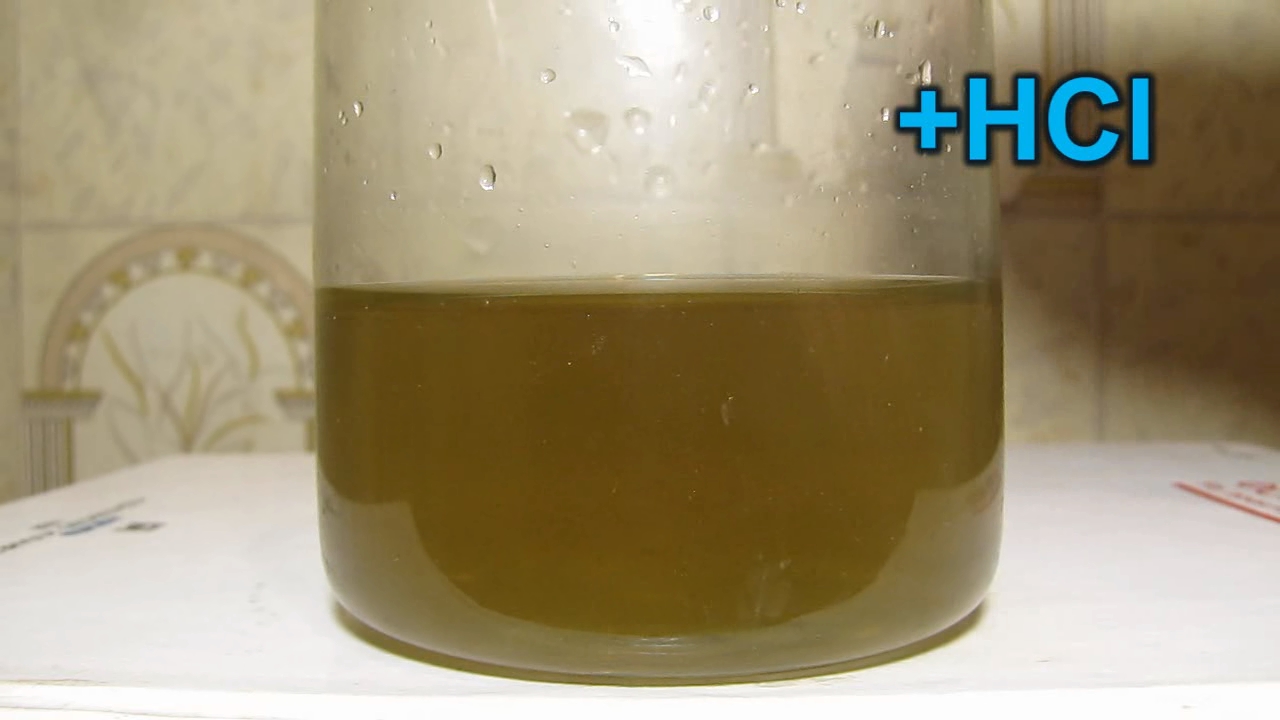
|
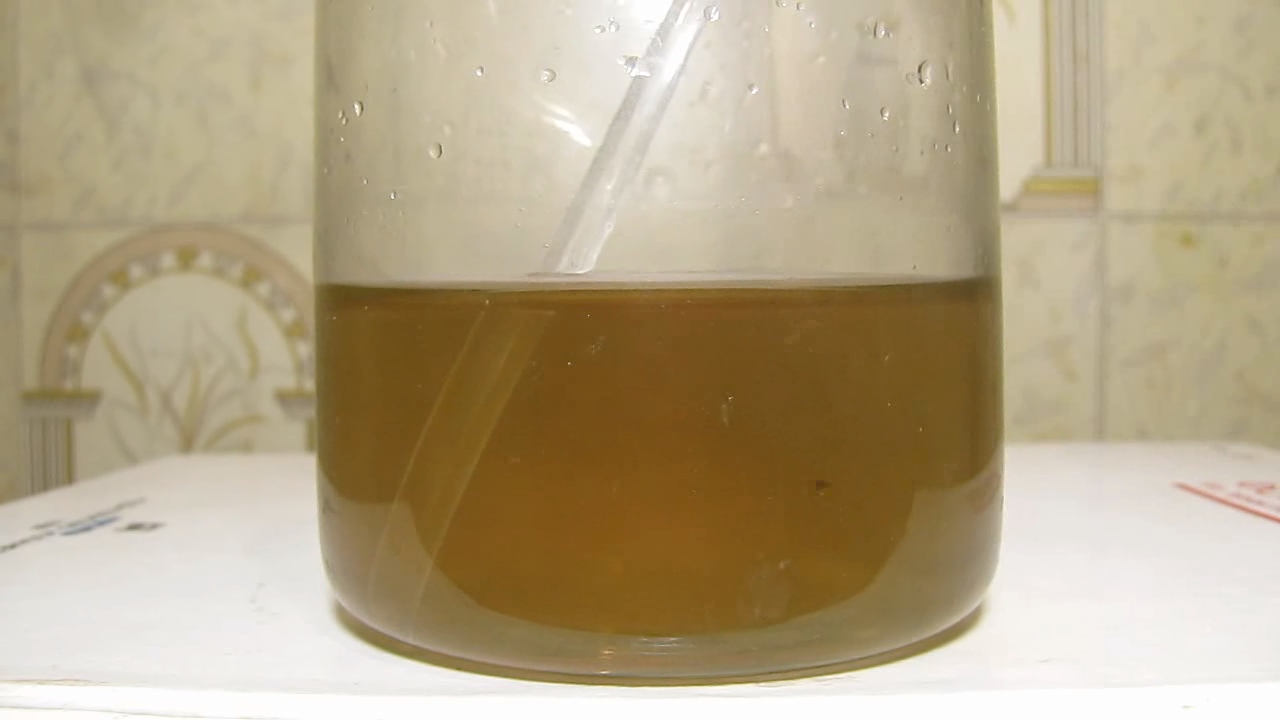
|
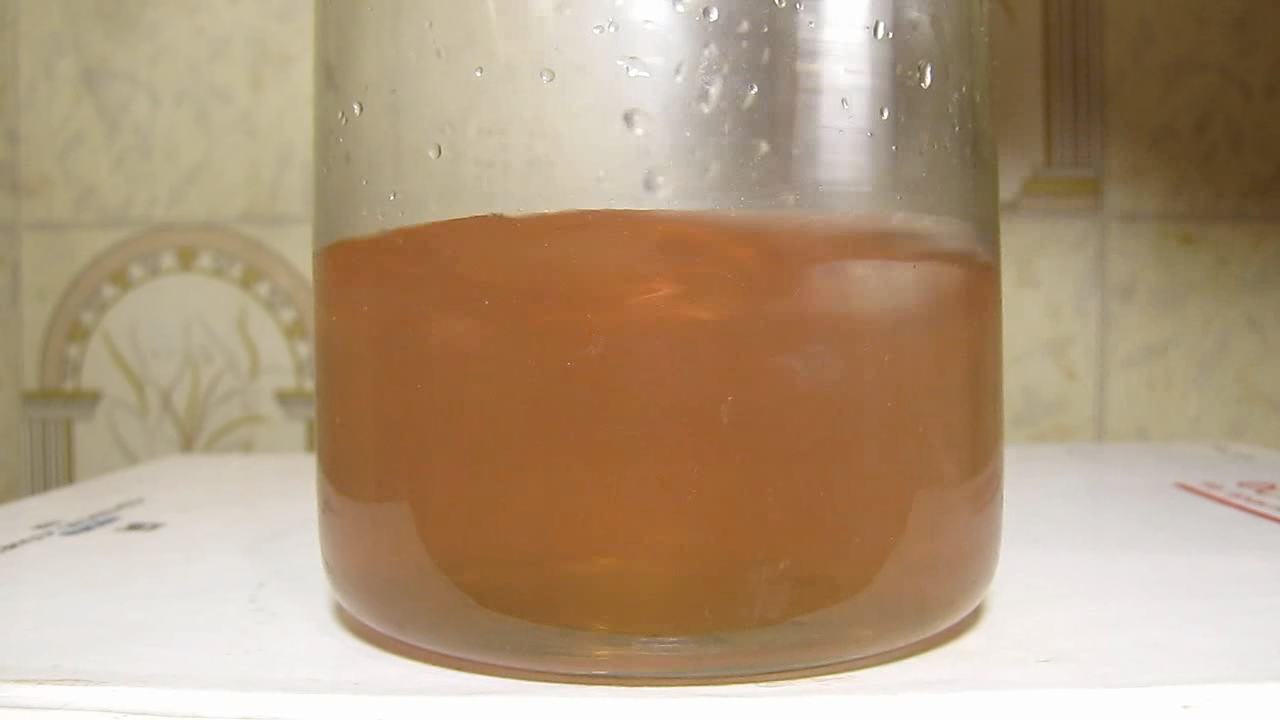
|

|

|

|
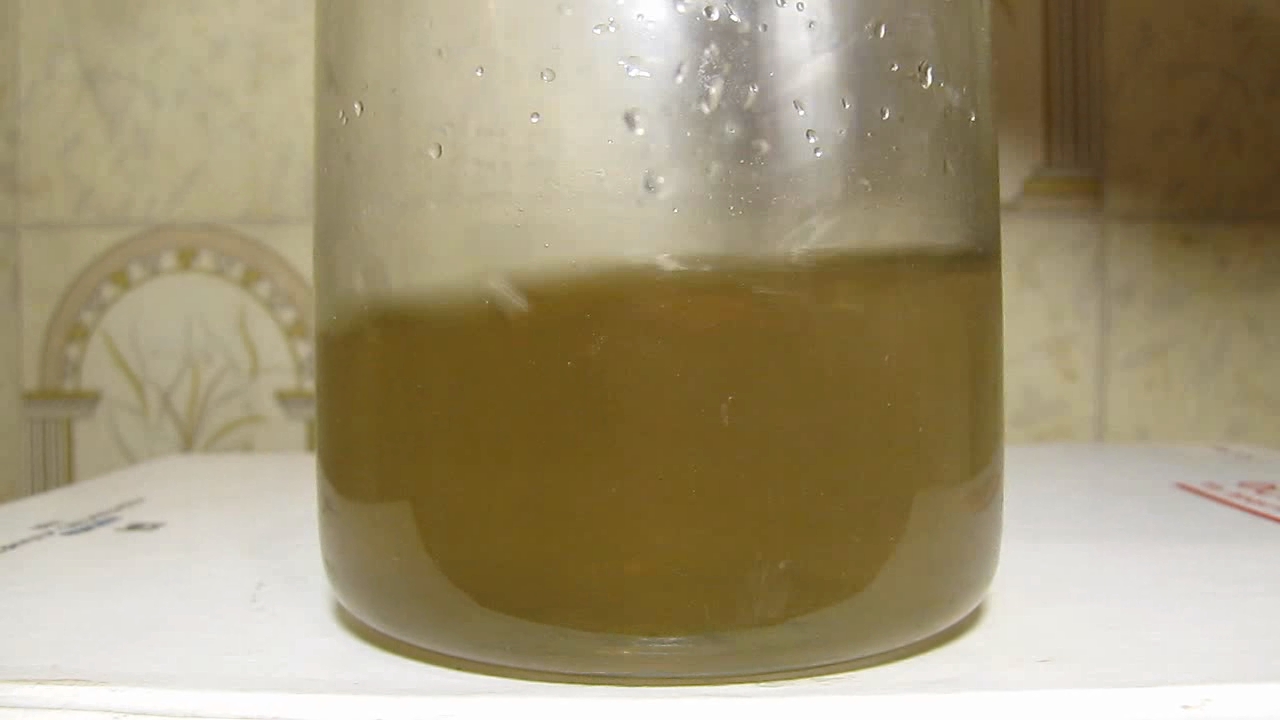
|
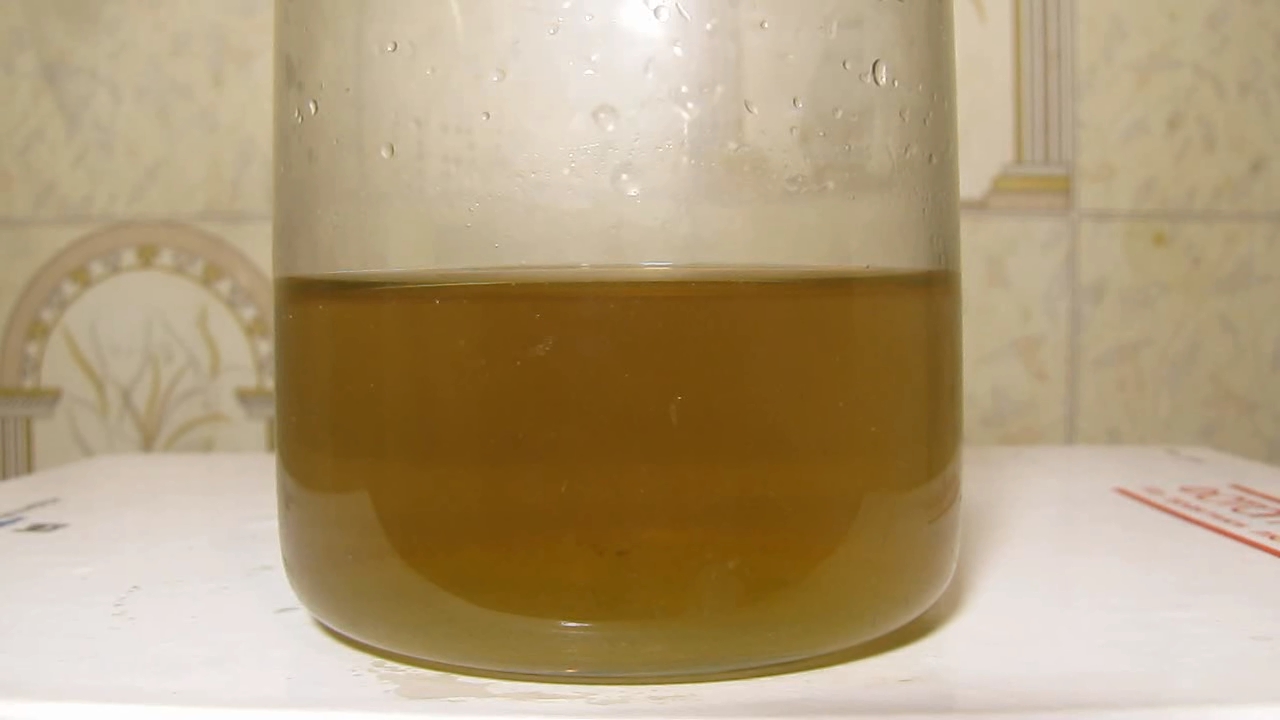
|